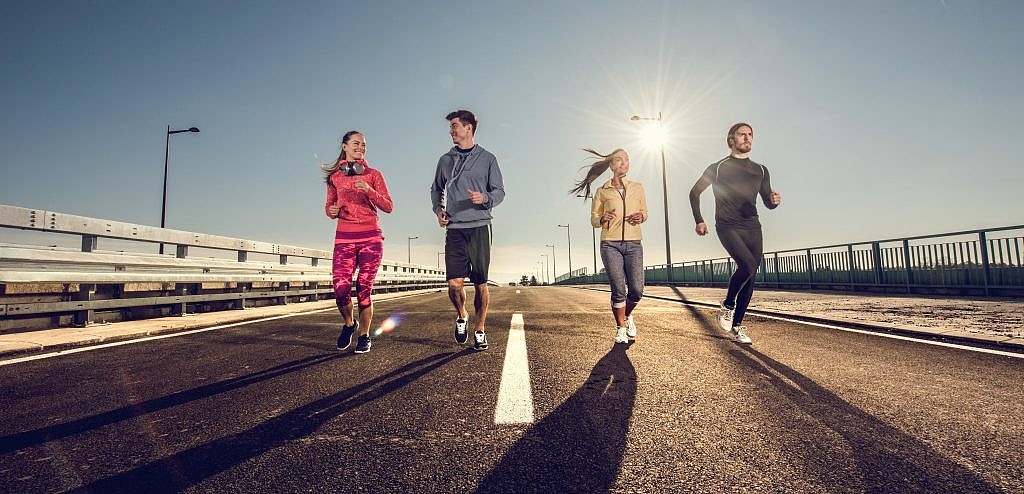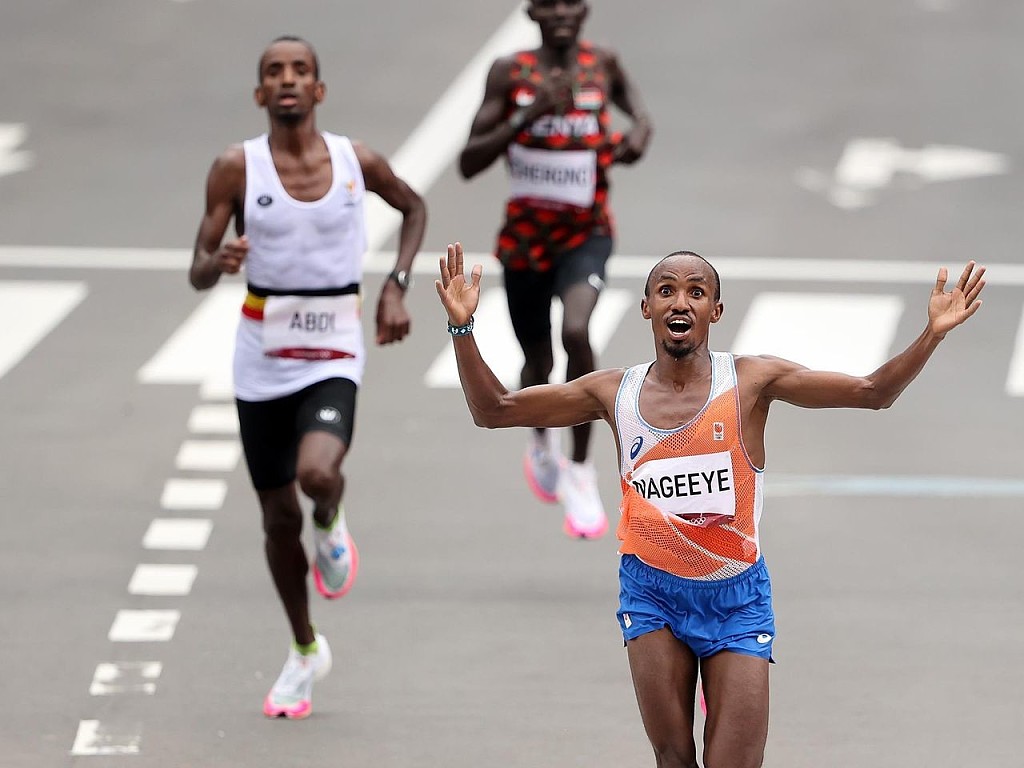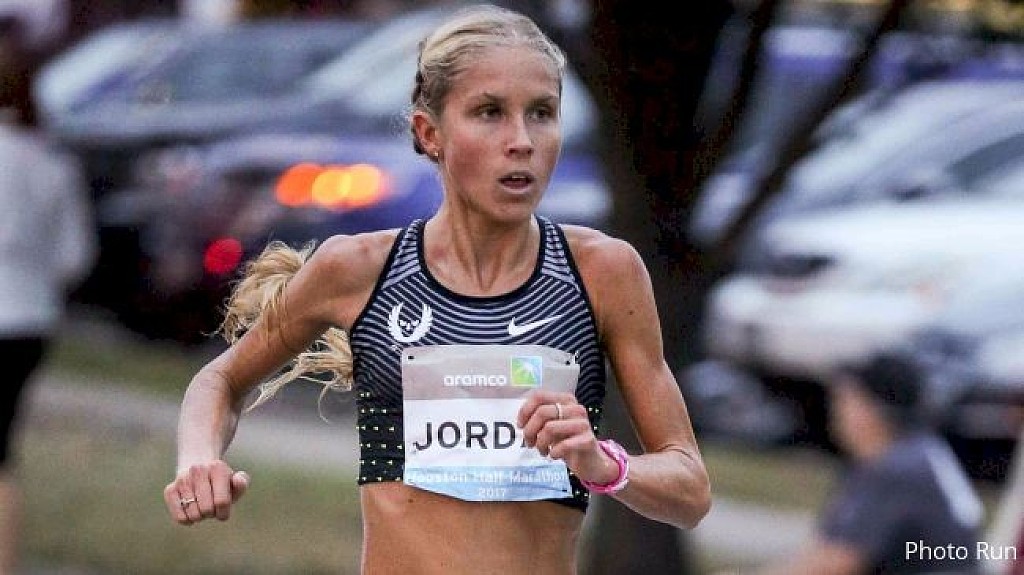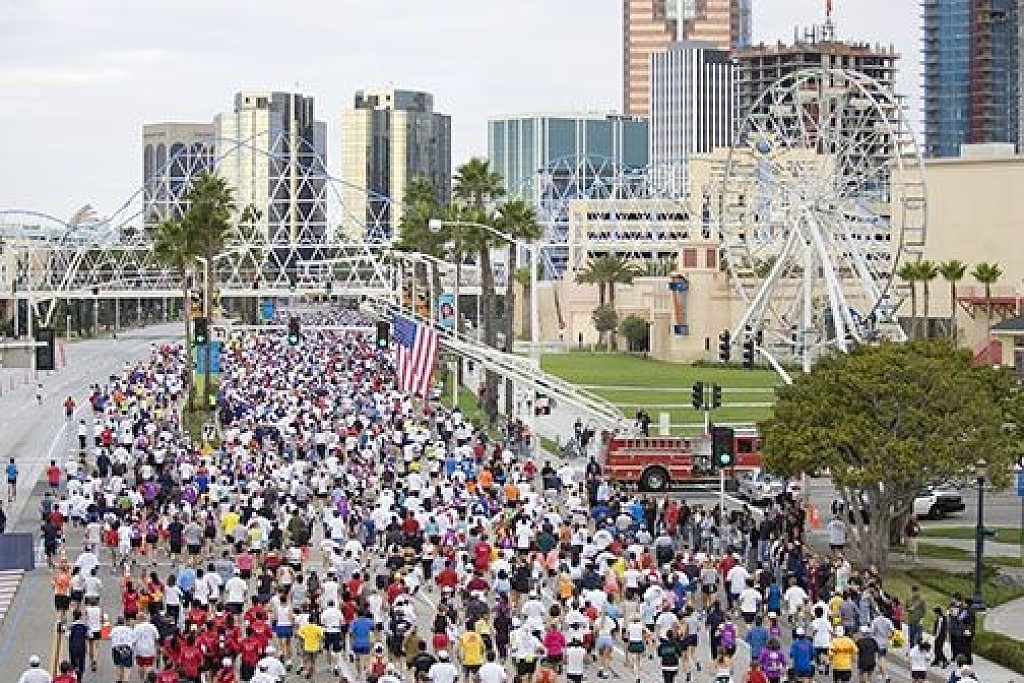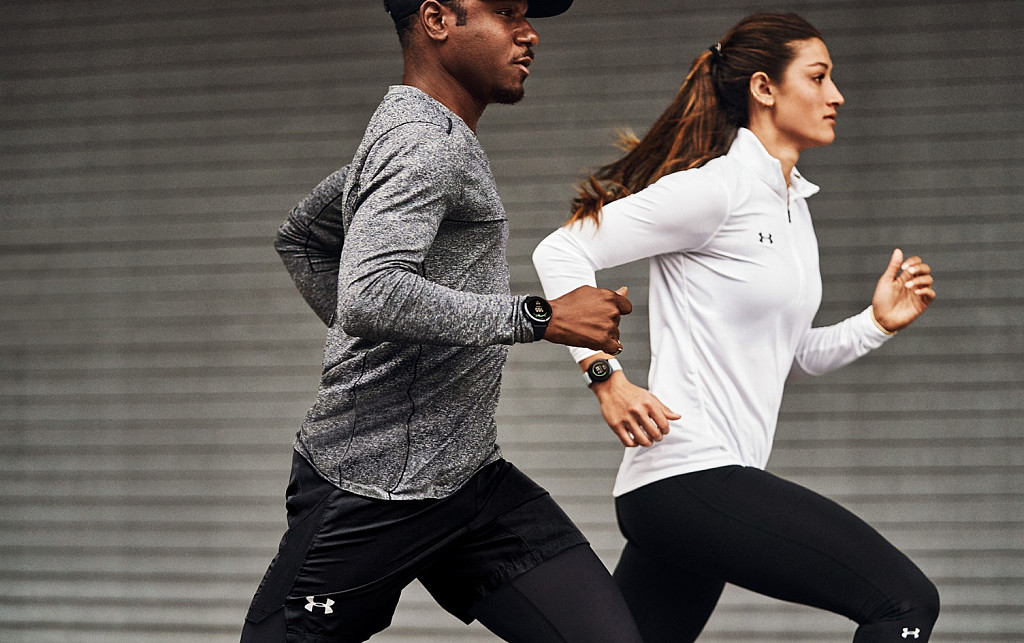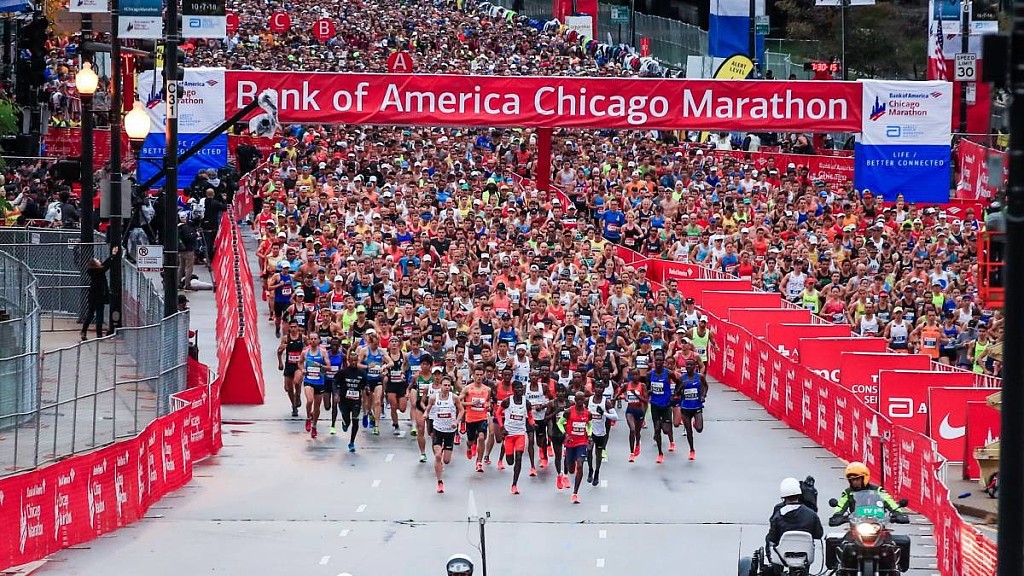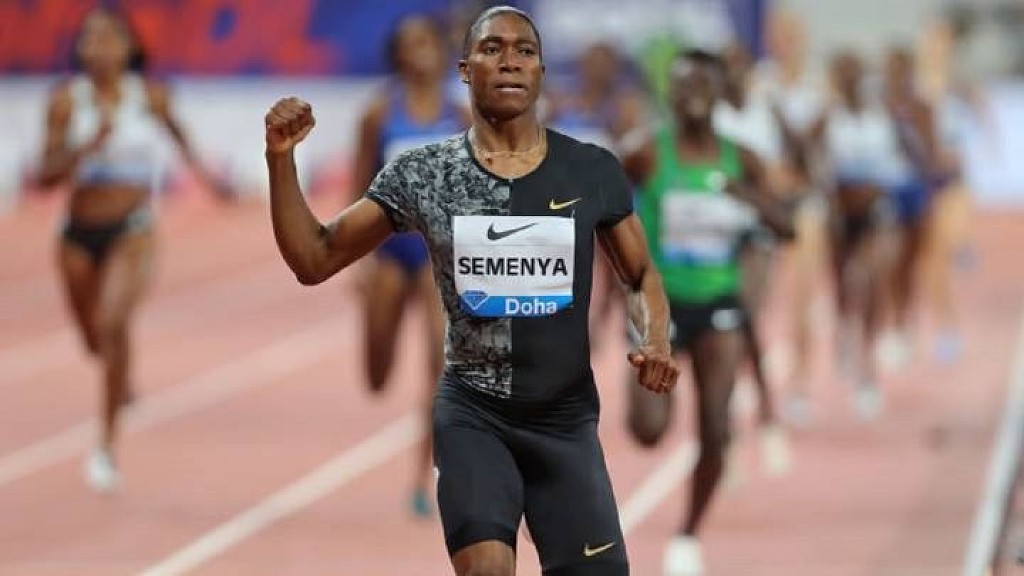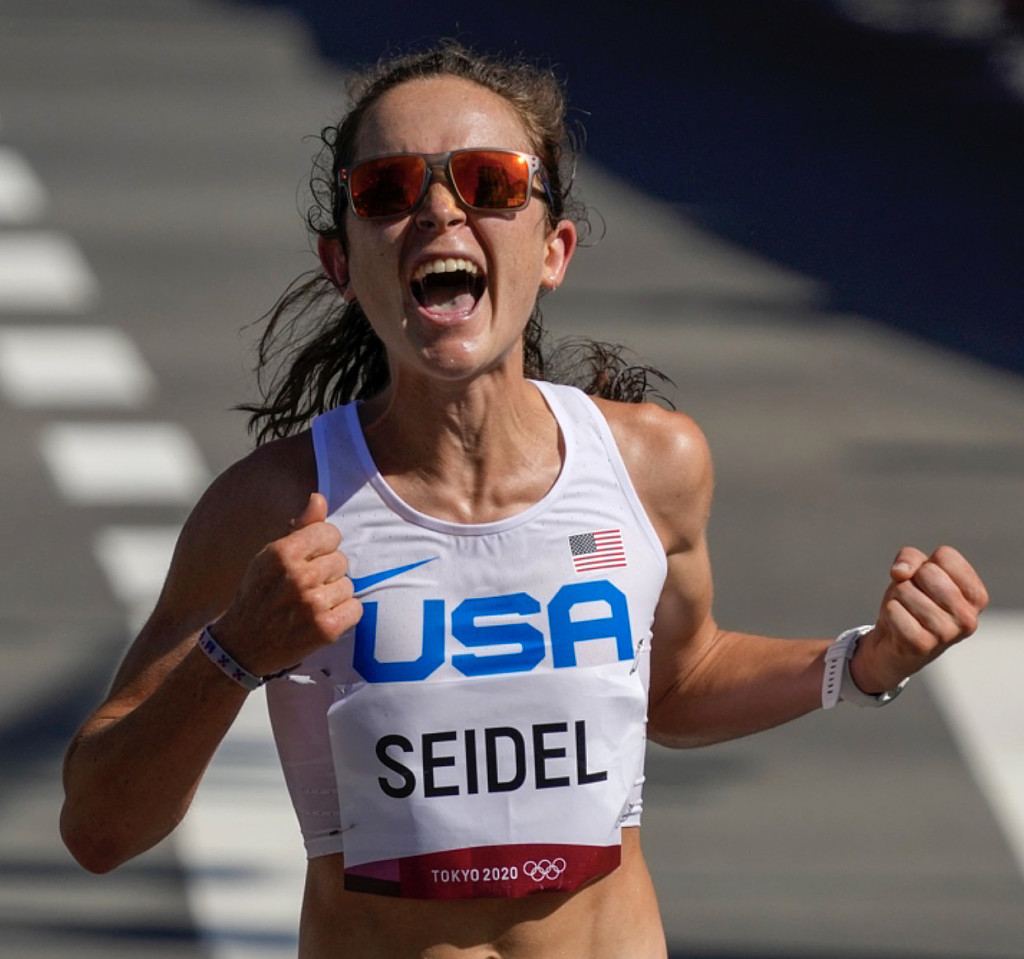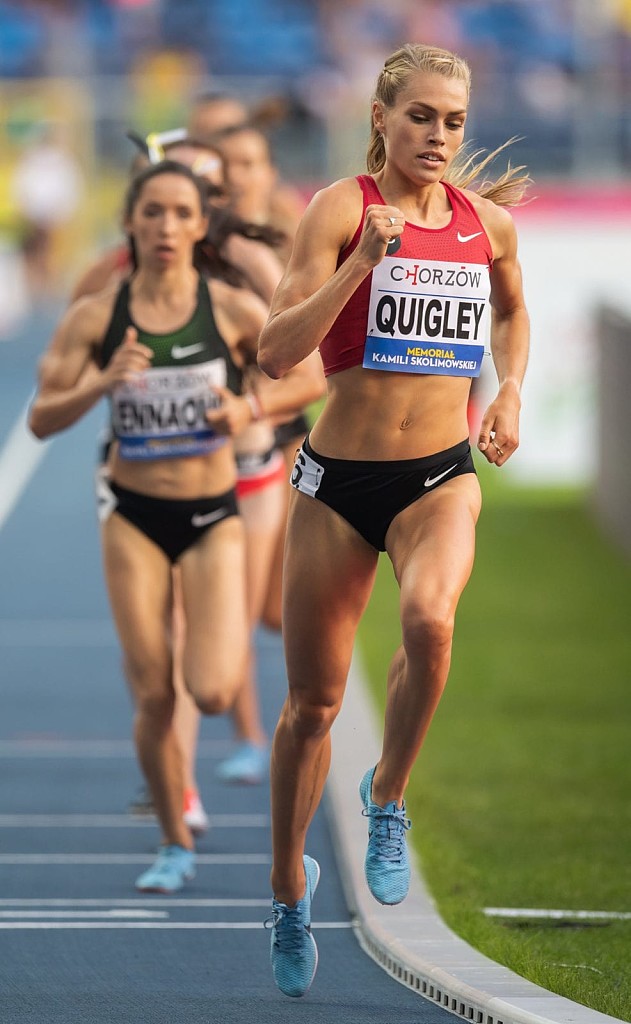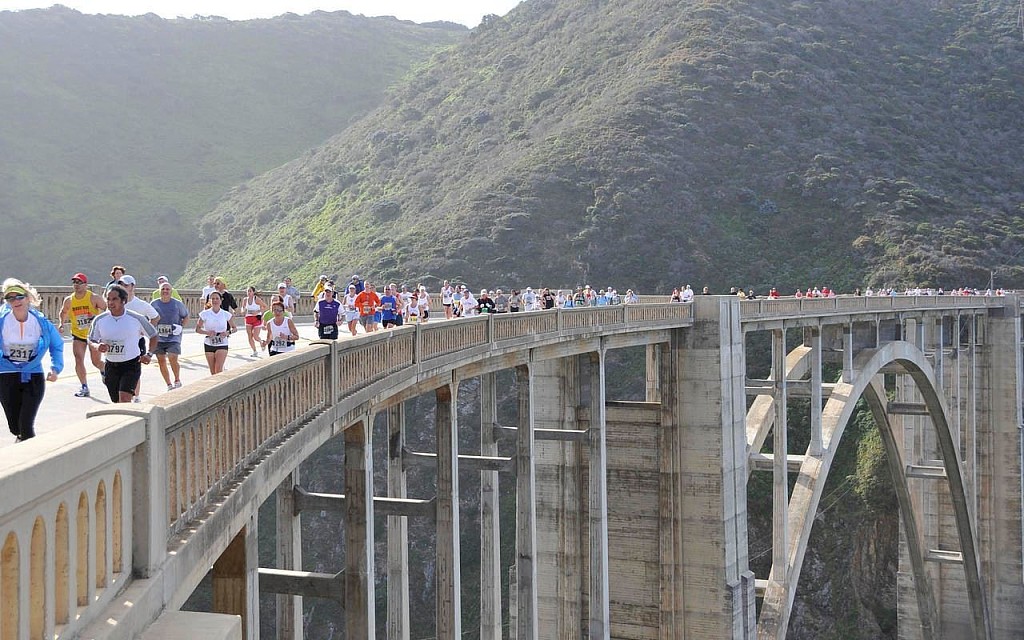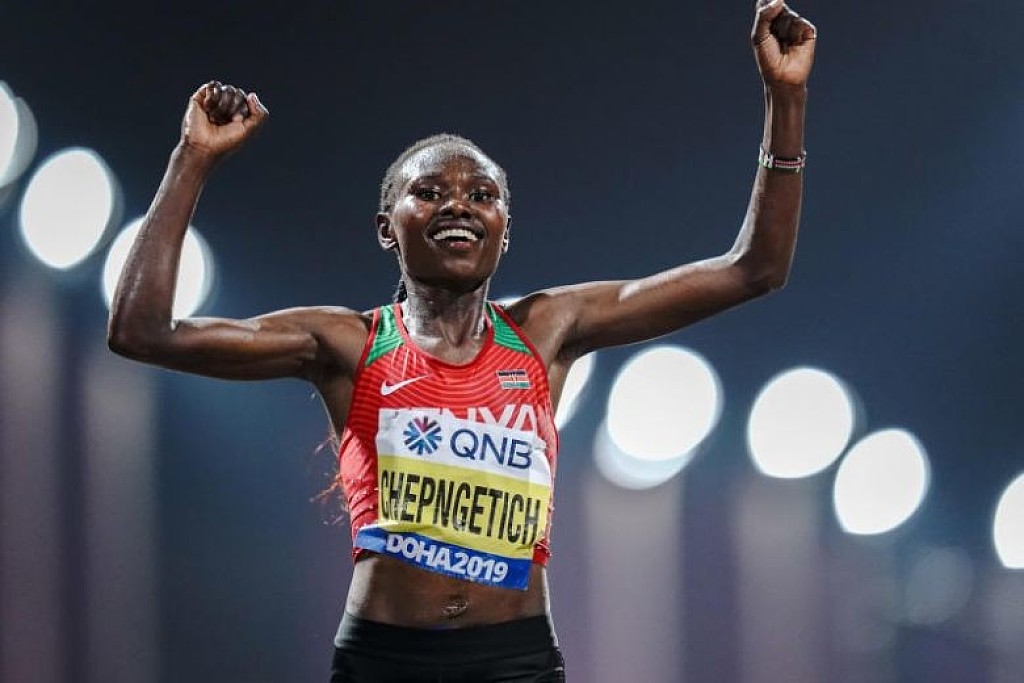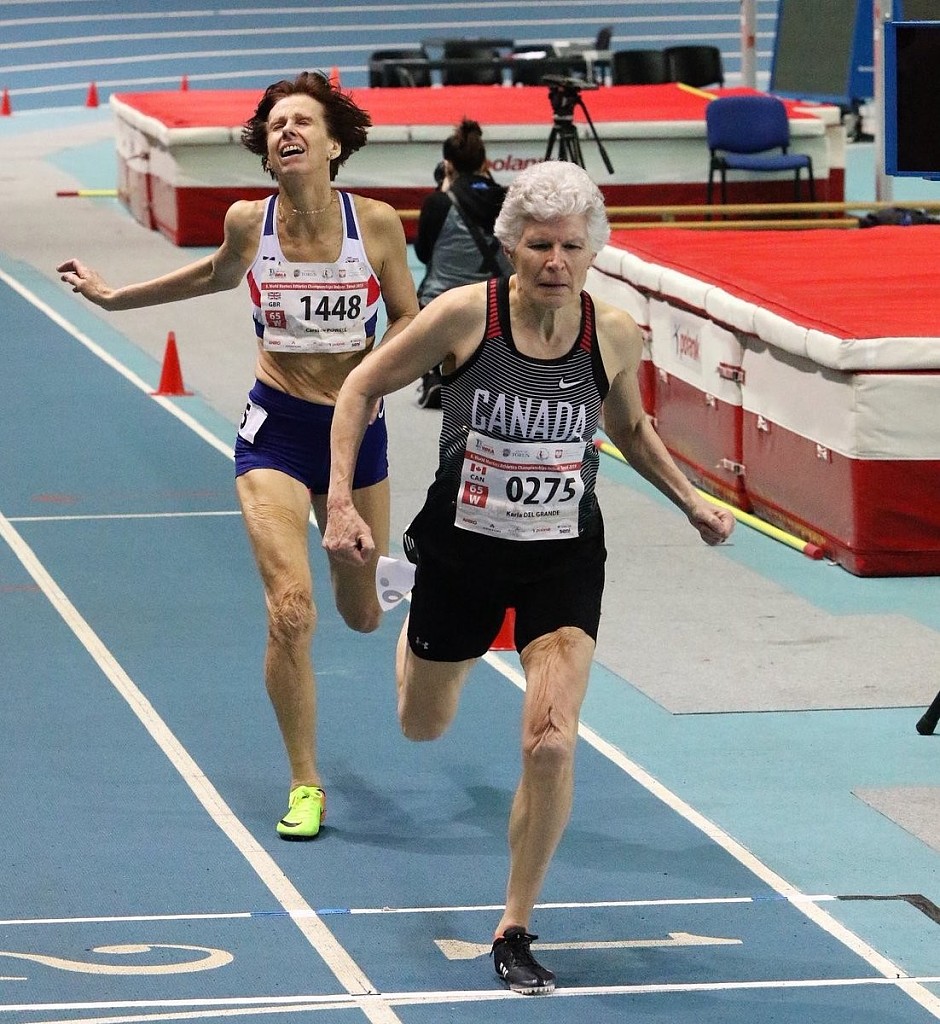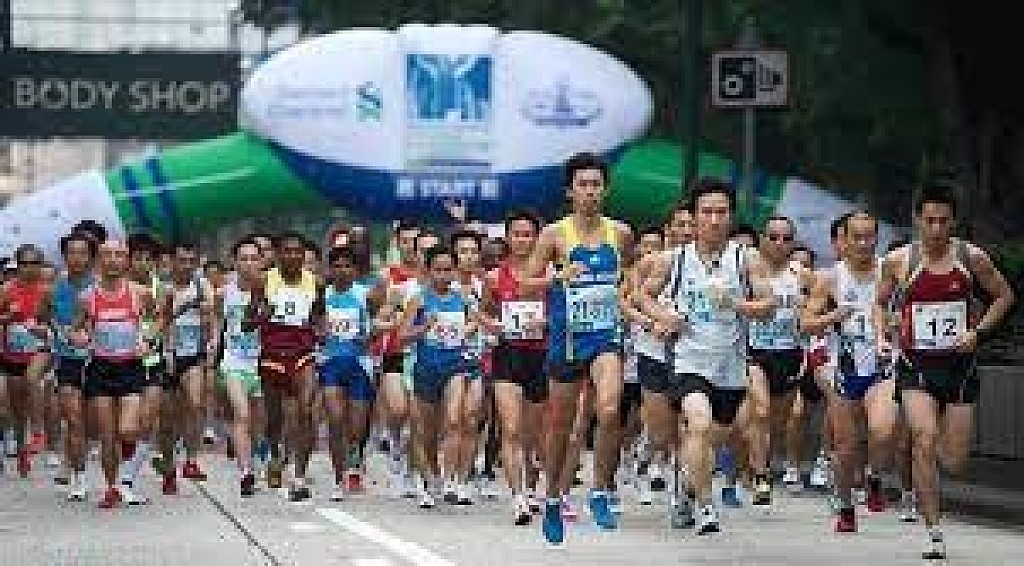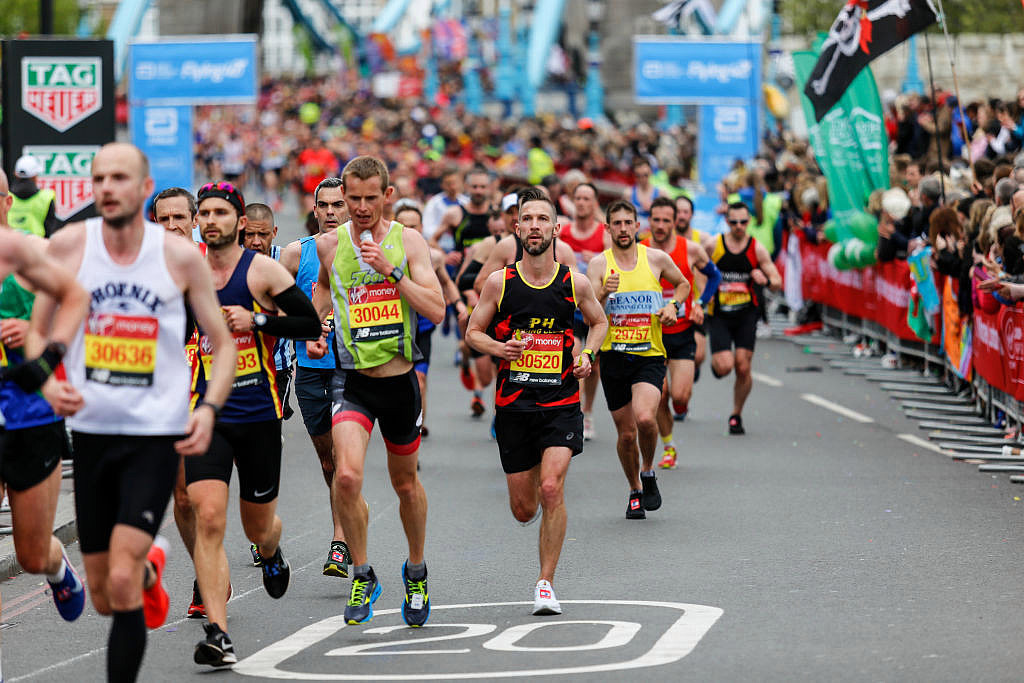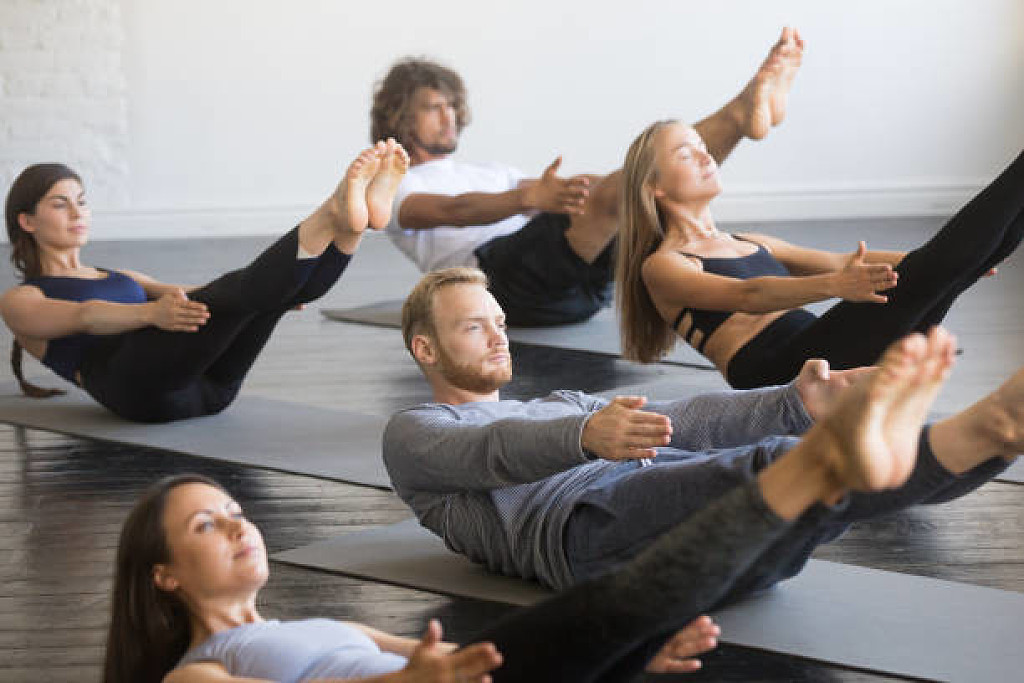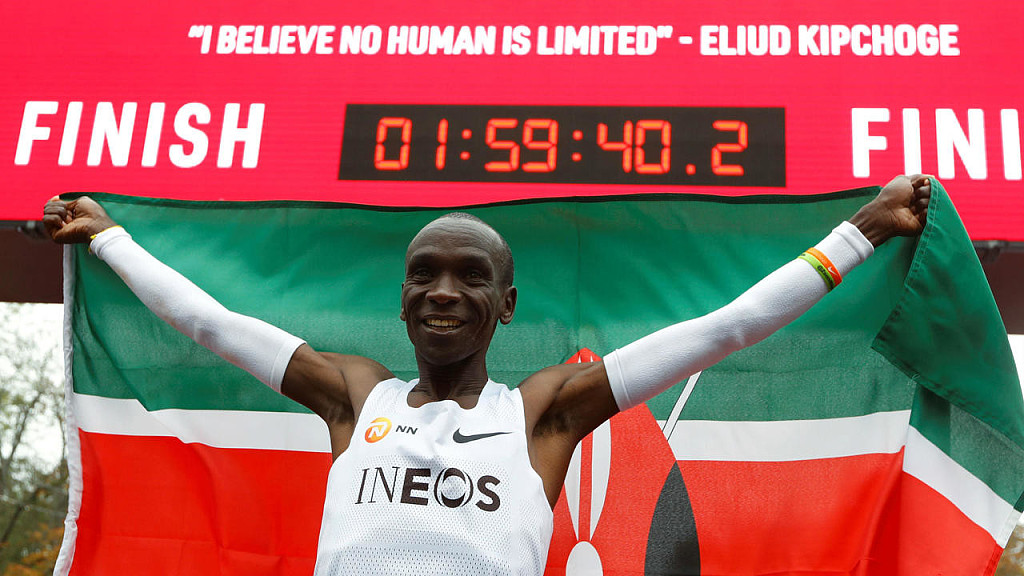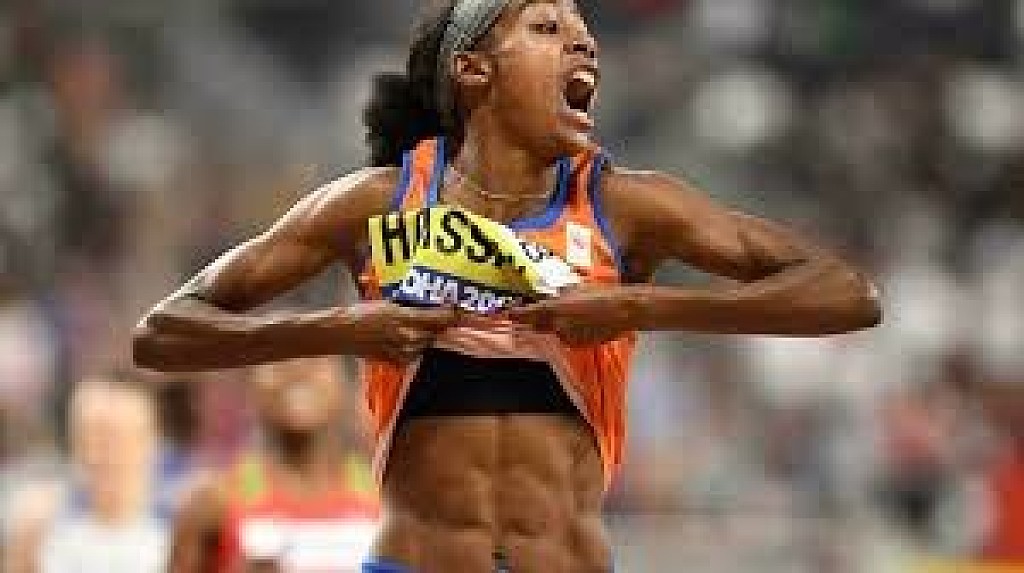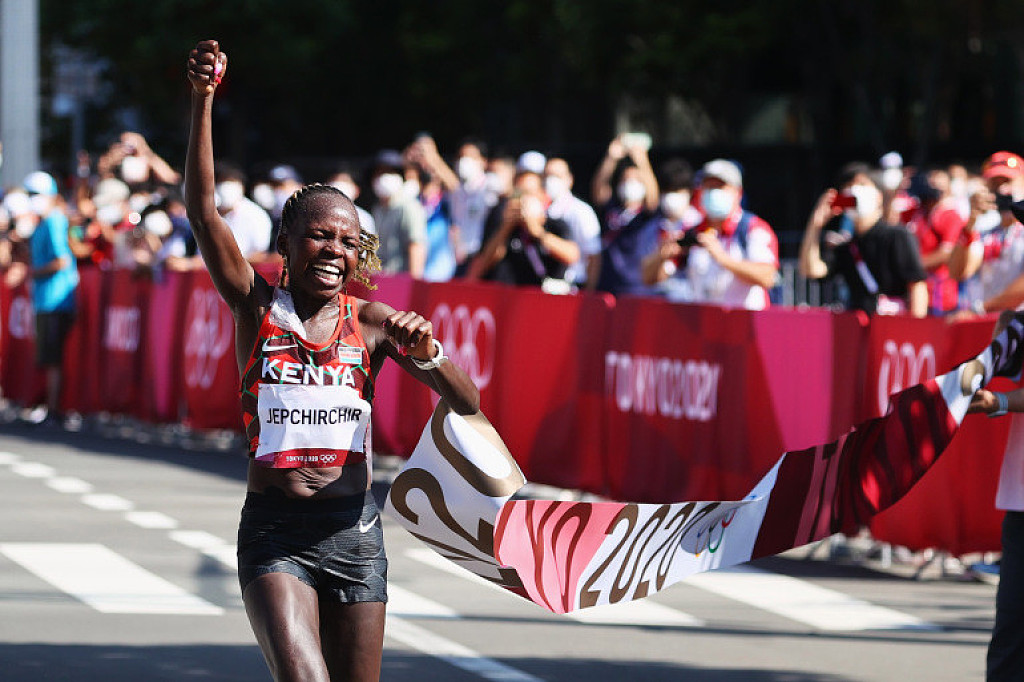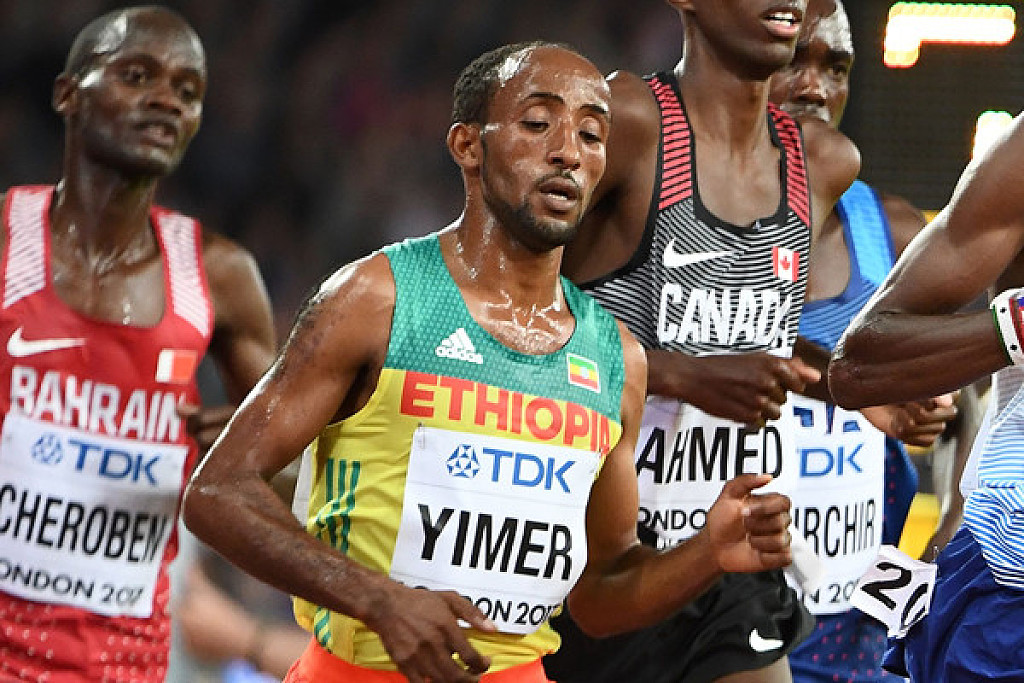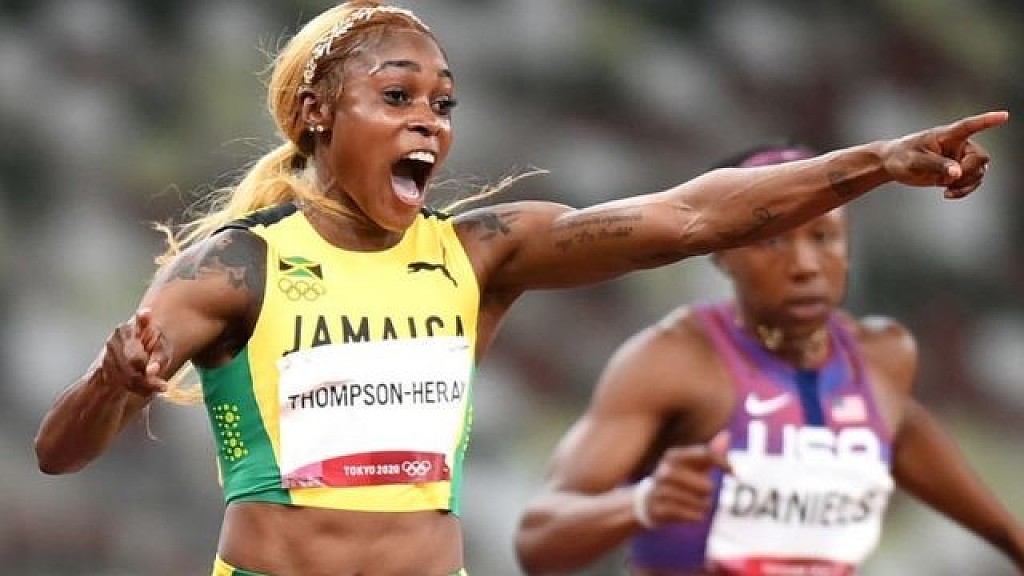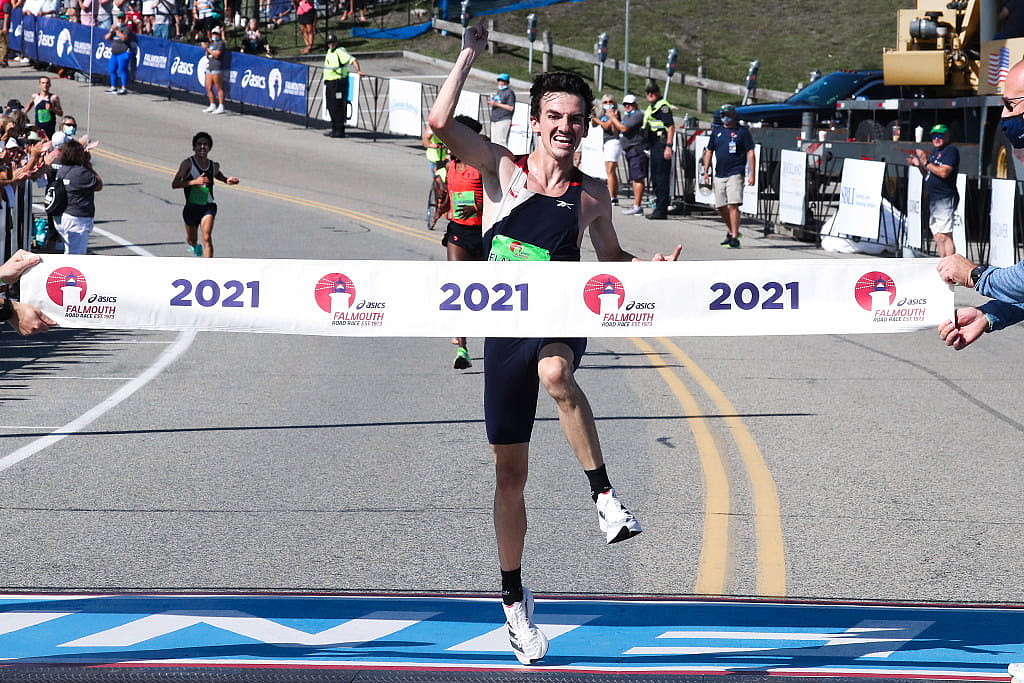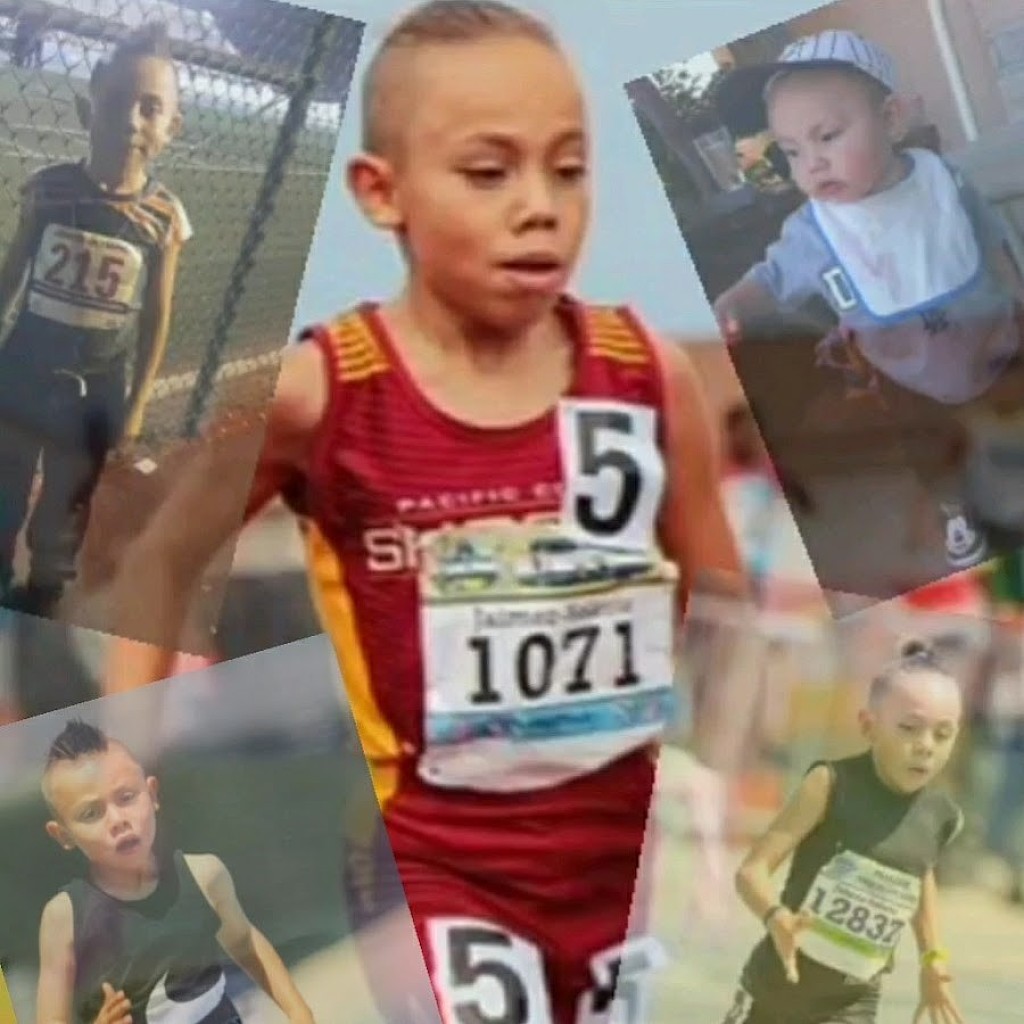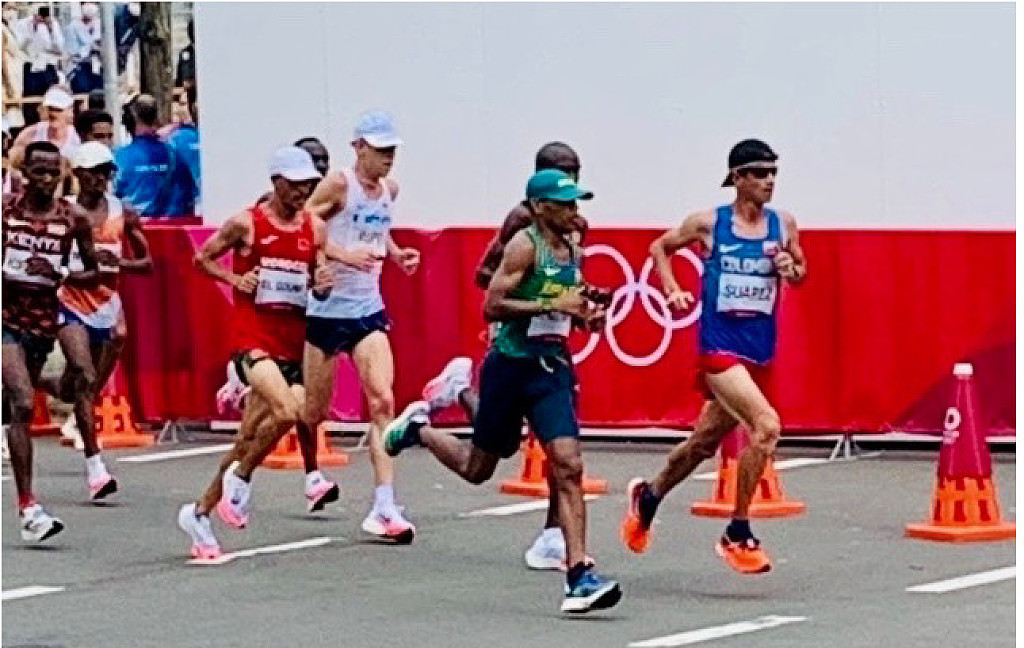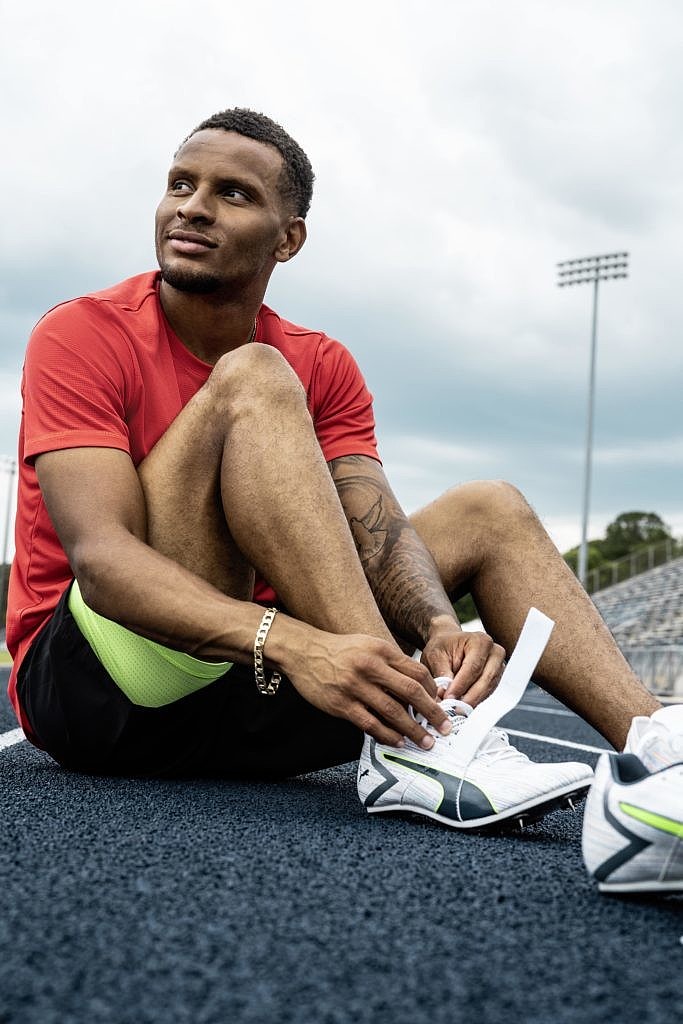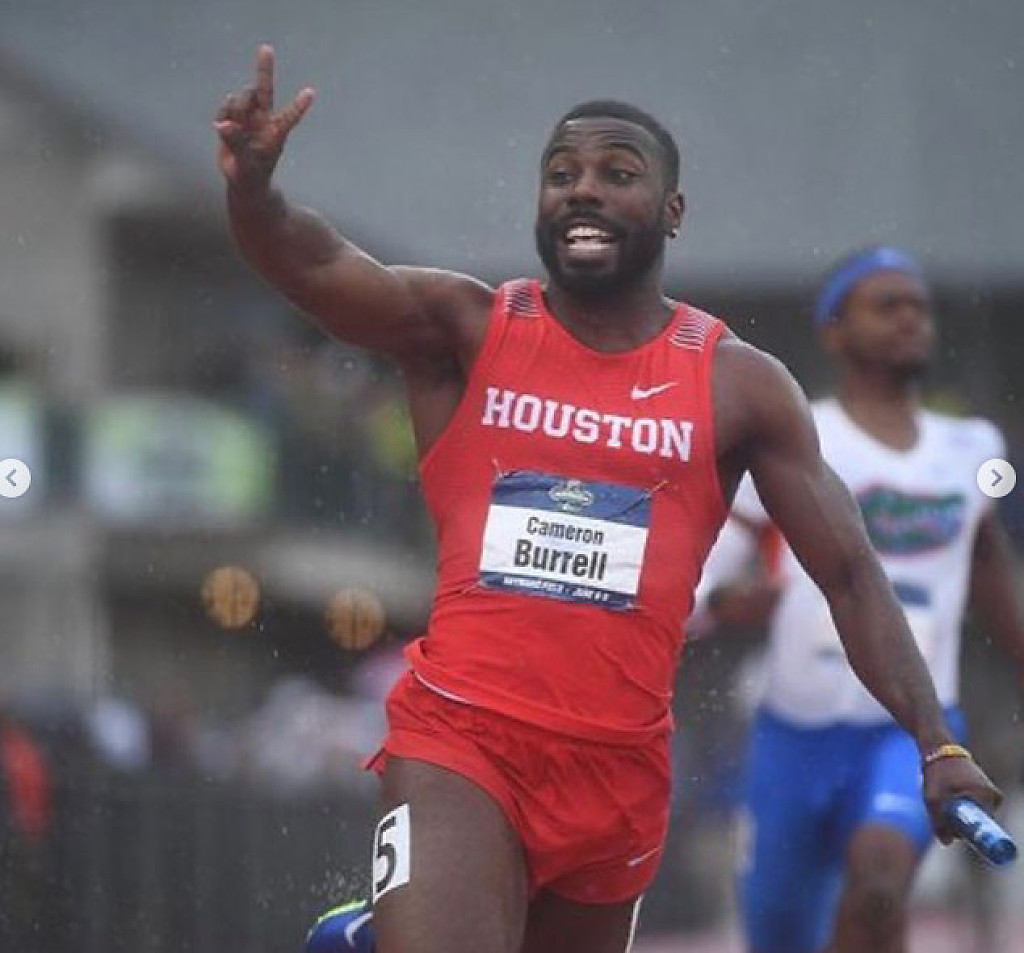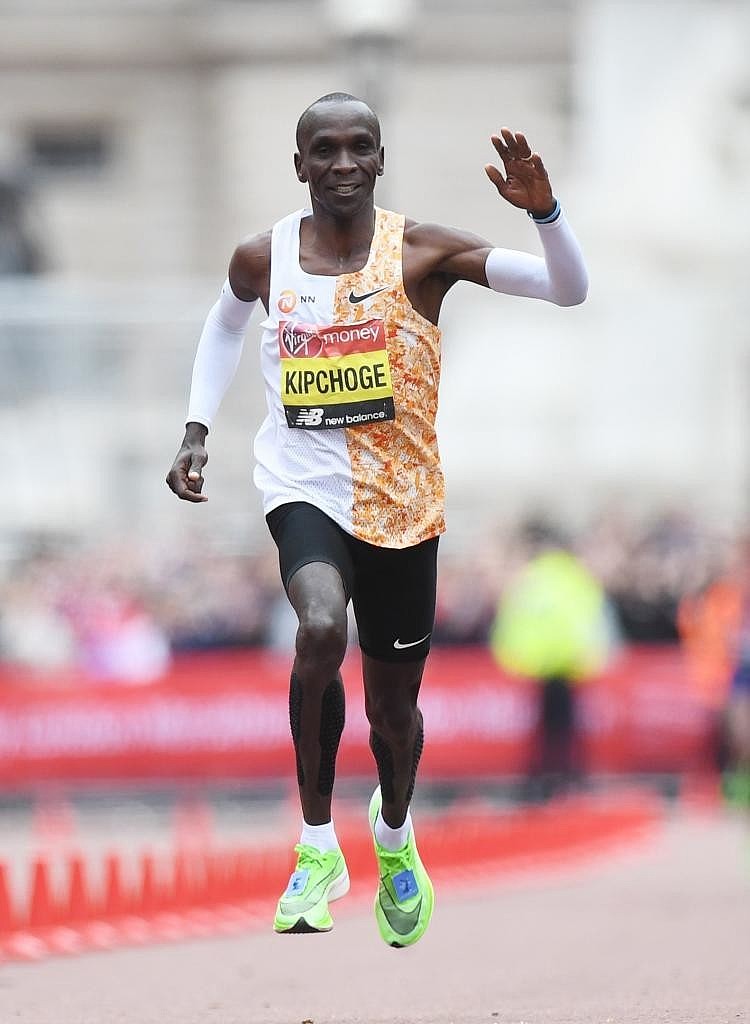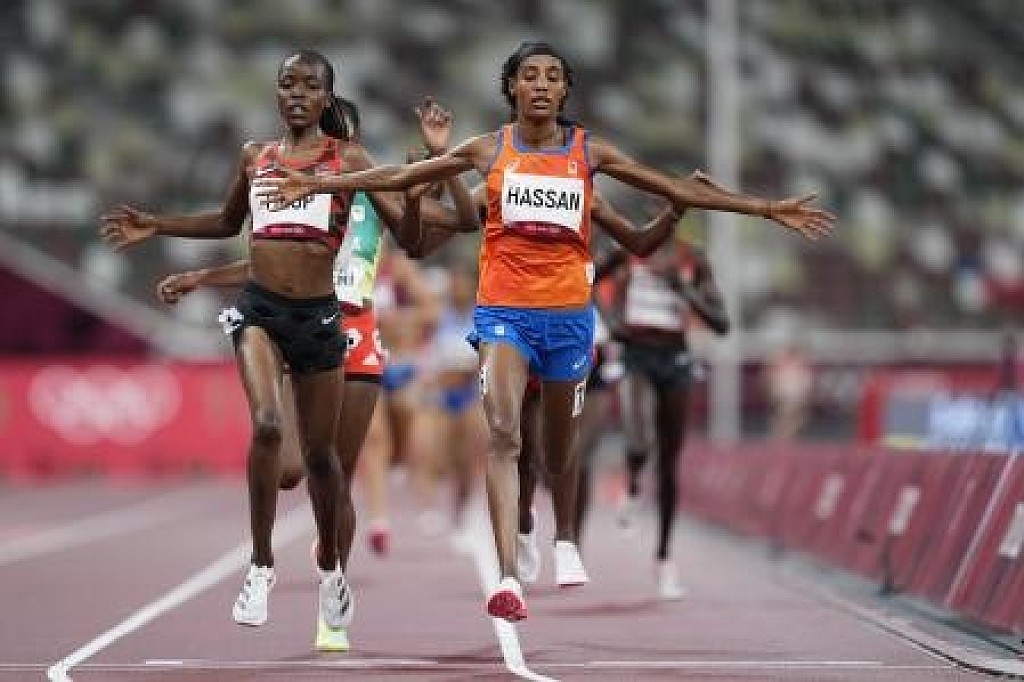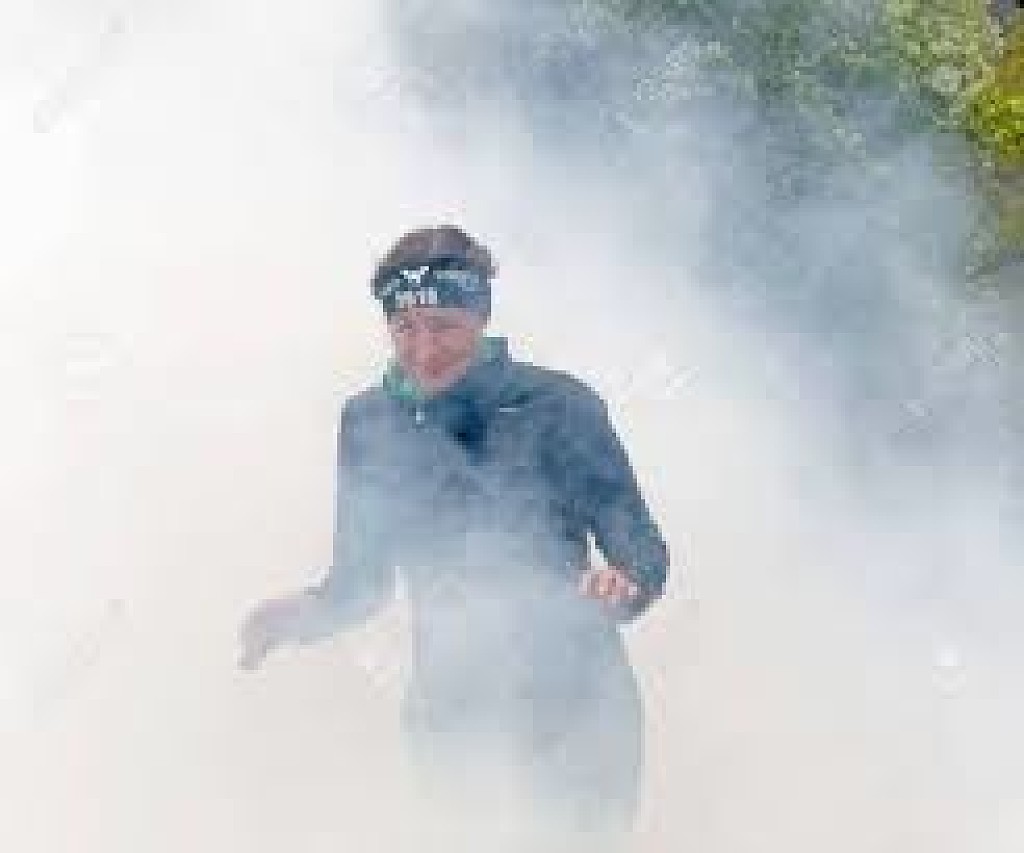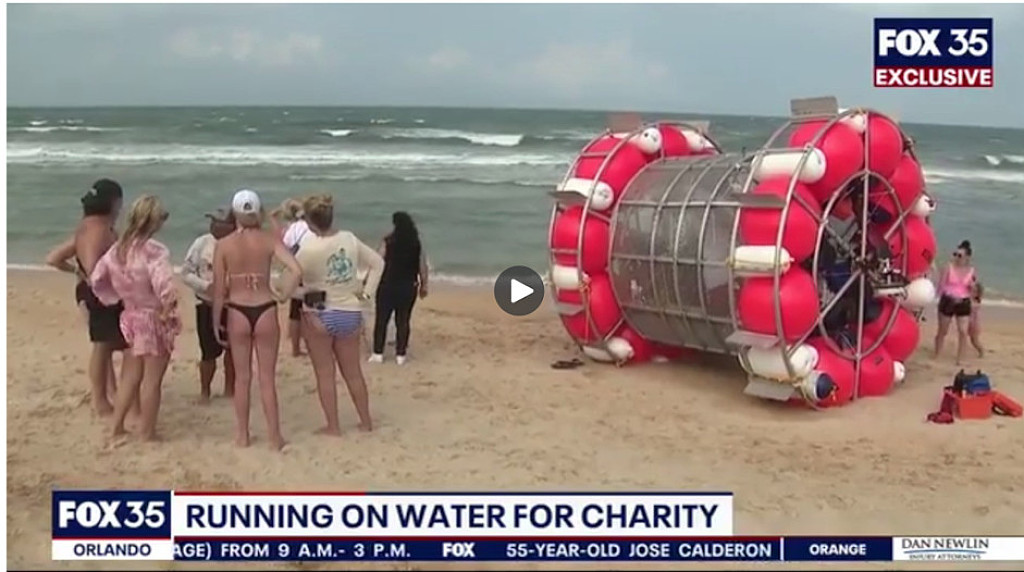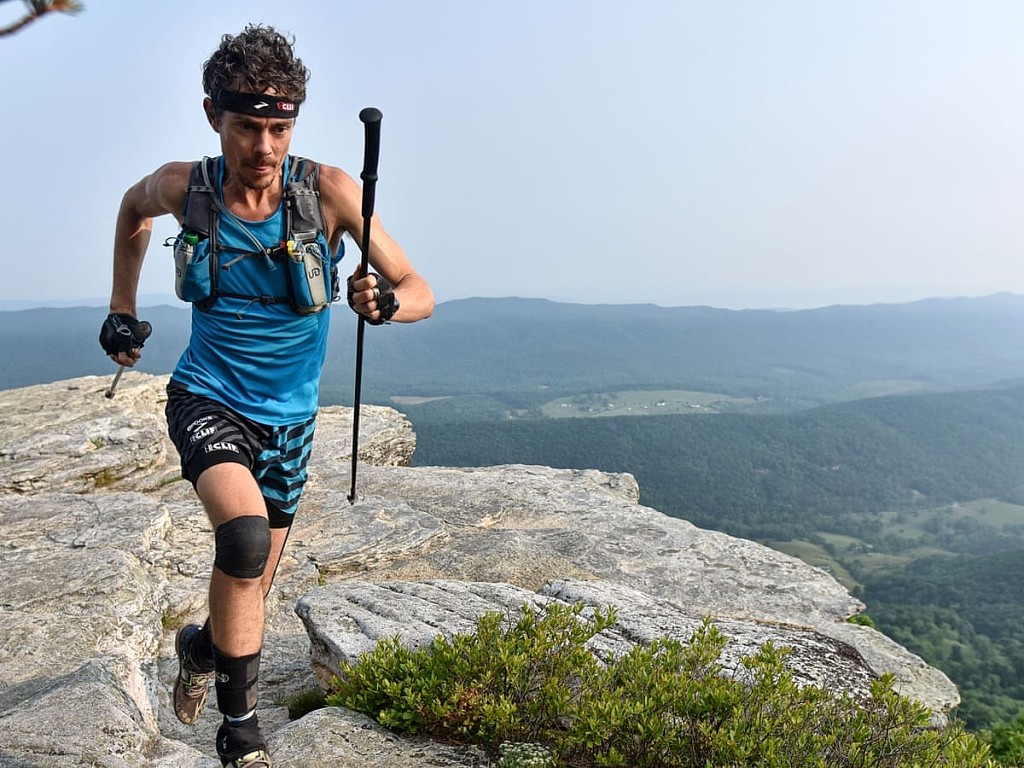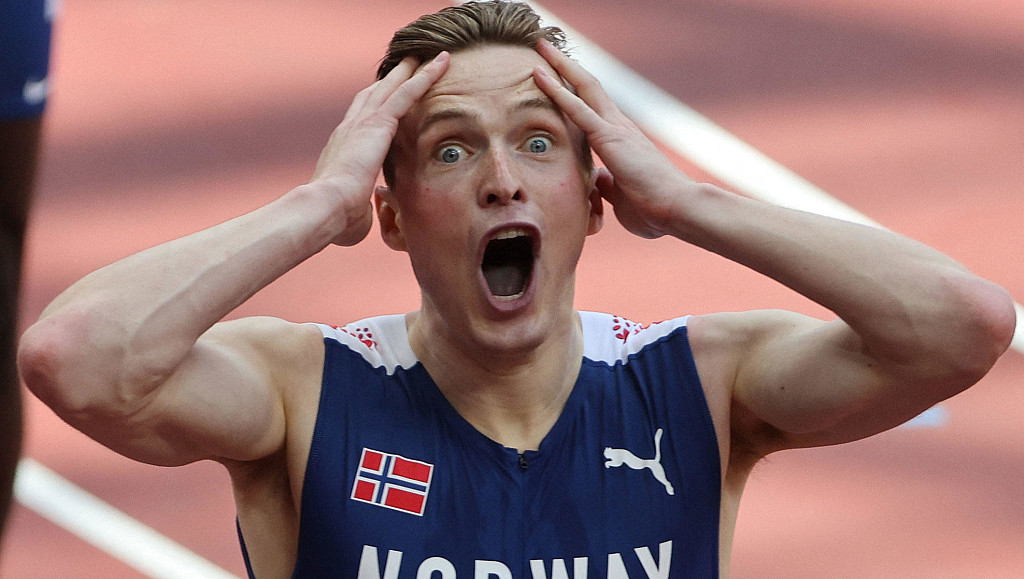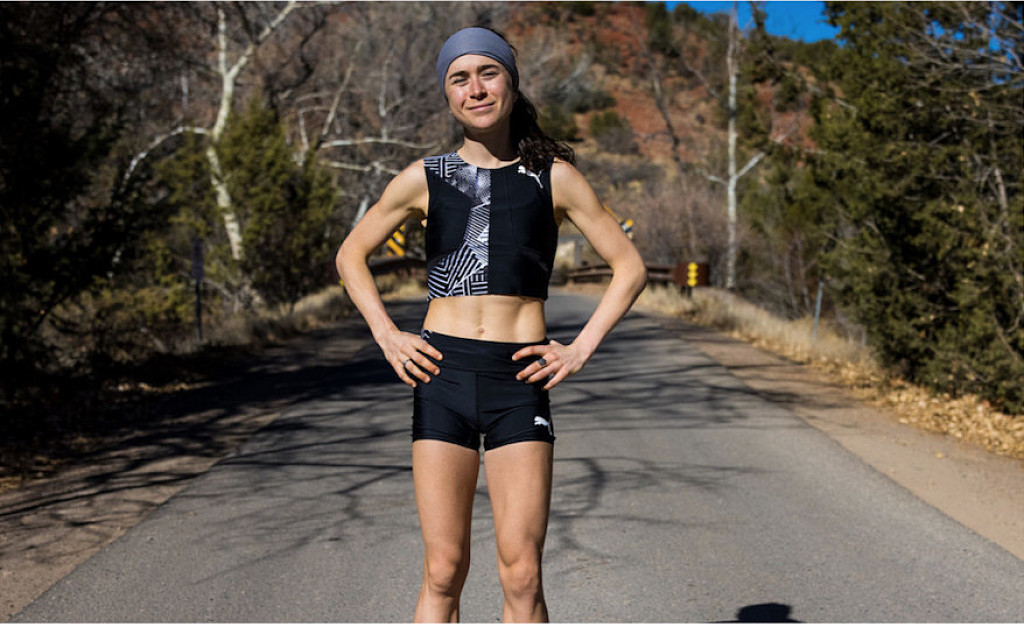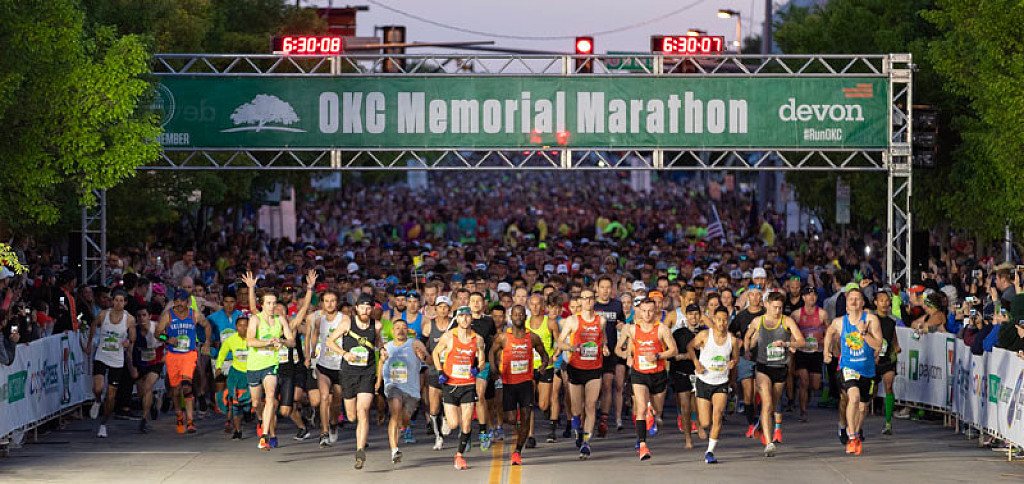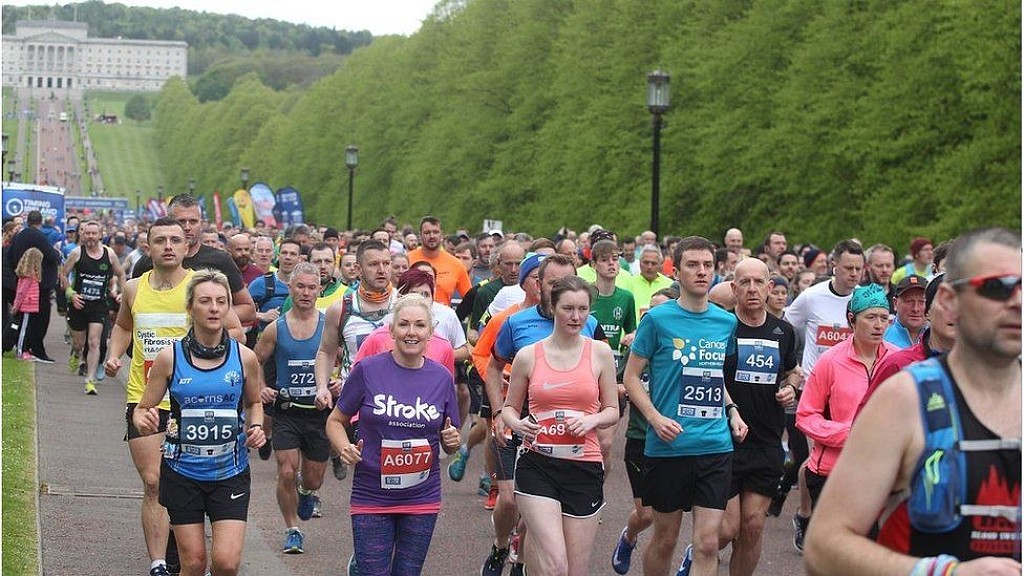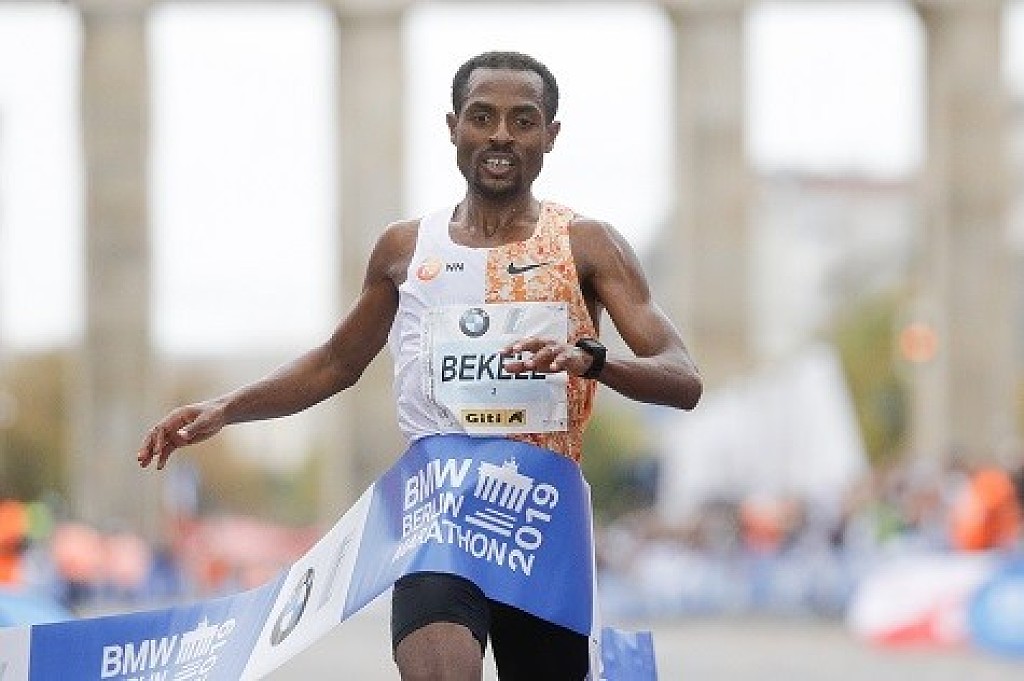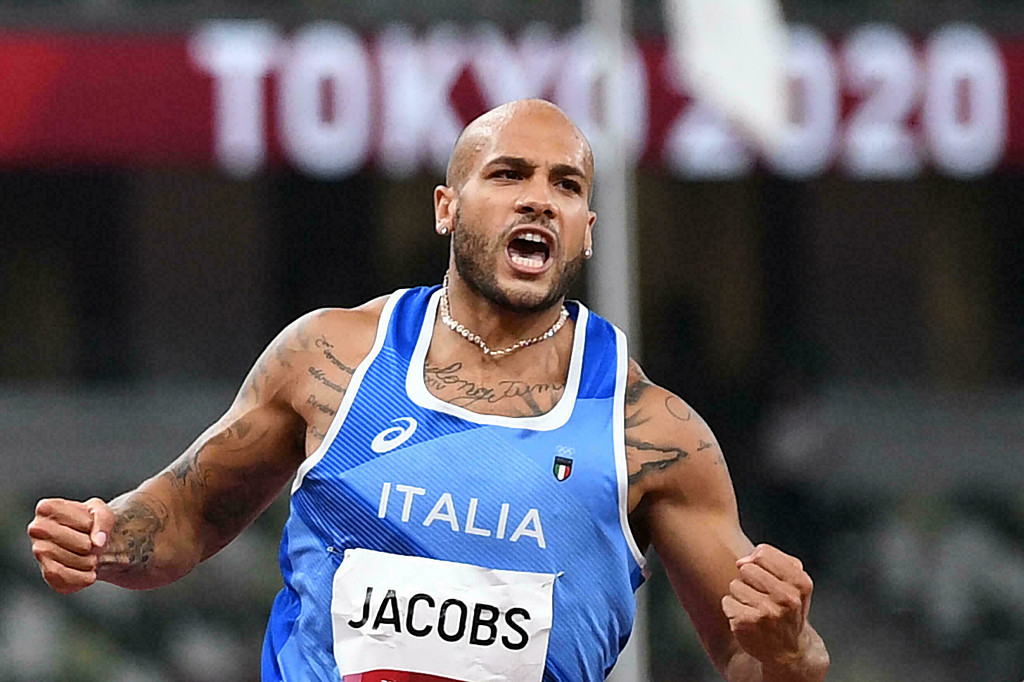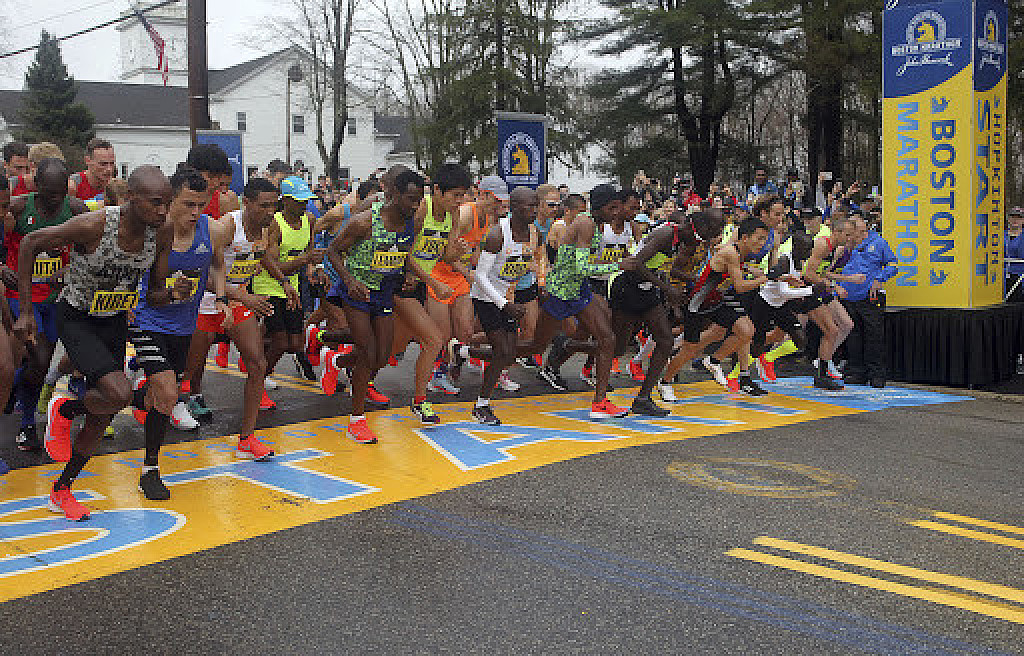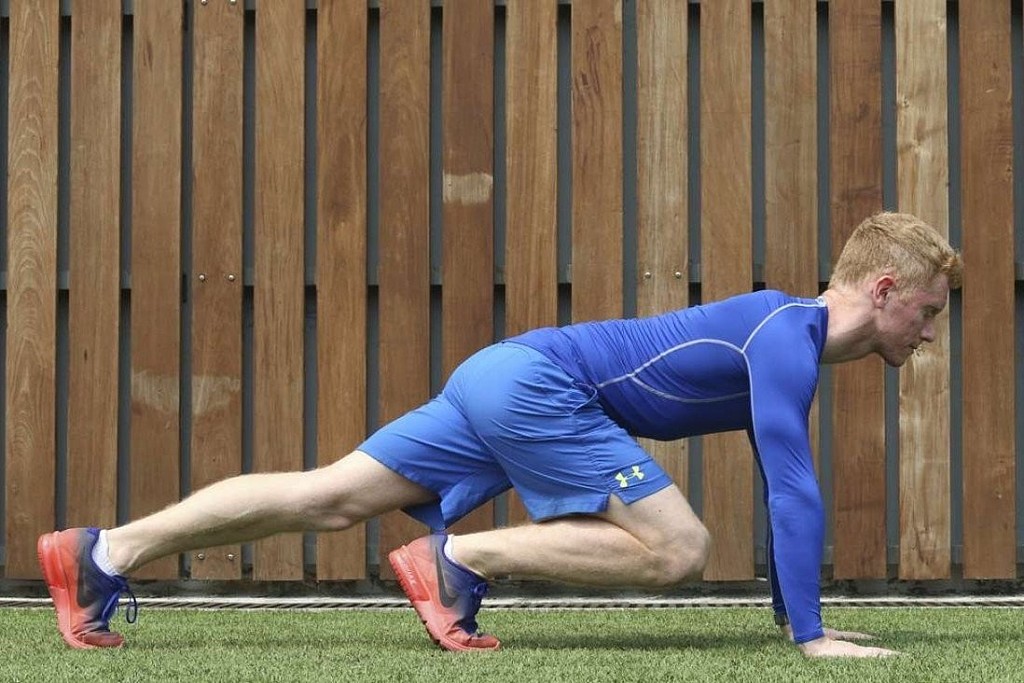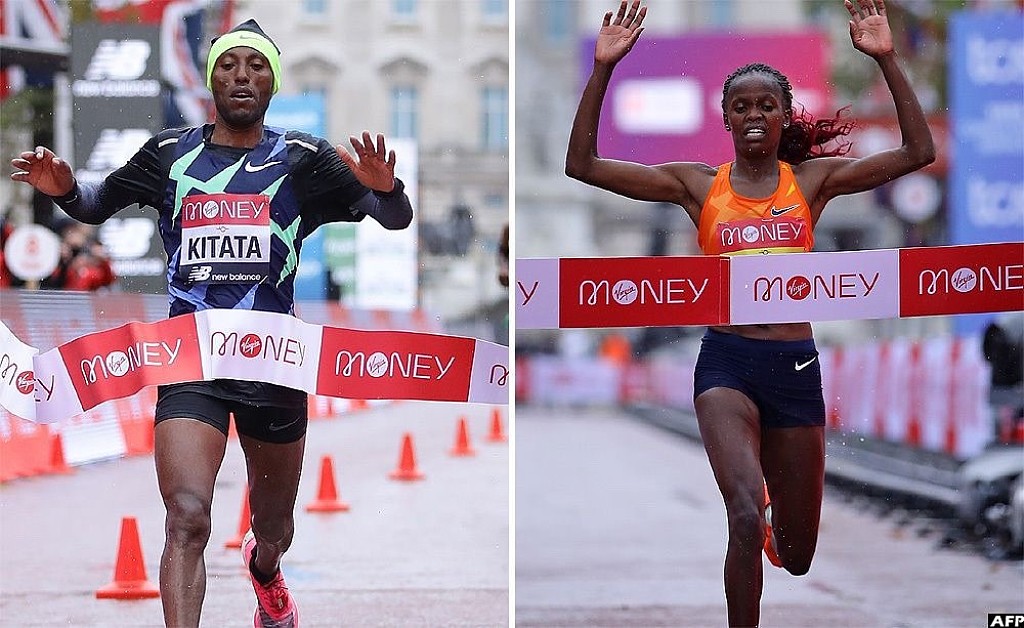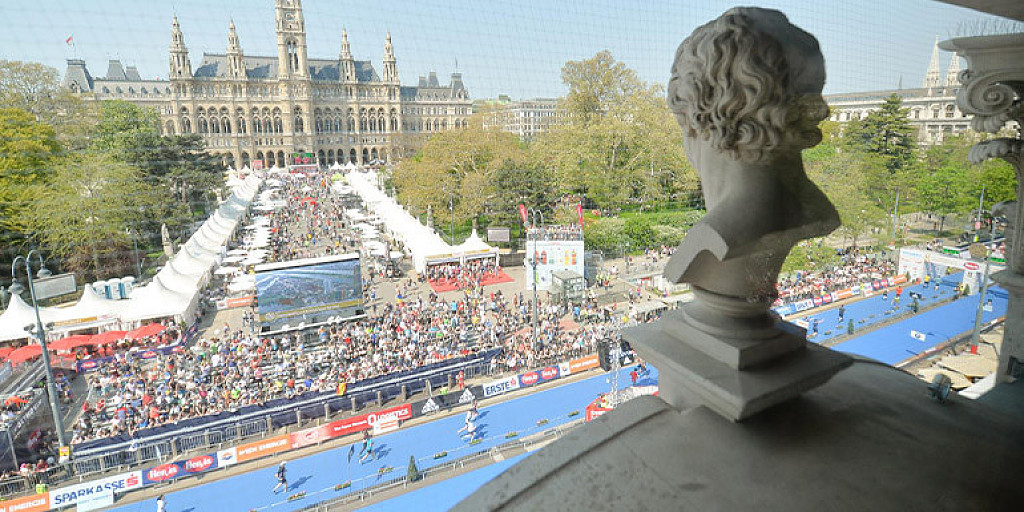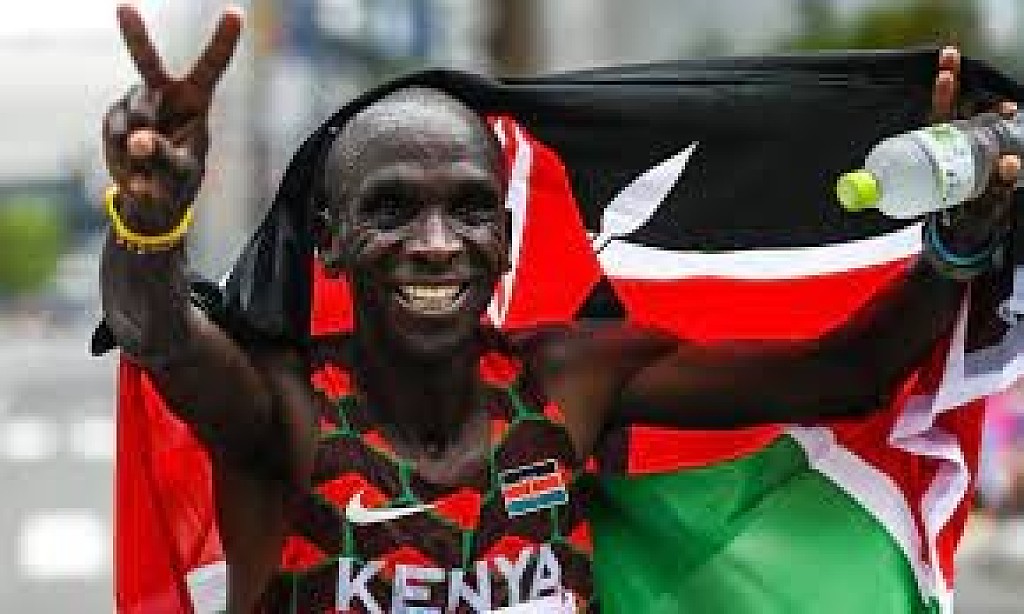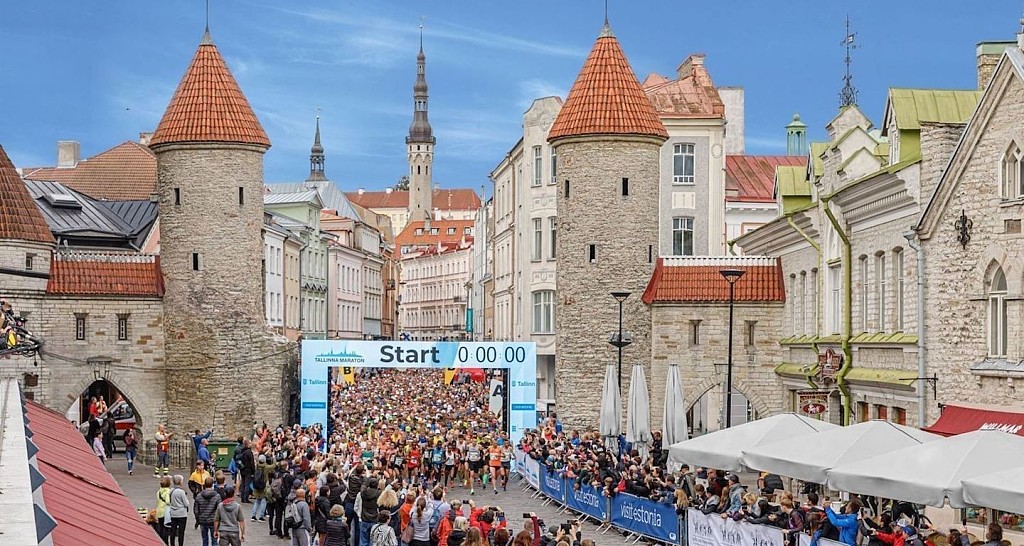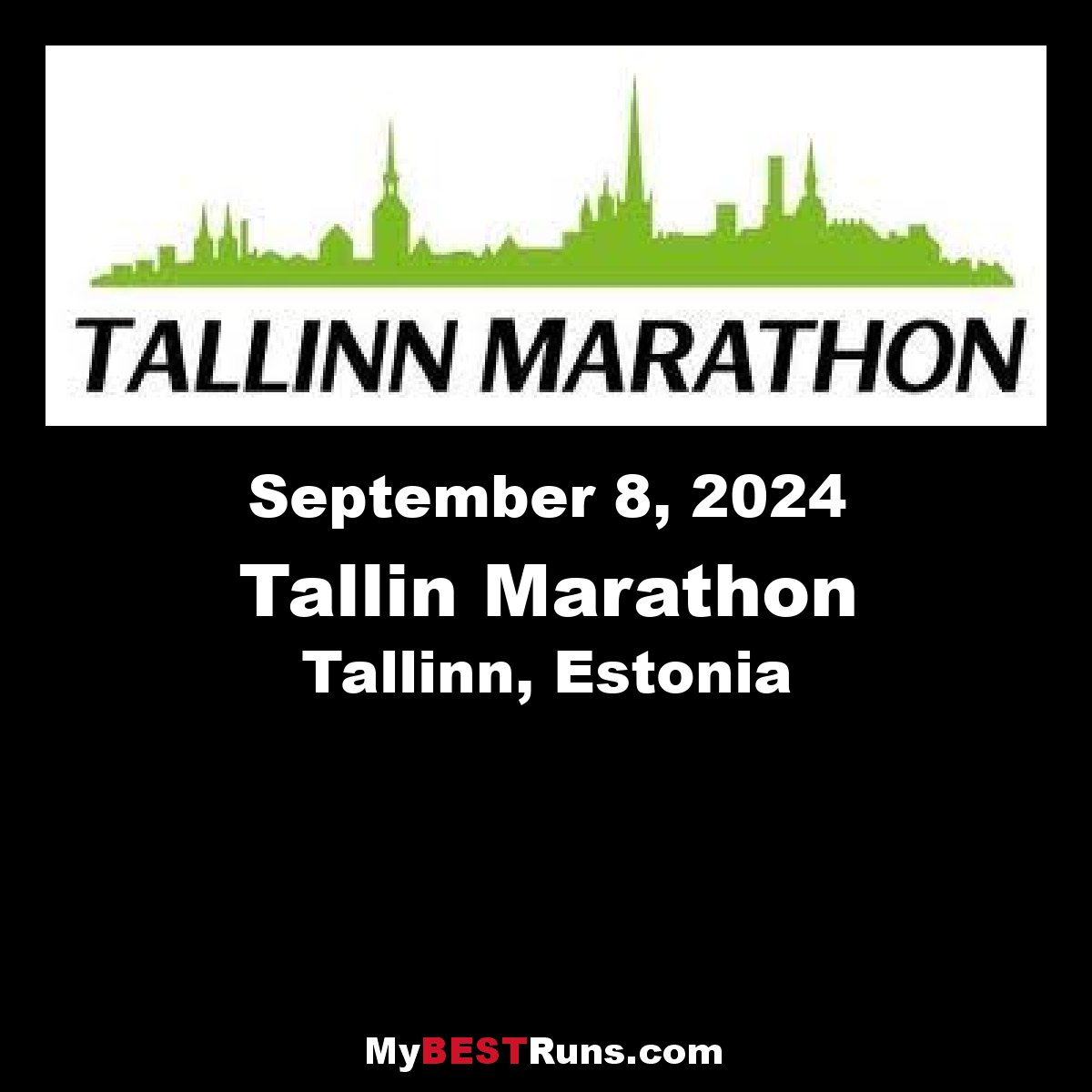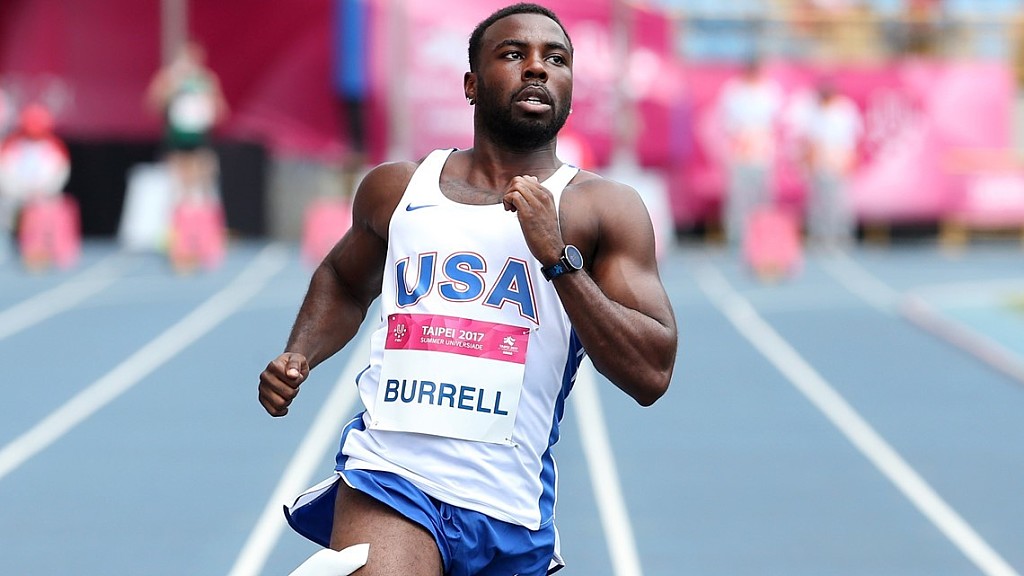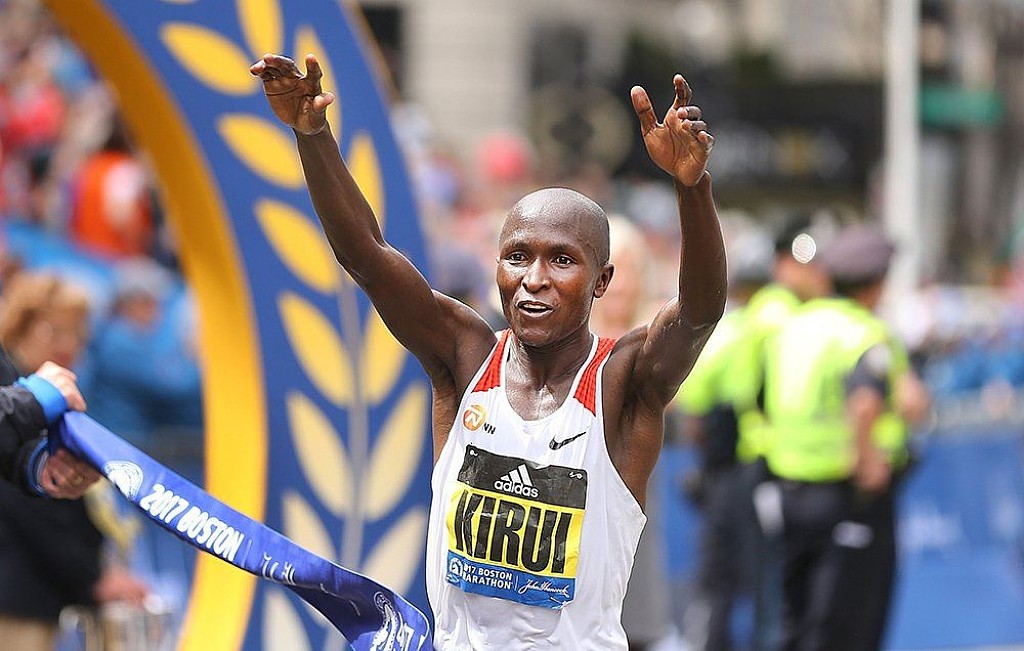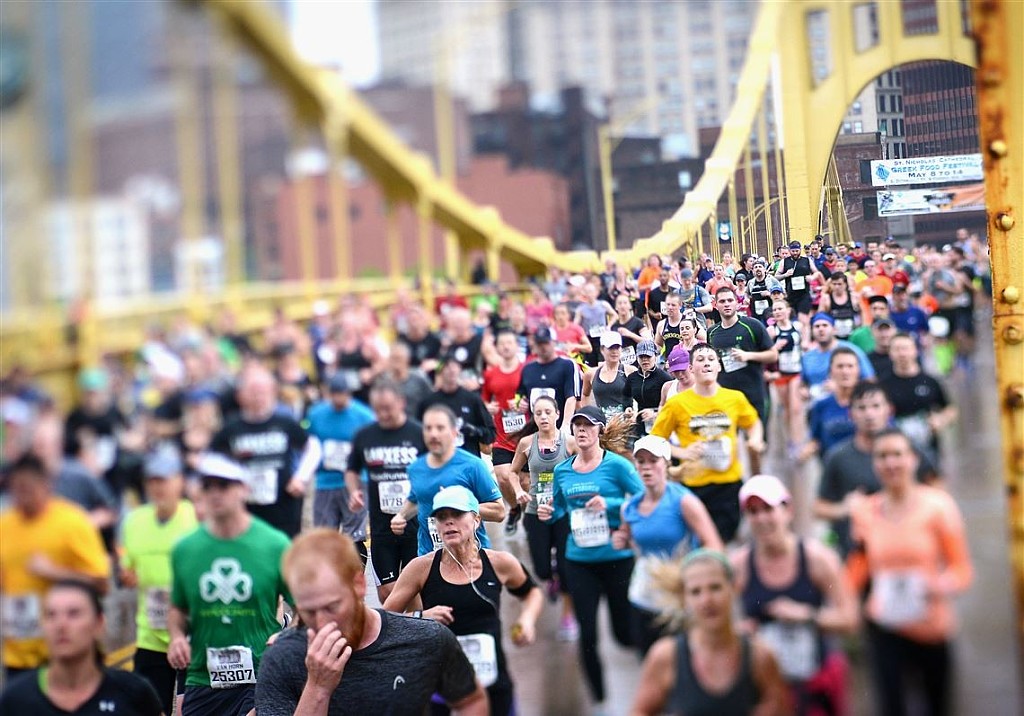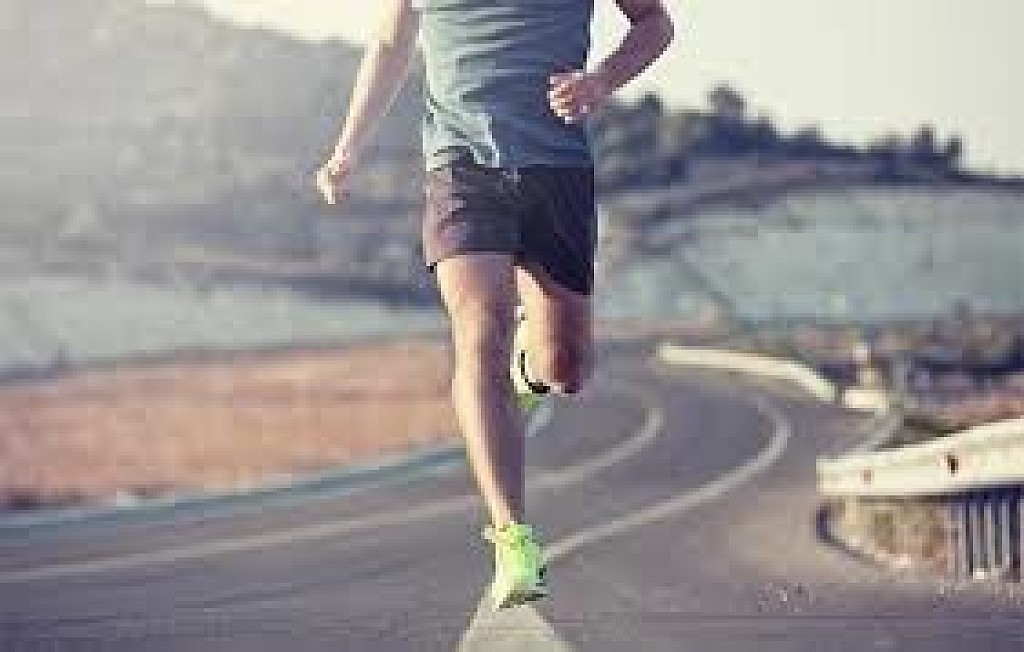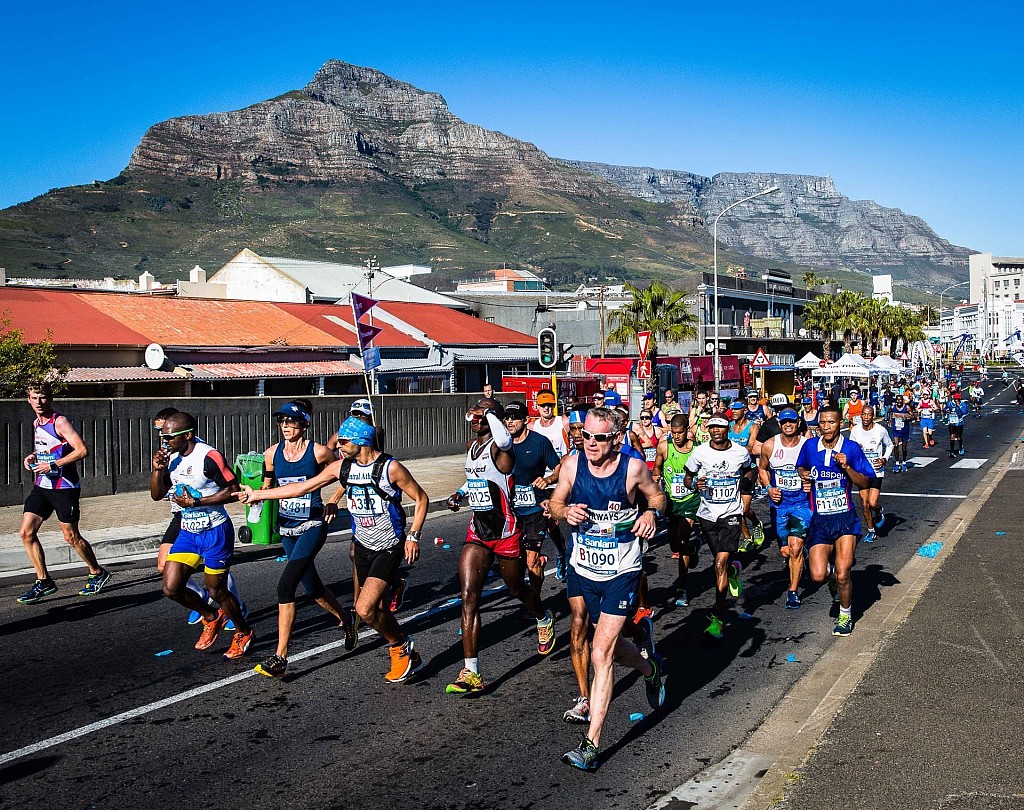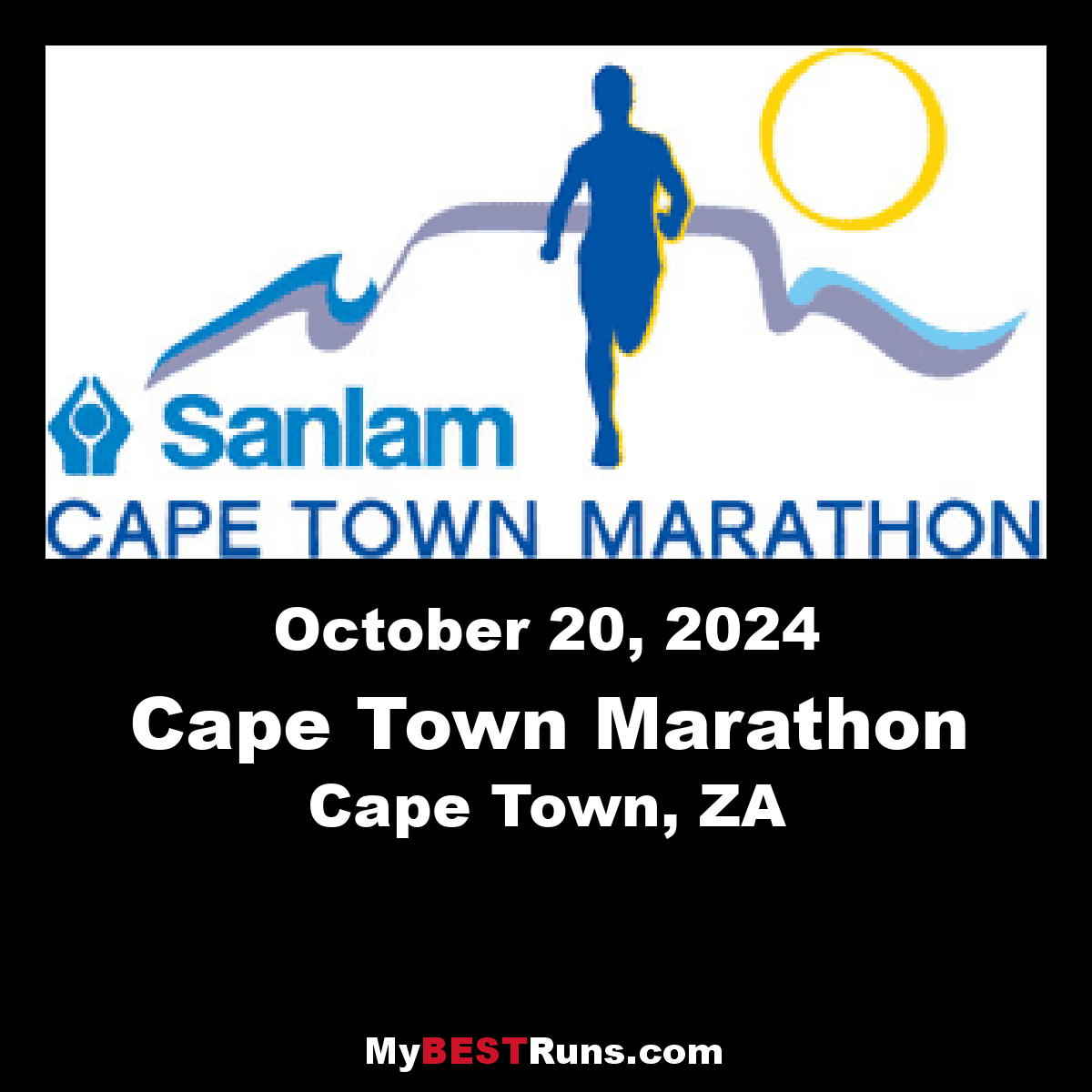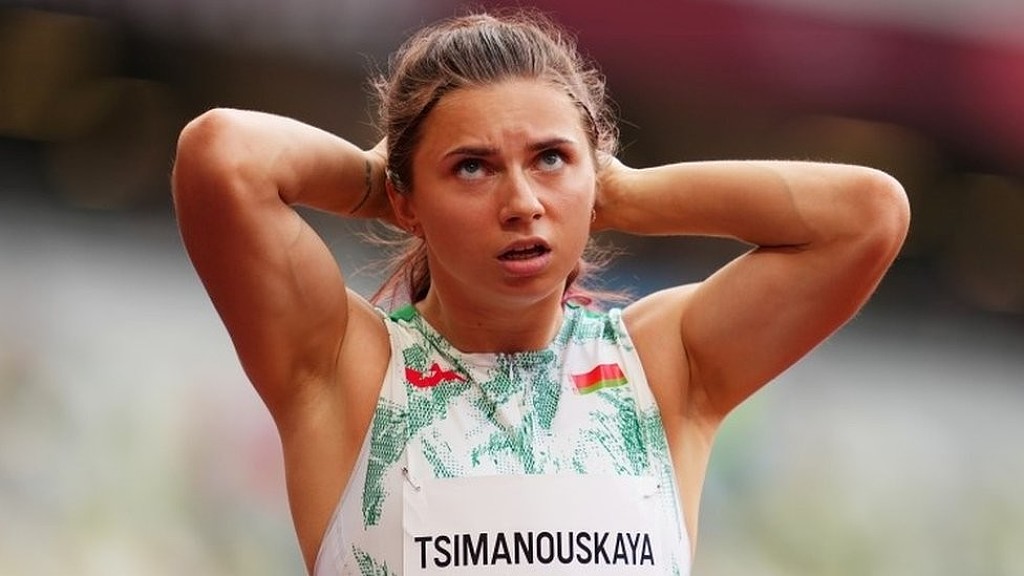Running News Daily
Running News Daily is edited by Bob Anderson in Mountain View, California USA and team in Thika Kenya, La Piedad Mexico, Bend Oregon, Chandler Arizona and Monforte da Beira Portugal. Send your news items to bob@mybestruns.com Advertising opportunities available. Over one million readers and growing. Train the Kenyan Way at KATA Running Retreat Kenya. (Kenyan Athletics Training Academy) in Thika Kenya. Opening in june 2024 KATA Running retreat Portugal. Learn more about Bob Anderson, MBR publisher and KATA director/owner, take a look at A Long Run the movie covering Bob's 50 race challenge.
Index to Daily Posts · Sign Up For Updates · Run The World Feed
Beat The Burn With These Tips for Running in Heat and Humidity
With summer in full effect, you may have noticed that your runs have begun to feel different. As in...why does my easy pace now feel like I'm running in mud and I'm working so hard to get nowhere fast?
Summer running can make it feel like you need gills rather than lungs. If you are doing heart rate training, good luck. The warmer the weather, the harder your body has to work to keep you cool. Your heart rate will be higher and breathing more difficult. The reason why is your body is directing blood to the skin to cool you off through sweating. That means there's less blood available to transport oxygen to your muscles. What would usually be an easy-paced run feels more like a max all-out effort.
If you don't like running in the heat or humidity, you don't need to retreat inside for the next few months. There are plenty of things to try to make it a little bit more comfortable. And if you do have to hit the treadmill, no biggie. Do what works for you.
Less Is Best
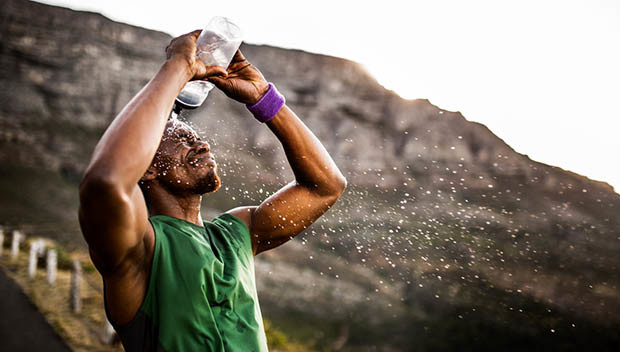
Wear as little clothing as legally possible. If you are the sports bra only or shirtless kind of person, do that. Stick to light-colored, loose, wicking materials. Now is not the time for wearing all black or cotton. No matter what fabric you are wearing, Body Glide can be a life saver for preventing chafing.
Don't Forget the Sunscreen
Even if it's early morning or partly cloudy, protect yourself from skin cancer and other skin damage by using sunscreen before every run. Just be sure it's sweat proof. No runner needs to feel the pain of sunscreen and sweat in their eyes.
Wear a Hat or Visor
A hat or visor will not only protect your skin from the sun, but it will also help to keep your face shaded. Soaking the hat or visor in cold water before heading out the door can help to lower body temp and feel cooler as well.
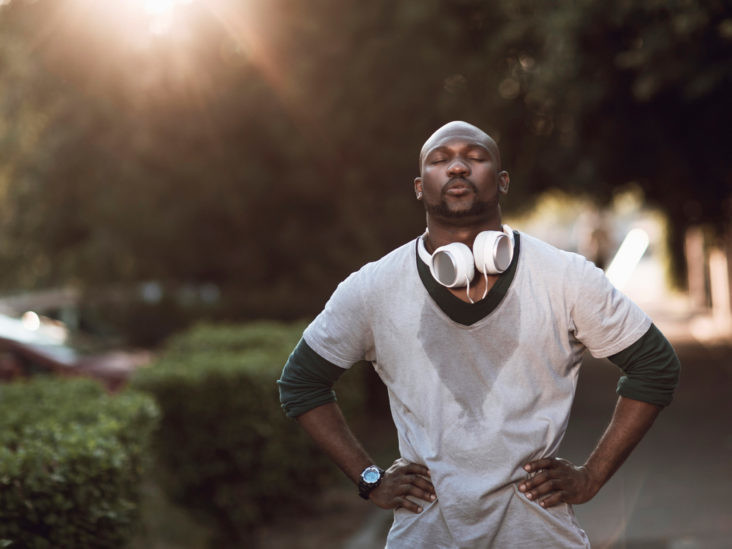
Start Slow and End Slow
A warm up prior to a run should always be done (try one of these dynamic warm ups!), but even more so when the temperatures are high. You want to gradually increase your heart rate rather than starting out too fast. Same thing for the end of the run. Do a gradual slow-down that includes some time for a slow walk. It will help regulate your heart rate and cool your body a bit.
Run Early
Morning temperatures are usually the coolest during the summer. It also will give you a break from the strongest hours of sunlight. The humidity can sometimes be high in the morning, but at least you won't have the blazing sun on you. And you may even get the treat of a gorgeous sunrise. You want to be sure to avoid the middle part of the day, which will be the hottest.
Run Late
If you aren't a morning person, wait until the late evening when the sun is starting to set. The temps will be better than mid-day, and the humidity may dip, too. Just like running early, you'll probably get the treat of a gorgeous sunset.
Slow Down
Your body has to work extra hard in the heat and humidity running at a "normal" pace, and when you try to pick up the pace, even more so. Run for time and effort rather than distance and pace. Save the hard pace workouts for a day when the temp and humidity are lower or when you can go early in the morning when the day is coolest.
Hit the Trails
When the temperatures rise, asphalt and concrete absorb heat and radiate it back into your face. Trail running usually offers shade from trees unless you are going above the tree line. It also forces you to slow down. Bonus if the trail has the perfect place to jump in a lake or river post run!
Drink up
If you are running more than 75 to 90 minutes, carry a hand-held water bottle, hydration belt or hydration vest with you. Or stash water bottles along your intended route ahead of time if you don't like carrying anything in your hands. For an extra dose of cooling relief, freeze your water bottles before your run. By the time you need it, enough ice has melted for you to drink up some icy cold water. Planning your route along accessible drinking fountains is not a bad idea either. You may also opt for adding electrolytes to your water to help balance the extra sodium and potassium lost through increased sweating.
Ice It
Ultraruners use this trick all the time while racing in the heat. Stuff a bandana full of ice and tie it so the ice is at the back of your neck. Or fill up your hat with ice before putting it on your head. As the ice melts, it will keep you cool.
Run With Friends
Just like running on frigid cold mornings in January, having friends to commiserate with while you slog through the heat makes it more tolerable. If you are joining a larger group run, there's high probability that water, Gatorade or fuel will be out on the route. You won't have to worry about having enough water with you.
Take It Inside
If it's really hot and humid and your only option to run is during the hottest part of the day, take it inside to the treadmill, preferably to a treadmill in an air-conditioned room.
(08/20/2021) ⚡AMPby Angela Bekkala
Olympic medalist Abdi Nageeye, Kibiwott Kandie and Kenenisa Bekele to clash in New York
World half marathon record holder, Kenya’s Kibiwott Kandie is due for his maiden marathon at the New York City marathon on November 7 this year.
Kandie, the 2020 World Half Marathon Championships silver medalist, faces baptism by fire when he takes on Tokyo Olympic marathon silver medallist, Abdi Nageeye from the Netherlands, and two-time Berlin Marathon champion, Ethiopia’s Kenenisa Bekele.
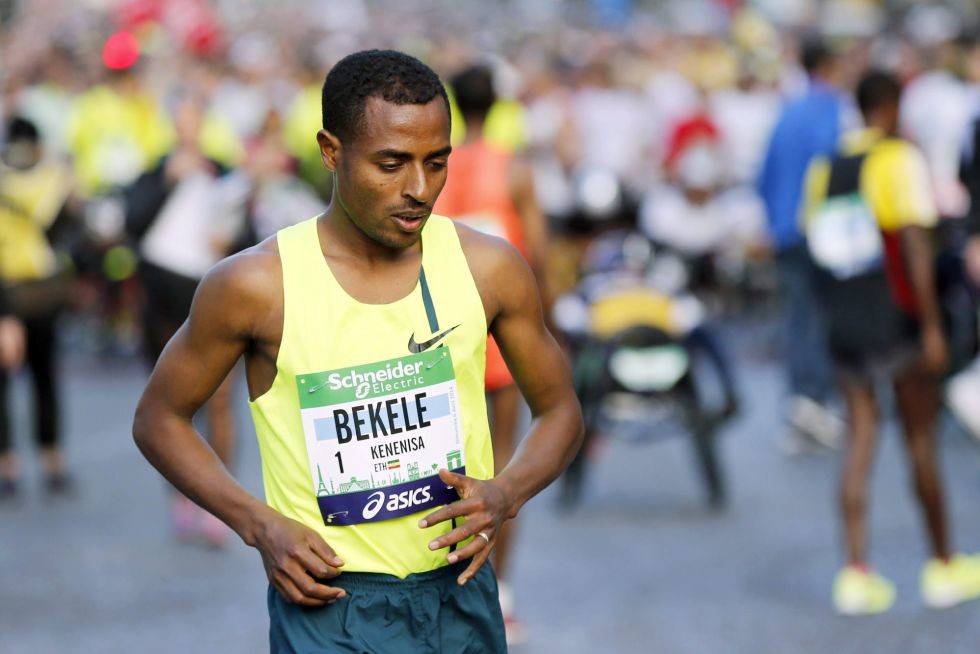
Kandie, who missed the Kenyan Olympic trials in 10,000m owing to an injury, holds the world half marathon record of 57:32 from 2020 Valencia.
Bekele has the fastest time in the star-studded field, having won the 2019 Berlin Marathon in 2:01:41, missing Eliud Kipchoge’s world record by two seconds.
Nageeye won the silver medal at the Olympic marathon in Sapporo this year, crossing the line in 2:09:58 behind Kipchoge.
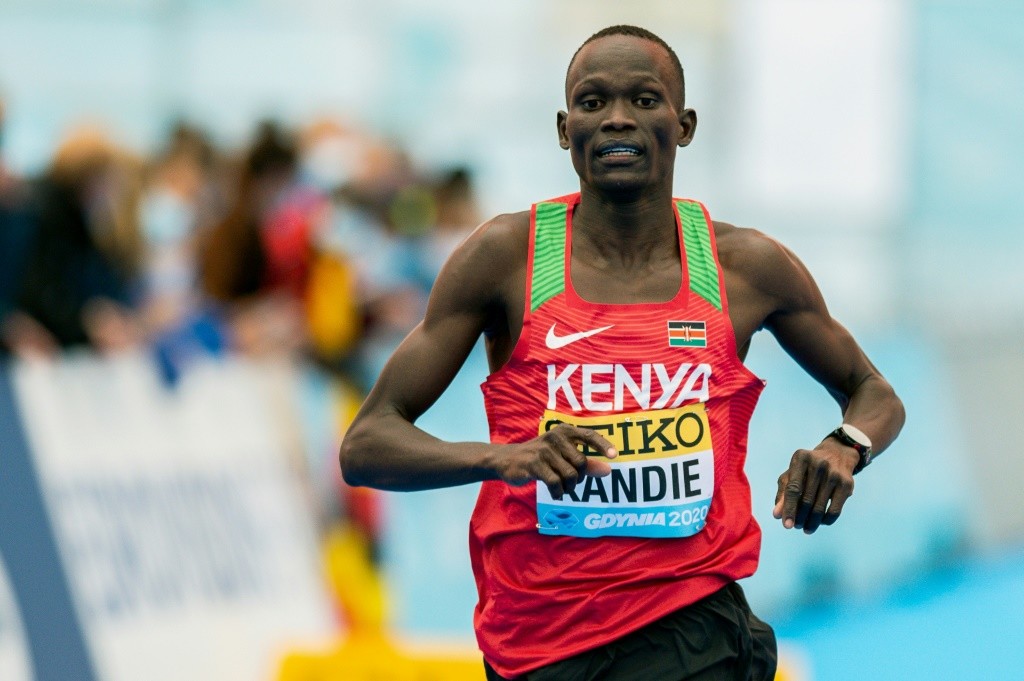
The Somali-born Dutch runner was 11th at the Rio 2016 Olympic marathon and has finished in the top 10 at the Boston Marathon twice.
“For me, winning the silver medal in the Olympic Games was not a surprise,” Nageeye said. “There were many good athletes in the race, but I knew my preparation had been good. I was ready for the conditions, and most importantly I believed in myself.”
Nageeye said he will take that same focus into his preparations for New York, and that his belief and confidence in his abilities is even higher than it was at the Tokyo Olympics.
“There is nothing I want more than to bring a New York City victory back home along with my Olympic medal,” said Nageeye in a statement released by the race organizers on Thursday.
Bekele, a four-time Olympic medalist and 16-time world champion, will make his debut in the men’s open division.
“I am proud of the many accomplishments in my career, but I have never had the opportunity to compete in the New York City Marathon,” Bekele said. “I am excited that 2021 will be the year for me to make my attempt in New York.”
Leading the American men will be Rio 2016 Olympian Jared Ward, who has finished as the top American in the last two New York City Marathons.
Great Britain’s Callum Hawkins will also make his New York City Marathon debut.
Hawkins is a two-time Olympian who finished fourth at both the 2019 and 2017 World Championships in the marathon.
The 2019 New York City Marathon second and third-place finishers, Kenya’s Albert Korir and Ethiopia’s Girma Bekele Gebre will return in an attempt to repeat their podium performances, in addition to 2016 race winner Ghirmay Ghebreslassie of Eritrea.
(08/20/2021) ⚡AMPby Ayumba Ayodi
TCS New York City Marathon
The first New York City Marathon, organized in 1970 by Fred Lebow and Vince Chiappetta, was held entirely in Central Park. Of 127 entrants, only 55 men finished; the sole female entrant dropped out due to illness. Winners were given inexpensive wristwatches and recycled baseball and bowling trophies. The entry fee was $1 and the total event budget...
more...48th Edition of Credit Union Cherry Blossom Ten Mile Run to Feature Strong Men’s and Women’s Fields
It has been a long time coming — too long — and America’s finest distance runners are eager to toe the starting line at the 2021 Credit Union Cherry Blossom Ten Mile (CUCB), to be held in our Nation’s Capital on Sunday, September 12. With $26,000 in U.S. championship prize money on offer as well as a $10,000 bonus for an American Record (the bonus will be split if both the male and female break the American records), road racing fans can look forward to hotly contested races among both the men and women.
“It has been nearly two years since the last time the U.S. Ten Mile Championships for men and women were held,” said event director Phil Stewart. “I know a host of talented Americans are eager to take an important middle-distance test as most of them prepare for fall marathons, of which there are plenty, with all six World Marathon Majors events taking place over a six-week period between September 26 and November 7.”
This will be the third time one or more of the USATF 10 Mile Championships have been hosted by CUCB alongside the traditional international competition: the women’s championships were part of the 2013 Credit Union Cherry Blossom Ten Mile, with Janet Bawcom winning the title in 53:28 while placing fourth overall. A year later in 2014, race organizers hosted both the men’s and women’s championships. Christo Landry (46:41) was the first American to cross the finish line—in sixth place overall—while Bawcom repeated as the U.S. women’s champion by placing second overall in 52:12. Both of Bawcom’s times established American records at the time.
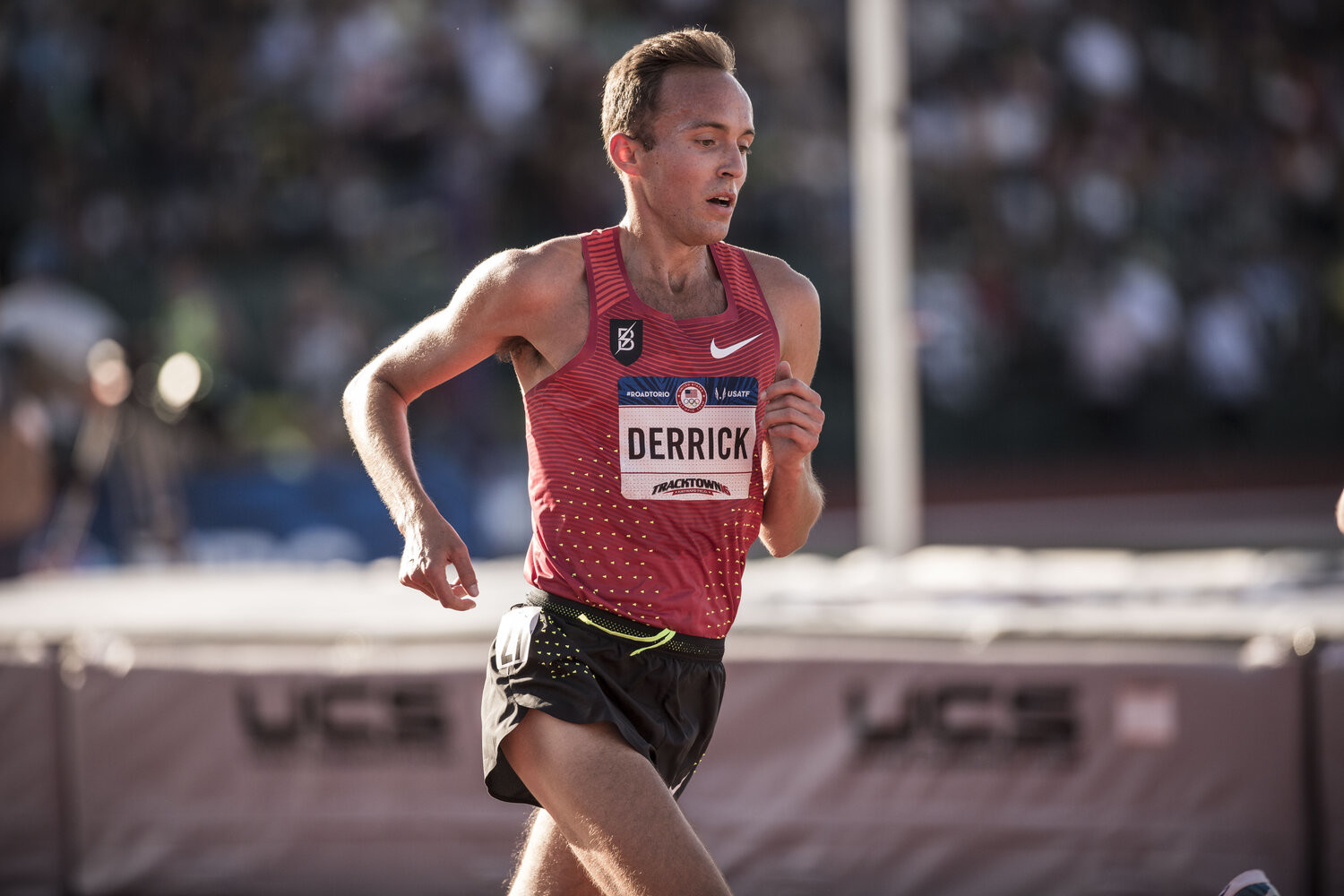
Keira D’Amato broke Bawcom’s American Record last fall at the Up Dawg Ten Mile, running 51:23 in a small invitational race organized by the Cherry Blossom Race Committee specifically for her to chase Bawcom’s record. D’Amato’s effort was recently verified as a women’s only World Record by the Association of Road Racing Statisticians as well. (ARRS is the only organization keeping world records at the 10-mile distance.)
D’Amato will be joined on the starting line by two American women who have broken 53 minutes for 10 miles: Jordan Hasay (52:49) and Emma Bates (52:51). Three other Americans have run 54:00 or faster: Natosha Rogers (53:45), Diane Nukuri (53:56), and Annie Frisbie (54:00).
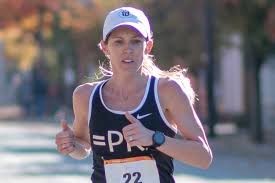
On the men’s side, Futsum Zienasellassie will be defending the USATF 10 Mile Championship he won in Minneapolis in 2019 (the last time American runners competed for this title, thanks to Covid-19). His winning time of 46:55 is one of four sub-47:00 marks among the American men entered in the race. Chris Derrick boasts the fastest personal best (46:53), which he ran at CUCB in 2018 when he was top American and fifth overall. Abbabiya Simbassa ran 46:57 to place second behind Zienasellassie in Minneapolis in 2019, and Kiya Dandena ran 46:58 in 2017 at CUCB. The current pending men’s American record is 45:54 set by Galen Rupp last fall. Rupp’s time bettered Greg Meyer’s time of 46:13 from the 1983 Cherry Blossom Ten Mile.
Here’s a complete listing of elite American athletes who have confirmed their entry into the 2021 Credit Union Cherry Blossom Ten Mile, with personal bests noted in parentheses:
Women:
Keira D’Amato (51:23)
Jordan Hasay (52:49)
Emma Bates (52:51)
Natosha Rogers (53:45)
Diane Nukuri (53:56)
Annie Frisbie (54:00)
Bria Wetsch (54:14)
Susanna Sullivan (54:22)
Bethany Sachtleben (54:42)
Grayson Murphy (54:51)
Carrie Verdon (56:57)
Danielle Shanahan (31:22.9 10K)
Amy Davis (32:13 10K)
Abbie McNulty (33:07 10K)
Stephanie Bruce (1:09:55 half marathon)
Nell Rojas (1:10:45 half marathon)
Men:
Chris Derrick (46:53)
Futsum Zienasellassie (46:55)
Abbabiya Simbassa (46:57)
Kiya Dandena (46:58)
Augustus Maiyo (47:05)
Elkanah Kibet (47:15)
Girma Mecheso (47:22)
Noah Droddy (47:28)
Louis Serafini. (47:35)
Emmanuel Bor (47:39)
Reed Fischer (47:50)
Shadrack Biwott (47:53)
John Raneri (47:53)
Tyler McAndless (47:56)
Dhruvil. Patel (48:37)
Frank Lara (48:37)
Joel Reichow (48:41)
Alex Monroe (48:57)
Willie Milam (49:10)
Robert Brandt (27:39.2 10K)
Brendan Gregg (44:25 15K)
Reid Buchanan (44:40 15K)
Emmanuel Roudolff (1:04:08 half marathon).
(08/20/2021) ⚡AMPby Running USA
Cherry Blossom Ten Mile Run
The Credit Union Cherry Blossom is known as "The Runner's Rite of Spring" in the Nation's Capital. The staging area for the event is on the Washington Monument Grounds, and the course passes in sight of all of the major Washington, DC Memorials. The event serves as a fundraiser for the Children's Miracle Network Hospitals, a consortium of 170 premier...
more...2021 Long Beach Marathon is back on
Oceanfront racing returns to Long Beach in a big way on October 9th and 10th with the Long Beach Marathon. This classic Long Beach race is more than just a Boston-Qualifying marathon with a downhill finish. There’s a distance for everyone! Choose from the marathon, the half marathon, the 20-mile bike tour, and the Aquarium of the Pacific 5K.
The marathon course starts in downtown Long Beach, passes the Queen Mary, runs the beach path and completes a 5K loop on the UCLB campus before heading back to Ocean Boulevard for its downhill finish.

Looking for something a little shorter? The half marathon course is seriously flat. The highest elevation on the course is 45 feet. Starting on Shoreline Drive, the course passes the Pike at Shoreline Village, crosses the Queensway Bridge and runs to the bow of the Queen Mary, circles back around the Aquarium of the Pacific, the Lighthouse at Rainbow Harbor, then back by Shoreline Village before heading down the beautiful beach path. You’ll close out your race running above the ocean along the bluff before closing out downhill into a cheering final straight of fans.

Not a runner? The Long Beach Marathon still has an event for you! Join the 20 mile Bike Tour. This event provides avid and leisure cyclists alike the opportunity to ride one of the most beautiful Bike Tours in Southern California. It is a safe, scenic and fully closed 20 mile course. Be a part of the marathon weekend experience with all the perks including a commemorative event shirt, finishers medal, complimentary beer and more! Enjoy the sights of Long Beach on the Bike Tour with your friends and family!
Don’t forget about Saturday’s race! The Aquarium of the Pacific 5k takes place on Saturday, October 9th and is the perfect distance for all running abilities. Run the 5k with friends and family or use it as a shakeout run for Sunday race events.
If you can’t decide on a single race, run multiples! In addition to receiving a unique shirt and medal for each distance, you’ll also receive the Long Beach Combo challenge medal.
For runners that aren’t ready to race in crowds yet or can’t make it to Long Beach on October 9th and 10th to participate in-person, there is the virtual run option for both the marathon and the half marathon. Best of all, the virtual run counts for those individuals looking to complete the Beach Cities Challenge or maintain their loyalty status.
For more information, and to register, visit RunLongBeach.com
(08/19/2021) ⚡AMPLong Beach Marathon
Come experience one of the most scenic events in California, “Run Long Beach”. Starting in Downtown Long Beach, runners head towards the historic Queen Mary and then through Shoreline Village. After running next to the Pacific Ocean on the flat beach path, half marathoners will continue down Ocean Boulevard while full marathoners veer right and head through Belmont Shore toward...
more...What Is the Best Running Form?
If you want to elevate your running, it’s important to take a look at your running form and make any necessary adjustments and improvements. This will help reduce chance of injury, increase speed, and boost efficiency.
Your running gait plays a vital role in the many health benefits of running. It enables you to run longer distances at a greater intensity with less pain and discomfort.
There are specific form techniques to follow that may differ slightly due to variations in body mechanics. Take into account the distance and speed you want to run, as well as any relevant injuries or physical areas of concern.
Bear in mind that you may have picked up bad habits along the way that may be difficult to break because they feel familiar. That’s OK! It’s worth it to go through a bit of discomfort or unfamiliarity to get your form down and enhance your running experience.
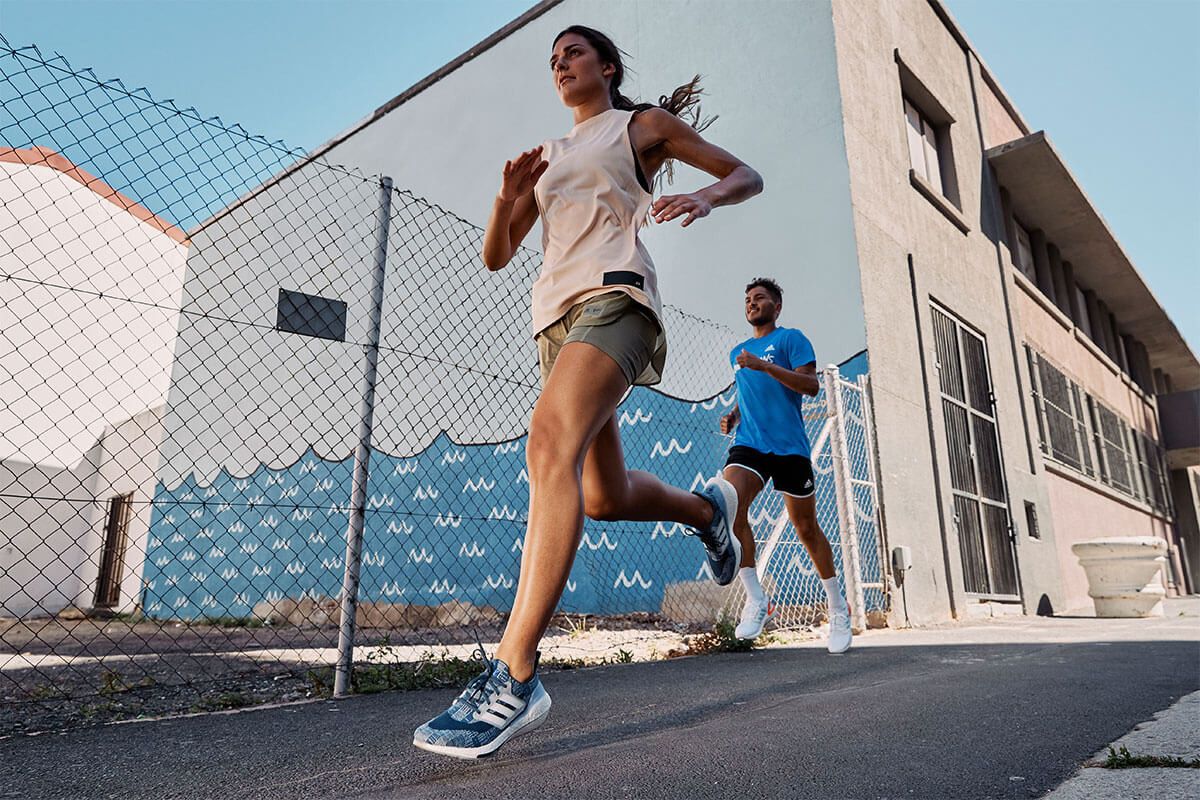
Running form
Below are a few suggestions for improving your running form to boost your running economy, improve performance, and lower your risk for injury.
Jogging
Jogging may have a slower pace than running, but it still boasts a range of health benefits. Here’s how to maximize your jogging workouts:
While jogging, maintain good posture, engage your core, and gaze forward.
Avoid tilting your head down and slumping your shoulders.
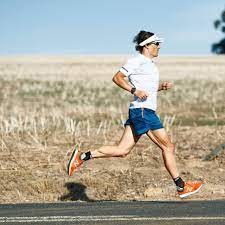
Broaden your chest, and keep it lifted as you draw your shoulders down and back.
Keep your hands loose, and use a relaxed arm swing. Avoid crossing your arms in front of your body.
To prevent injuries to your lower body, use a midfoot strike, and avoid hitting the ground with your heel. This allows your foot to land directly under your hip as you drive your body forward. A heel strike may cause your leg to slow down your stride and stress your knees.
Sprinting
The high intensity action of sprinting requires a lot of muscle activation and explosive force as you develop a powerful stride. Consider these tips:
Slightly lean forward from your waist while engaging your core.
Lift your chest, soften your shoulders, and draw them away from your ears.
Use short, fast strides to conserve energy.
To reduce your chance of injury, land softly and quietly with minimal impact.
Use a forefoot strike, and propel yourself forward from your toes. With each step, lift your thigh so it’s parallel to the ground.
Bend your elbows at a 90-degree angle and draw them straight back and forth, using an exaggerated movement and moving them through a wider range of motion than when you jog.
Raise your hands as high as your chin and back toward your low back.
Avoid rotating your torso and bringing your arms across the midline of your body.
On a treadmill
Running on a treadmill is an option if you want to reduce the impact on your joints and prevent overuse injuries.
A treadmill allows you to run at a smooth, steady pace without any hinderances or necessary stops. This allows you to focus solely on your form.
Consider these tips:
Draw your shoulders back and engage your core as you slightly lean forward.
Maintain an erect spine. Keep your shoulders directly above your hips.
Relax your arms, gaze straight ahead, and avoid looking down or at the monitor.
Use a short stride, and take small steps.
Running on a treadmill will force you to shorten your stride since overstriding will cause you to kick the front of the treadmill.
Unless you have concerns with balance, avoid hanging on to the rails as you run.
Your feet
Use an appropriate stride for your running speed. Land gently; avoid pounding your foot as you land, which helps prevent injuries.
The correct foot strike will also help improve your running economy so you’re using less energy while enhancing your speed.
Here’s how to look after your feet:
Land with control, using a smooth, even foot strike.
To avoid lower extremity injuries, use a forefoot strike, which utilizes more muscle activation when you land.
A midfoot strike helps propel your body forward.
Avoid striking with your heels. This can slow you down and stress your knees.
Maintain normal or neutral pronation of your feet by rolling your feet inward slightly. This allows your feet to properly absorb the shock of landing while keeping your lower body in alignment.
(08/19/2021) ⚡AMPby Healthline
Chicago Marathon organizers have required participants to provide proof of COVID-19 vaccination or a negative test
Chicago Marathon participants required to prove vaccination or negative test.
Organizers confirmed the move as part of updated COVID-19 guidelines published for the annual event.
Around 35,000 people have registered for the 2021 Chicago Marathon, which was cancelled last year due to the COVID-19 pandemic.
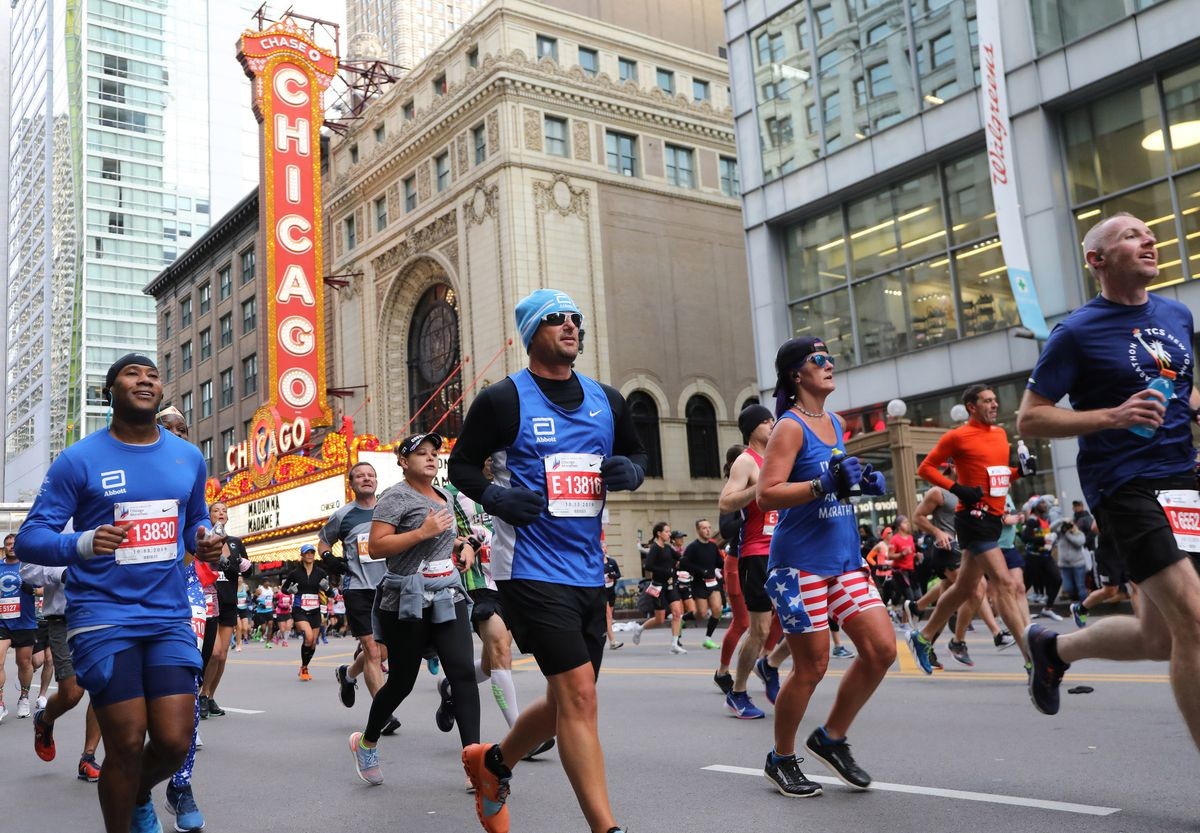
"Registered participants are required to provide proof of a complete COVID-19 vaccination series or a negative COVID-19 test result to participate in the 2021 Bank of America Chicago Marathon," organizers said.
"Registered participants who are not fully vaccinated are required to provide a negative COVID-19 test result for a test administered within 72 hours of attending the Bank of America Chicago Marathon.
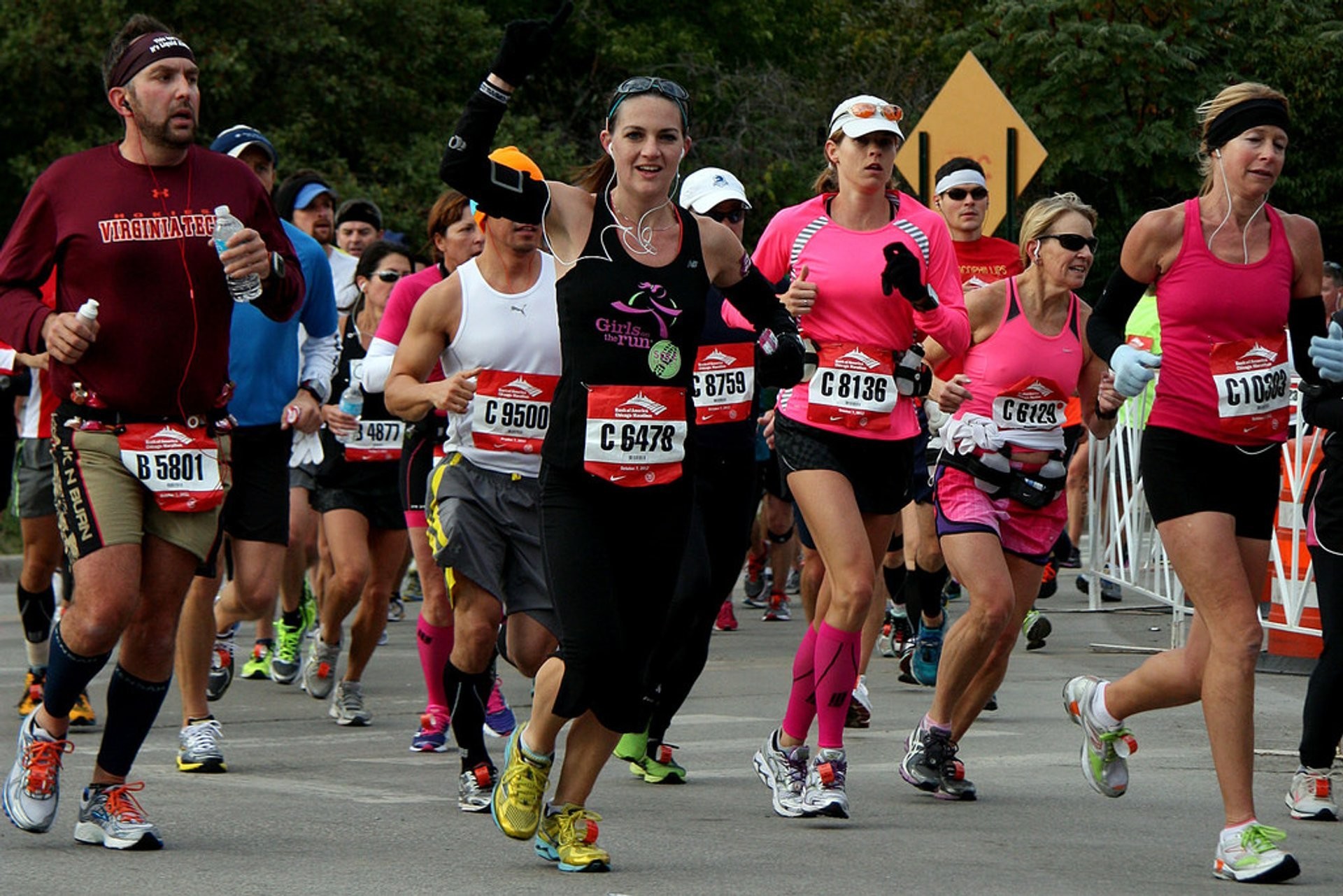
"The event defines 'fully vaccinated' as individuals who are two weeks after their second dose in a two-dose vaccine series or two weeks after a single-dose vaccine.
"Proof of vaccination (hard copy, photocopy or digital version of an immunization record) or a negative COVID-19 test taken within 72 hours of attending the event is required for entrance to the Abbott Health & Fitness Expo.
"Individuals unable to prove full vaccination or negative test will be barred from entering the Health and Fitness Expo and unable to pick up the necessary race materials that allow for participation in the event."
Organizers say RT-PCR, RT-LAMP, lateral flow, and rapid antigen tests are approved.
Attendees will be required to wear face coverings while at indoor event venues, while participants are encouraged to wear face coverings in Grant Park prior to starting the race.
Ethiopia’s Getaneh Molla and Seifu Tura, Kenya’s Ruth Chepngetich, and Americans Keira D’Amato and Emma Bates have become the latest elite athletes to join the start list for this year’s event.
Two-times Olympic medallist Galen Rupp and Sara Hall were announced earlier this year, with the pair expected to lead the United States’ challenge in the men’s and women’s events, respectively.
Molla has the fastest personal best in the men’s field as he clocked 2 hours 3min 34sec to win the 2019 Dubai Marathon.
Chepngetich is the reigning women’s world champion, with the Kenyan poised to make her Chicago Marathon debut.
She set the world record in the half marathon this spring in 1:04:02, while her marathon personal best of 2:17:08 makes her the fourth fastest woman in history.
Daniel Romanchuk and Tatyana McFadden are among the US stars set to feature in the elite wheelchair races, with Switzerland’s Marcel Hug also included on the start list.
(08/19/2021) ⚡AMPby Michael Pavitt
Bank of America Chicago
Running the Bank of America Chicago Marathon is the pinnacle of achievement for elite athletes and everyday runners alike. On race day, runners from all 50 states and more than 100 countries will set out to accomplish a personal dream by reaching the finish line in Grant Park. The Bank of America Chicago Marathon is known for its flat and...
more...Caster Semenya's lawyers demand World Athletics drop controversial testosterone rules that forced South African to abandon her attempts to defend her 800m Olympics Title
Caster Semenya's laywers have fresh hope that World Athletics' controversial testosterone laws will be ditched after the governing body's scientists admitted the findings that helped trigger the rules 'could have been misleading'.
Semenya was not able to defend her double Olympic 800m title in the Tokyo Games due to rules prohibiting athletes with differences of sexual development from competing unless they take hormone-lowering medication.
World Athletics are now facing calls to scrap the regulations after their scientists admitted some findings were 'on a lower level of evidence'.
The 2017 findings noted a performance increase in females with high testosterone levels.

But the British Journal of Sports Medicine has now released a 'correction' to the findings, leading campaigners to argue the rules should be ditched.
In the new report, Stephane Bermon, director of World Athletics' Health and Science Department, and his predecessor Pierre-Yves Garnier, wrote: 'To be explicit, there is no confirmatory evidence for causality in the observed relationships reported. We acknowledge that our 2017 study was exploratory.'
They add: 'With this in mind, we recognise that statements in the paper could have been misleading by implying a causal inference.
'Specifically, 'Female athletes with high fT [testosterone] levels have a significant competitive advantage over those with low fT in 400 m, 400 m hurdles, 800 m, hammer throw, and pole vault.'
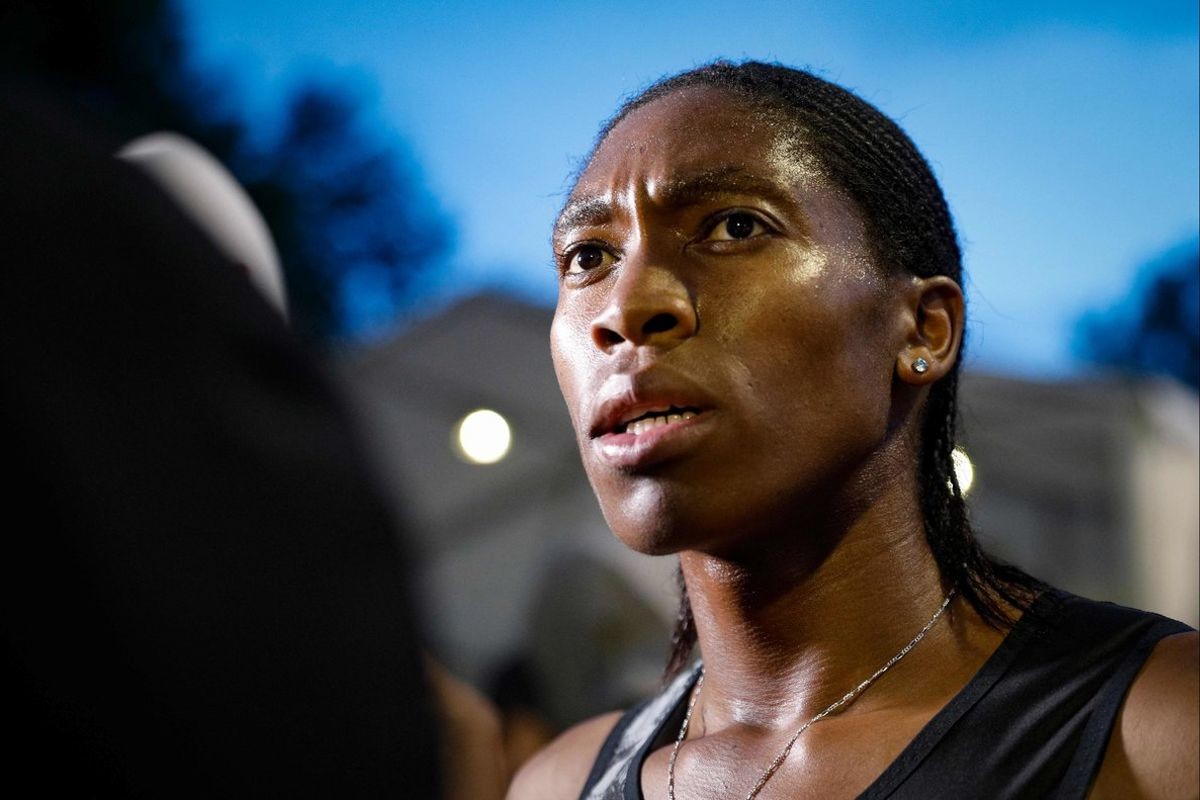
'This statement should be amended to: 'High fT levels in female athletes were associated with higher athletic performance over those with low fT in 400 m, 400 m hurdles, 800 m, hammer throw, and pole vault.'
'This is very significant new information,' Semenya's lawyer Gregory Nott, of Norton Rose Fulbright, told Telegraph Sport.
'We are in the midst of the European Court of Human Rights case and will be discussing with our London QC and the whole legal team how to introduce the information into the proceedings.
'World Athletics have recently given notice of their wish to intervene in the European Court of Human Rights proceedings and we would hope that they will now support setting aside the regulations.
'It is more than surprising that World Athletics did not reveal this evidence before the recent Tokyo Olympics and allow Caster to defend her 800m title.'
Semenya spoke of her disappointment at not being able to compete in Tokyo after losing her appeal to Switzerland's Federal Supreme Court in September last year.
'I am very disappointed. I refuse to let World Athletics drug me or stop me from being who I am,' she said.
(08/19/2021) ⚡AMPby Lewis Steele
Olympic bronze medalist Molly Seidel to run TCS New York City Marathon
Olympic bronze medalist Molly Seidel is one of several standout American women planning to run the New York City Marathon in November, race organizers announced Wednesday.
Seidel stunned even herself with a third-place finish in Tokyo this month in just the third 26.2-mile race of her career. An NCAA Division I champion at Notre Dame in the 3,000, 5,000 and 10,000 meter events, she is now the headliner for the NYC Marathon’s 50th running in her five-borough debut.
“Since the beginning of 2021, I’ve had two races circled on my calendar: the Olympic Games’ marathon on Aug. 7 and the TCS New York City Marathon on Nov. 7,” said Seidel, 27, who grew up in Wisconsin. “Winning the bronze medal in Sapporo showed that I can run with the best in the world, and on any given day, anything is possible.”
Fellow U.S. Olympians Aliphine Tuliamuk, Sally Kipyego and Emily Sisson will also be in the field, along with 2018 Boston Marathon winner Des Linden.
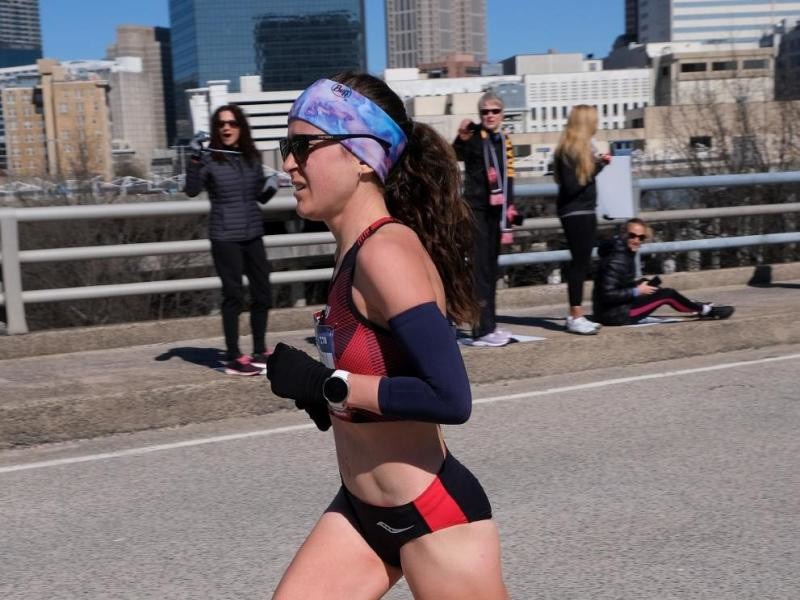
Four-time champion Mary Keitany of Kenya won’t participate for the first time since 2013.
The men’s professional field has not yet been announced.
The 2020 NYC Marathon was canceled by the pandemic, but Gov. Andrew Cuomo announced in June that the 2021 race would go on — albeit with a field limited to about 33,000 entrants, down from 55,000 in 2019.
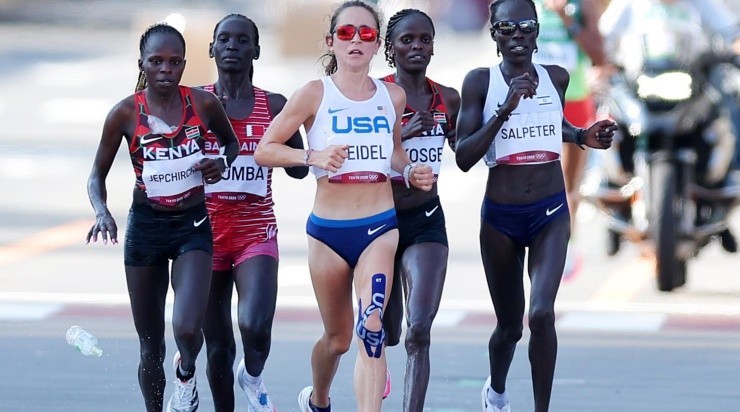
Tuliamuk, who was born in Kenya, won the 2020 U.S. Olympic marathon trials in Atlanta four years after gaining American citizenship. She gave birth to a daughter in January 2021 but still competed in Tokyo. She dropped out near the 20-kilometer mark.
“I want to inspire people, most importantly my daughter, to chase their dreams,” she said in a statement released by the NYC Marathon. “I’m a different athlete and person than I was the last time I ran the TCS New York City Marathon in 2019, so why not fulfill one more dream on Nov. 7?”
Tatyana McFadden is pursuing a record sixth NYC Marathon title in the wheelchair division but hasn’t won since 2016. She won’t have to contend with two-time defending champion Manuela Schär, who is not listed among the competitors.
(08/18/2021) ⚡AMPby Jake Seiner
TCS New York City Marathon
The first New York City Marathon, organized in 1970 by Fred Lebow and Vince Chiappetta, was held entirely in Central Park. Of 127 entrants, only 55 men finished; the sole female entrant dropped out due to illness. Winners were given inexpensive wristwatches and recycled baseball and bowling trophies. The entry fee was $1 and the total event budget...
more...Nike wasn't 'giving me really what I needed,' U.S. Olympian says about jumping to LuluLemon
When her contract with Nike (NKE) was up for renegotiation, American Olympian Colleen Quigley chose to leave the athletic apparel giant for a different type of deal with Lululemon (LULU).
"I've been with Nike since 2015 when I graduated from Florida State University... and joined the team out here in Portland, then had a great five-year run with them,” Quigley said on Yahoo Finance Live. “But I think when I got to the end of that, I just decided that they weren't giving me really what I needed off of the track and not really seeing me as anything more than just a runner.”
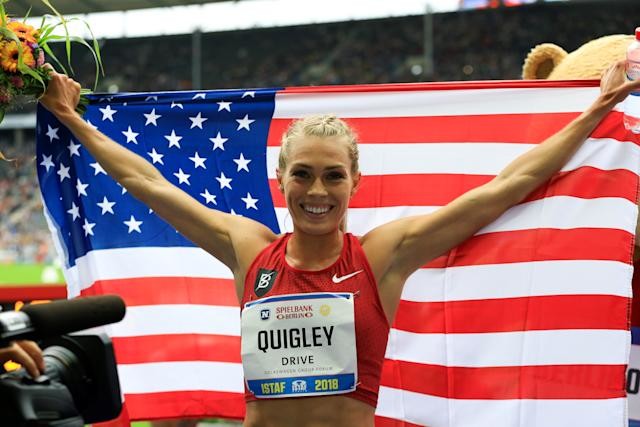
Quigley — a 2016 U.S. Olympic 3000m steeplechaser who withdrew from 2021 Olympic trials — joins a growing number of athletes who were dissatisfied with Nike endorsement deals. Other top runners that parted ways with footwear giant include Mary Cain and Allyson Felix, who respectively spoke out about the company's allegedly toxic culture and lack of maternity protections.
“I started to see myself as more than a runner, and I like to do a lot of different things," Quigley said. "I have different initiatives that I'm working on, really focusing on young athletes and young female athletes."
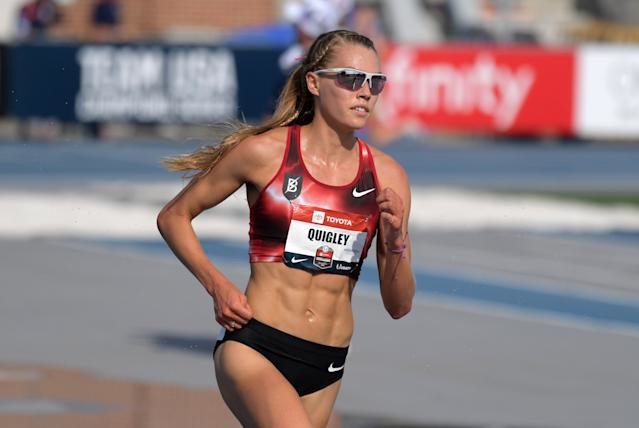
Lululemon "values me as that whole person," she added, "which is really what drew me to them."
Colleen Quigley places second in women's steeplechase heat in 9:53.48 to advance during the USATF Championships Jul 26, 2019; Des Moines, IA (Kirby Lee-USA TODAY Sports)
"You don't have to be on top of the podium to really send a strong message”
Professional athletes in sports such as track and field seek sponsorship deals for compensation since there are few leagues — particularly for women — that pay viable salaries. For college stars like Quigley, signing with a major brand represents the dream of taking one's running career to the next level.
When describing her contract with Nike, Quigley stressed that it was a “transactional relationship.”
“So you run this time, you qualify for this team, you place top three, and you get paid this amount, and if you don't perform and you don't make the team and you don't get a medal, then you don't get paid,” she said. “All of the traditional brands really just see you as a results machine and what you can perform, and what you can give them on the track is really the only thing that they value.” Nike estimated that it will spend $1.33 billion in endorsement contracts in fiscal year 2021, according to company filings. That figure varies based on how well athletes perform and doesn't include the cost of athletic gear provided to endorsers.
Despite the massive marketing machine, top women athletes are increasingly looking for sponsorships that go beyond rewarding athletic accomplishments.
In 2019, Olympic sprinter Allyson Felix departed from Nike after she said she felt pressure from the company to return quickly after her pregnancy and accept a significant pay cut.
“If we have children, we risk pay cuts from our sponsors during pregnancy and afterward," she wrote in an op-ed at the time. "It’s one example of a sports industry where the rules are still mostly made for and by men." (Nike updated its maternity policy to guarantee pay for pregnant athletes after Felix, as well as runners Alysia Montaño and Kara Goucher, went public with their pregnancy stories.)
(08/18/2021) ⚡AMPby Grace O’Donnell
Big Sur Marathon will return in 2022
The absence of the world-renowned Big Sur International Marathon for the past two years has left a void for the local running community. But while normalcy remains in the distance, organizers from the Big Sur Marathon Foundation have announced the event is returning on April 24, 2022.
“That’s our goal,” said Doug Thurston, race director and executive director of the Big Sur Marathon Foundation.
Registration for the race will begin Monday.
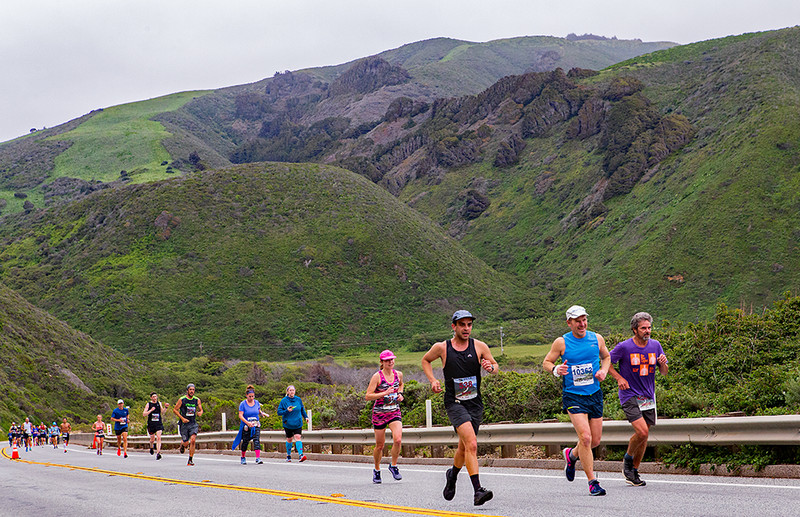
The decision to bring back the marathon was made with input from a health advisory committee the Big Sur Marathon Foundation formed in navigating through the pandemic.
“We looked at the current and projected data,” Thurston said. “We felt by April the pandemic would be a little more settled, and more importantly, the rate of vaccination use will be high enough for runners and volunteers to feel safe.”
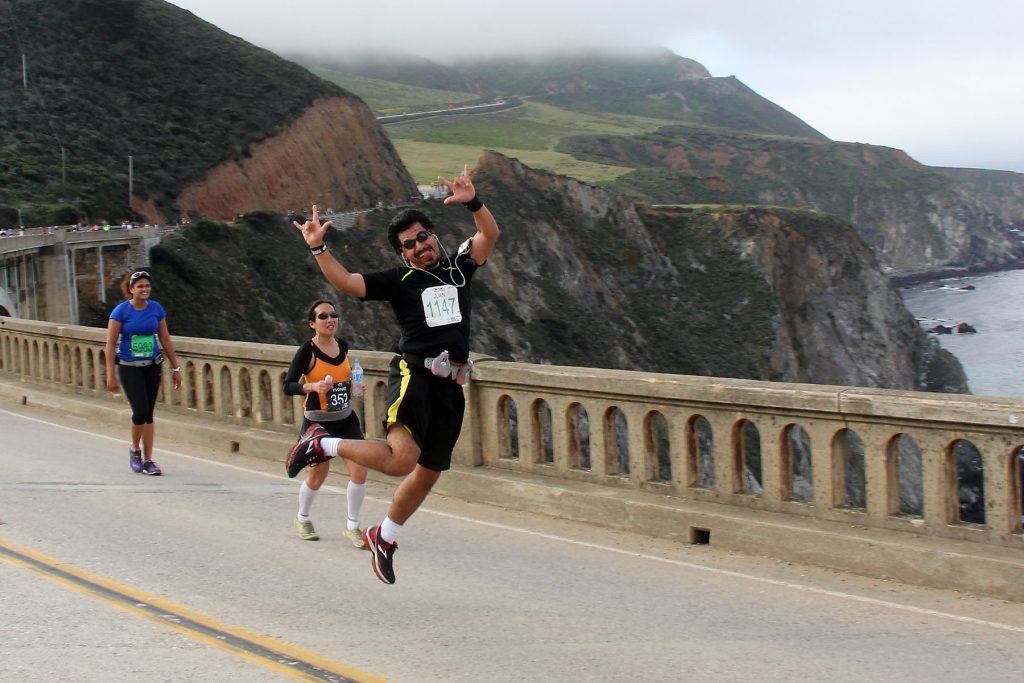
The event has sold out in each of the past 10 years it has been held, bringing thousands of runners from all over the world to take part in one of the more grueling, but picturesque races on the globe.
“It is a bucket list event,” Thurston said. “More than 80 percent of our marathon competitors do it one time.”
All of next April’s events could come with strings attached. While nothing has been decided, it’s likely that proof of vaccination or a negative test for COVID will be required to compete.
“What we are saying at this point is runners and volunteers should all anticipate that they’ll need to show proof of vaccination or have a negative test three days before the race,” Thurston said.
Because priority for the marathon race will go to entrants from the canceled 2020 race, availability to the general public could mean fewer spots in 2022.
“We have not reduced capacity as much as we are providing priority to those that signed up in 2020,” Thurston said. “We don’t know how many of those 2020 entrants will return. But we think the number of available spots for the general public will be fewer.”
While there are several other shorter races going on along Highway 1 simultaneously during the marathon, the maximum entrees for the 26-mile, 385-yard event is limited to 5,000.
“Based on the interest we’ve gathered, we anticipated all the races to sell out,” Thurston said.
There will be another registration date in late November that will be called a second chance drawing, according to Thurston.
Because the Big Sur Marathon Committee doesn’t know how many spots will open up, it will have just two drawings this year.
“We have a supply and demand situation,” Thurston said. “Historically, we have more people that want to get in than we have space. So we’ve gone to a random drawing this year.”
The Monterey Bay Half Marathon, which is also organized by the Big Sur Marathon Committe and has traditionally been run in November, has been canceled the past two years because of the pandemic.
Thurston said the two annual races often raise more than $400,000 for 100 non-profit organizations in the county,
“We’re a nonprofit organization raising money for other nonprofit organizations,” Thurston said. “It’s been trying times for our organization to not give grants to the community. It’s why we put these races on.”
While the past 18 months have been challenging for the Big Sur Marathon Committee, Thurston said that the organization is looking forward, not backward.
“In some ways, it went real slow,” Thurston said. “But here we are getting ready for April, 2022. As the pandemic has taught us over and over again, it makes its own rules. Most of the plans you make are subjective to whatever is happening with the pandemic.”
Because the race day experience is primarily outdoors, Thurston is confident that the event can be held in a safe and healthy manner as runners flood scenic Highway 1, where often the only sounds are the shoes slapping pavement, the wind howling off Hurricane Point and the ocean waves crashing against the rocks below.
“We will follow whatever the federal, state and county health departments provide,” Thurston said. “We are a health and fitness organization. We feel April 24 will be a viable date to host the race.”
(08/18/2021) ⚡AMPby John Devine
Big Sur Marathon
The Big Sur Marathon follows the most beautiful coastline in the world and, for runners, one of the most challenging. The athletes who participate may draw inspiration from the spectacular views, but it takes major discipline to conquer the hills of Highway One on the way to the finish line. Named "Best Marathon in North America" by The Ultimate Guide...
more...Kenyan Ruth Chepngetich and Galen Rupp will headline the elite field at the Chicago Marathon
A number of the world’s top distance runners will be at the 2021 Bank of America Chicago Marathon on Sunday, Oct. 10, organizers announced today, joining headliners Galen Rupp and Sara Hall. So far, there are no Canadians featured in the Chicago Marathon elite field.
Ruth Chepngetich (Kenya), Diane Nukuri (USA) and Keira D’Amato (USA) are among the names to watch in the women’s race for the 43rd running of the Chicago Marathon. Chepngetich, who dropped out of the Olympic marathon at around 30 km, is the reigning world champion and comes to Chicago as the pre-race favourite. Hall ousted Chepngetich in a sprint for second place at the 2020 London Marathon, but all eyes will be on their Oct. 10 rematch. Chepngetich is the only East African runner in an elite field that’s deep with American talent.
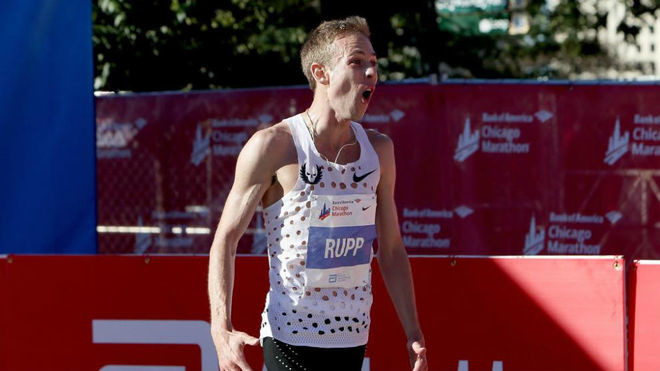
The men’s field features three athletes who have run under 2:05, as well Rupp, who won in 2017. Rupp is the only individual in the field with an Abbott World Major Marathons victory under his belt. Getaneh Molla (ETH) has won the Dubai Marathon, and Hassan El Abbassi (BRN) was the runner-up at the 2018 Valencia Marathon. Rupp had a sub-par Olympic Games, finishing a disappointing eighth in Tokyo (2:11:41) after many thought he would challenge Eliud Kipchoge for a medal. Rupp will enter Chicago as the pre-race favorite, thanks to his previous success on the course.
Past champions Daniel Romanchuk and Marcel Hug will battle it out in the elite wheelchair competition. Romanchuk is the defending two-time champion (2018 and 2019) and world record holder, while Hug won this race in 2016 and 2017. Hug and Romanchuk will compete on back-to-back days, in Chicago on Oct. 10 and at the Boston Marathon on Oct. 11.
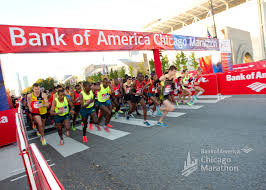
With the cancellation of the New Jersey Marathon, larger mass races are putting together strict Covid protocols to avoid transmission of the virus, including face coverings at the start and finish and either proof of vaccination or a negative Covid test within 72 hours of the race.
(08/18/2021) ⚡AMPby Marley Dickinson
Bank of America Chicago
Running the Bank of America Chicago Marathon is the pinnacle of achievement for elite athletes and everyday runners alike. On race day, runners from all 50 states and more than 100 countries will set out to accomplish a personal dream by reaching the finish line in Grant Park. The Bank of America Chicago Marathon is known for its flat and...
more...Karla Del Grande has added her sixth masters world record
A week after the end of the Olympic Games, our Canadian athletes are still making headlines on the track.
World Masters Athlete of the Decade Karla Del Grande set a new W65 300m hurdles world record at the Athletics Ontario Masters Championships on the weekend at Toronto’s York University. Del Grande had the W65 300m hurdles Canadian record, which she set in 2020 at 54.70. This weekend she dropped her time down to 54.00 flat.
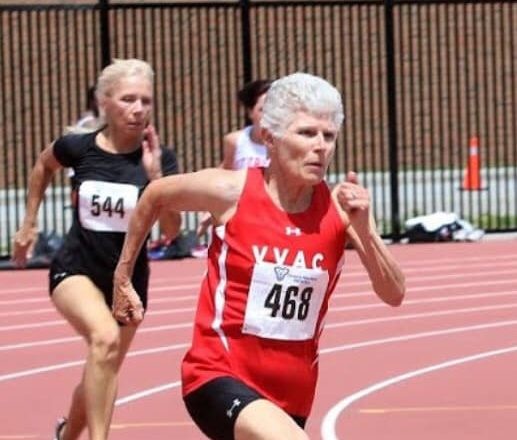
Del Grande has a long history of success on the track at the masters level. She began competing in 2002 (when she was 49) and has held numerous Canadian records in the sprints in various age categories. She has been named the Ontario Masters Athletics’ Female Masters Athlete of the Year seven times. Del Grande has set the 100m and 200m world records in the W60 and W65 categories, and in 2019 she added a W65 400m world record.
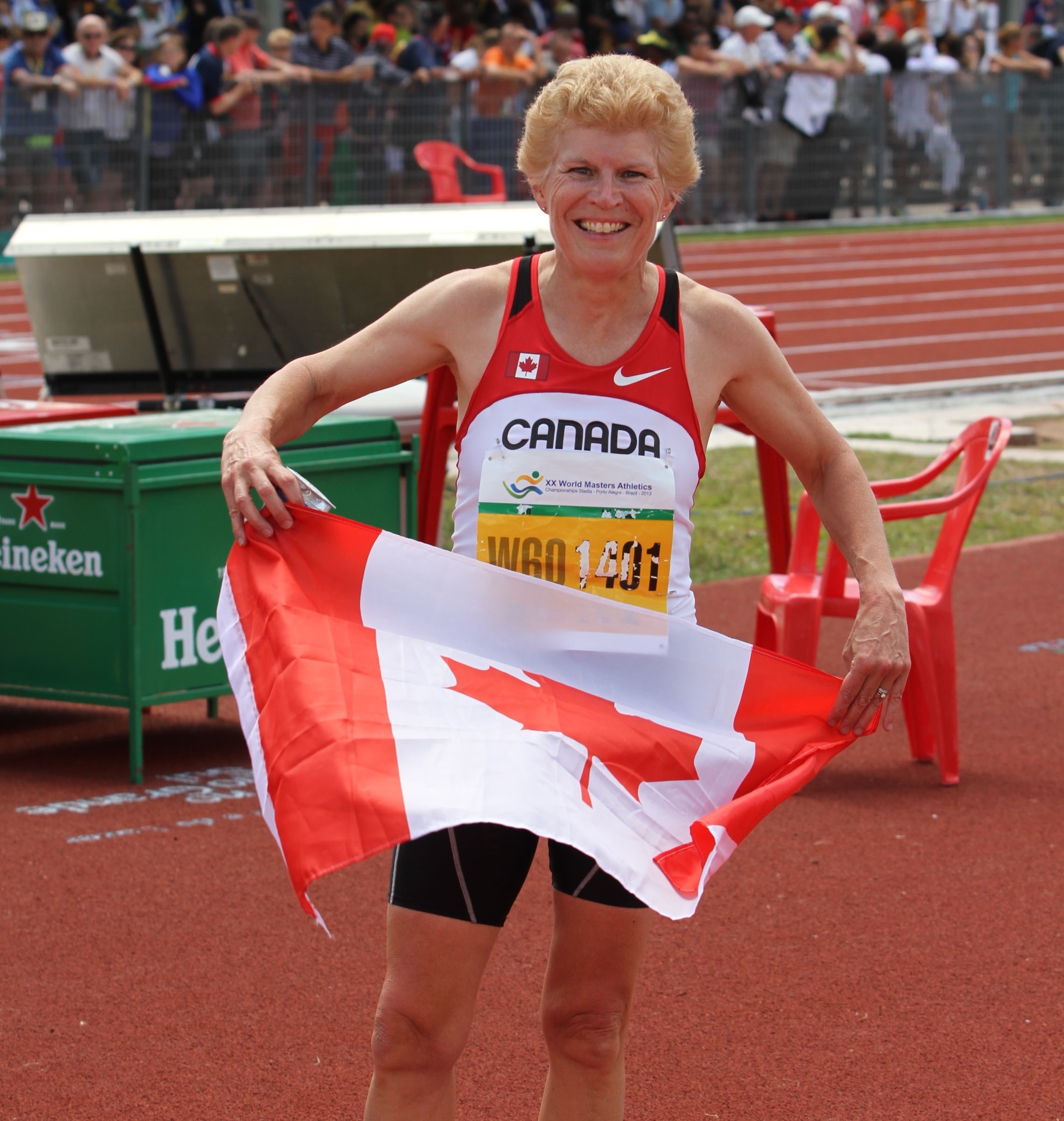
Canadian Olympians Natalia Hawthorn and Lindsey Butterworth were in action at the Ed Murphey Classic in Memphis, Tenn. Hawthorn said on Instagram that this was her last race of the season, as she went after the 2022 World Championship standard, which is 4:04. Hawthorn took home 2nd place in the women’s elite 1,500m in a time of 4:06.51, two seconds shy of the standard. Butterworth ran the 800m in a time of 2:01.57 for sixth, ahead of fellow Canadian middle-distance athlete Ashley Taylor, who finished seventh. Both Butterworth and Taylor also fell shy of the 1:59.50 800m standard for 2022 Worlds.
In the men’s 3000m, Jean-Simon Desgagnés finished third and set a new personal best of 7:53.01 over 3,000m in his last race of the 2021 track season. This result is a sigh of relief for Desgagnés, who recently finished a month of training at altitude in Flagstaff.
(08/18/2021) ⚡AMPby Marley Dickinson
Hong Kong Marathon likely to be held in October, but only some 10,000 fully vaccinated runners can join
Hong Kong Marathon is tentatively scheduled for October 24 after being suspended last year because of the pandemic, Commissioner of Sports Yeung Tak-keung said, but the number of participants will be reduced to some 10,000, while all must complete Covid-19 vaccination.
Yeung said that the race has been discussed by the Associations of Athletics Affiliates and was believed to be likely to come true. The association is expected to announce a decision within this week.
"If the marathon is held successfully, the route will be changed and the number of participants is expected to limit to some 10,000, with the requirements of completing two doses of vaccines," he said.
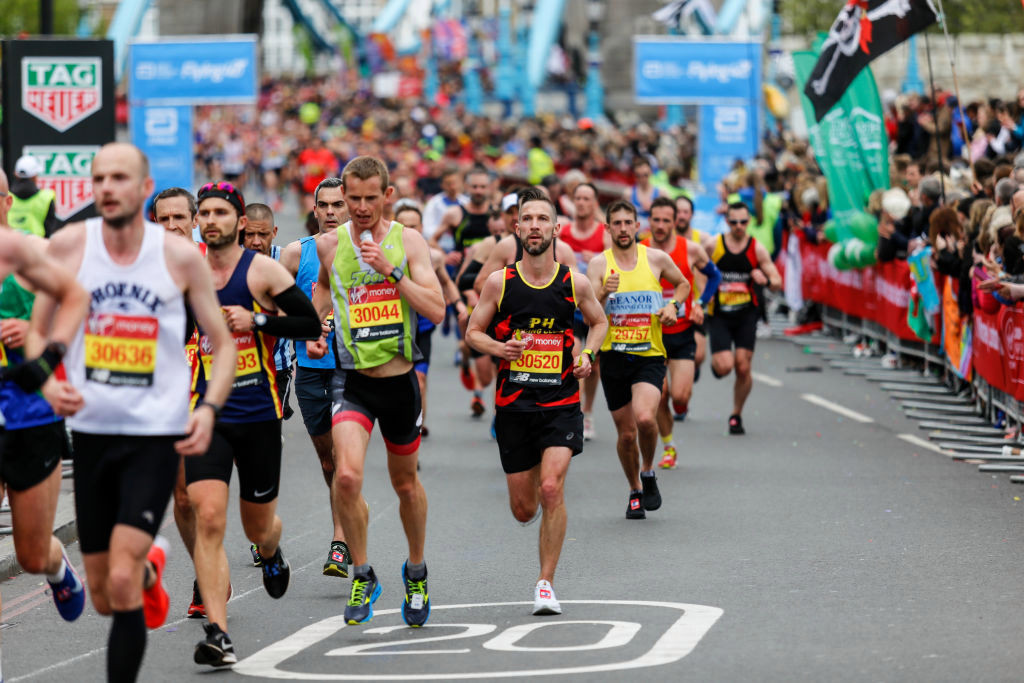
Speaking in a radio program today, Yeung said that some local television stations are negotiating with mainland authorities to purchase the broadcasting rights of the National Games of China to be held next month and that Hongkongers "will definitely be able to watch the games on TV."
But he said it is unknown how many stations can broadcast the games.
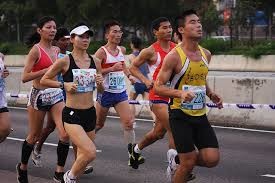
On the Tokyo Olympics which closed on August 8,Yeung said the record high six medals were out of expectation, which was very surprising.
He pointed out that the government has significantly pumped up resources allocated to sports over the past five years, from about HK$400 million in 2015 and 2016 to nearly HK$800 million this year.
Apart from increasing the number of athletes, the government has also put more resources in professional support, strengthening psychological and physiotherapy services, as well as hiring more physical trainers.
(08/17/2021) ⚡AMPHONG KONG MARATHON
The Hong Kong Marathon, sponsored by Standard Chartered Bank, is an annual marathon race held in January or February in Hong Kong. In addition to the full marathon, a 10 km run and a half marathon are also held. Around 70,000 runners take part each year across all events. High levels of humidity and a difficult course make finishing times...
more...2022 London Marathon pushed back to October
The 2022 London Marathon has been pushed back to October, meaning the event will take place away from its traditional spring slot for the third year in succession.
Last year’s race was initially postponed because of the coronavirus pandemic and then staged as an elite-only event in October, being raced in laps around a course in St. James’ Park to ensure spectators could not line the streets in the usual manner.
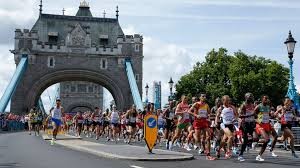
On October 3 this year, the mass participation element is set to return with up to 50,000 runners competing on the traditional 26.2-mile course from Greenwich to The Mall, while thousands more will participate remotely.
Next year’s edition had been slated to be held in April, but event director Hugh Brasher today announced that it will be pushed back to October 2 in order to give the race the best chance of going ahead in its usual form.
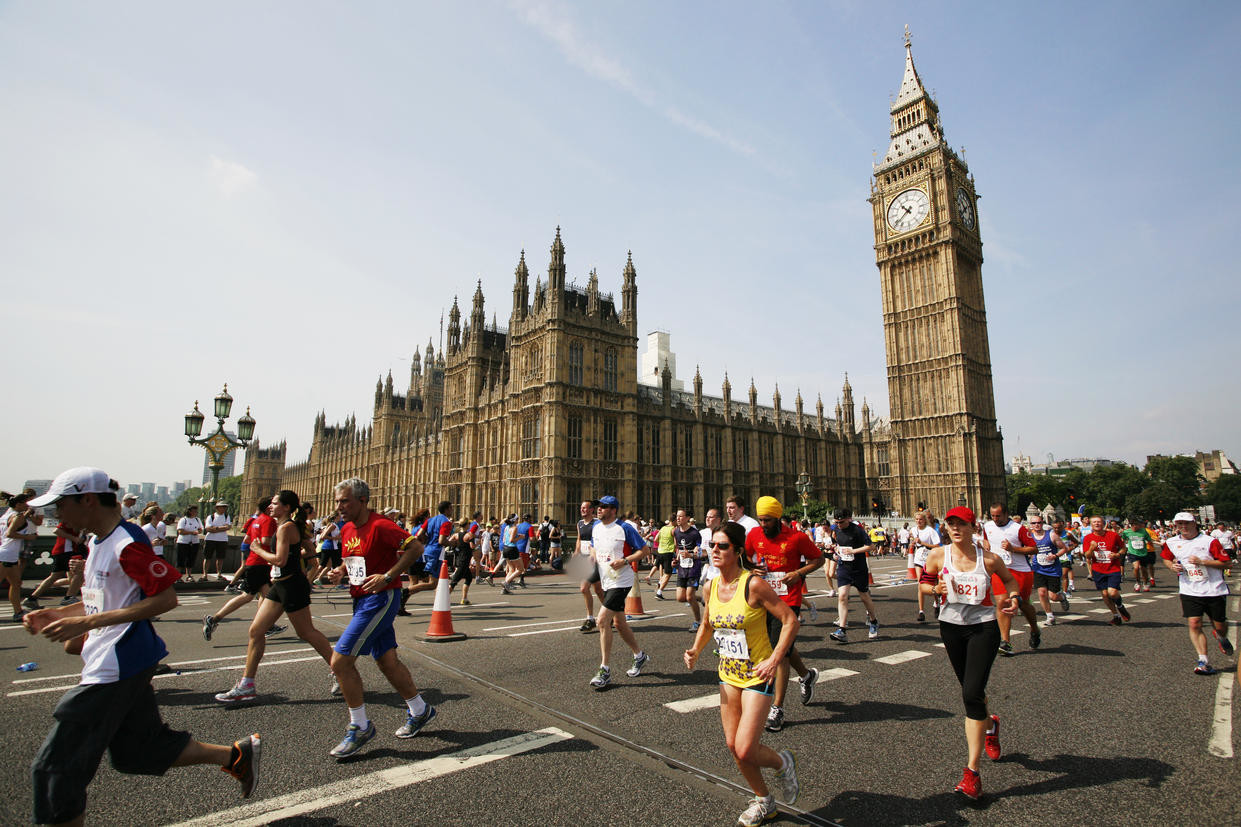
“We are living in a hugely uncertain world – a world where different approaches to managing Covid-19 are being explored and executed,” he said.
“The London Marathon is an extraordinary and unique celebration of the family of humankind coming together. We believe that by moving the 2022 event to October we give ourselves the best chances of welcoming the world to the streets of London, enabling tens of millions to be raised for good causes and giving people the certainty that their hard work and training will allow them to experience the amazing crowds cheering them every step of the way from Greenwich to Westminster.
“We are extremely grateful to the Mayor of London, the London boroughs of Greenwich, Lewisham, Southwark, Tower Hamlets, the City of Westminster and the City of London, Transport for London, The Royal Parks, BBC TV and our many other partners for their support in confirming the October 2, date for 2022.
“For 39 years, the London Marathon has been a spring event and we will return to our traditional slot in the calendar in 2023, when the TCS London Marathon will take place on Sunday April 23.”
(08/17/2021) ⚡AMPby Malik Ouzia
TCS London Marathon
The London Marathon was first run on March 29, 1981 and has been held in the spring of every year since 2010. It is sponsored by Virgin Money and was founded by the former Olympic champion and journalist Chris Brasher and Welsh athlete John Disley. It is organized by Hugh Brasher (son of Chris) as Race Director and Nick Bitel...
more...Why should runners consider doing Pilates?
Protecting your body from the impact of running with Pilates can improve your performance, strength and mobility – and help you to run pain-free.
We all know that we should be cross-training, but finding time to go to a class or the gym when we’d rather be out running isn’t always easy. Online classes have never been more available and are ideal for us runners – they’re easy to fit in before or after a run and can be done from the comfort of our front room. But what should we be doing? Nicki Philips is the founder of niix, a fitness app for runners offering workouts, nutrition and lifestyle advice. She says that Pilates is a must for runners.
“As an athletic discipline, running puts the body under huge amounts of pressure and impact,” Over time, this can cause our bodies to create irregularities, unbalanced muscle development and irregular postural alignment. This can lead to aches and pains – or worse, injury. Some of us may also find that we are unable to increase speed or performance,” she explains. The good news? Pilates has been shown to help with all of these things.

So, what is Pilates? “Pilates is all about making us move better,”. “It helps us to recognise our body as a complete system and create stability for better running technique. It offers increased flexibility and a focus on building the deep stabilising pelvic floor and core muscles, glute strength and joint stability and mobility. This creates a stronger base for athletic activity and balance throughout the body. As a result, athletes can withstand more rigorous training regimes and ultimately improve performance, injury free.”
This all sounds great to us – and there’s more. Nicki shares her 4 fantastic reasons why she thinks that all runners should be practising Pilates:
Better Posture
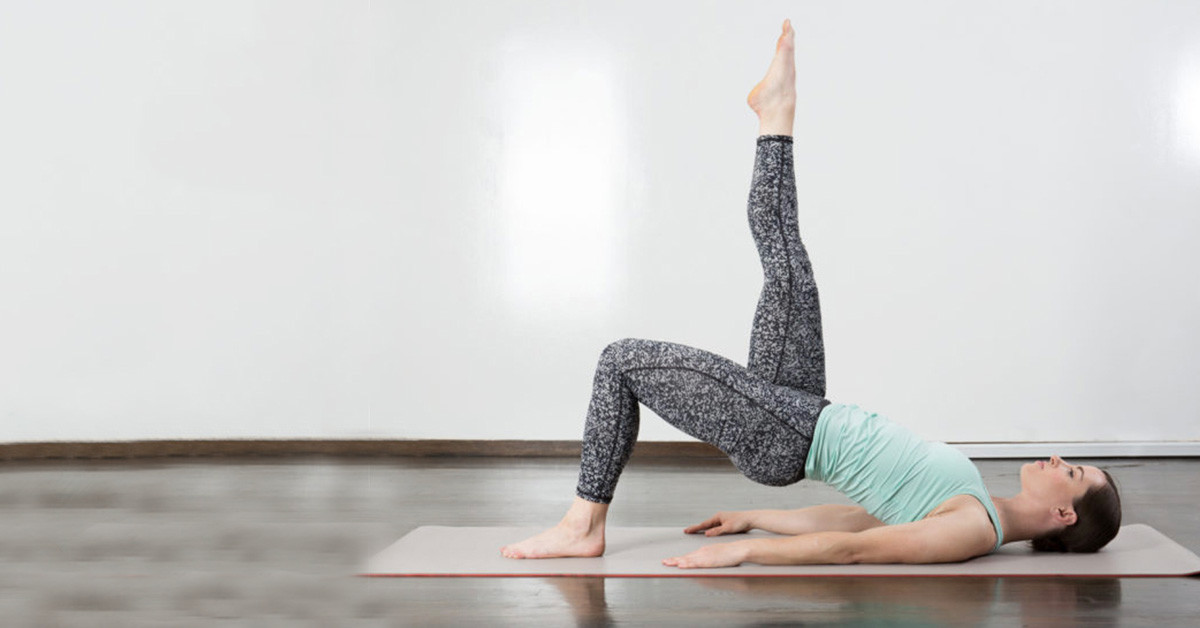
The key to having a well-functioning and strong body, is to have an aligned and neutral posture. Over time we pick up bad postural habits, create a weak or poorly aligned spine and pelvis. Muscle development is also affected and our body will compensate by favouring certain muscles groups over another. This is often seen with runners having larger quads with compromised glute muscle, tight hip flexors, hamstrings and pectorals, which can lead to low back pain or reduced performance.
Pilates aims to strengthen and mobilise muscles by isolating muscles groups but by identifying that the body works as a whole, with stability coming from scapular stability, pelvic floor and core connection. This means Pilates exercises can help strengthen particular areas, building muscle memory and a more balanced body.
Stronger core
Most of us know the importance of core strength – but this does not just mean the abdominals. Pilates strengthens the whole core; pelvic floor, glutes, back extensors, transverse abdominus, rectus abdominus and obliques, allowing the body to work in harmony. This leads to better alignment, balance and stability through the pelvis and spine, enabling the body to better receive, control and transfer forces during running.
Having an efficient core helps to support the pelvis and torso as you run, allowing movement to come from the hips, knees and feet and by better recruiting power from the legs and glutes.
Glute activation and strength
A weak core, paralleled with poor glute activation, will often lead to compression of the lower back. As impact is transferred through the body, the facete joints in the spine can knock together, which can cause lower back pain over time. The vertebral discs can also be compressed, which again leads to pain – none of which are what we want!
By increasing glute strength and activating the posterior chain through targeted Pilates exercises, not only will help with better postural alignment and reducing lumbar compression but it will increase the transfer of power, improving performance. Women often have weaker glutes thanks to our natural postural positioning (anterior tilt of pelvis is very common), and a weak core or overuse of the quad muscles will only exacerbate things. Focusing on building strength in this area will improve running technique, helping us to use our glute muscles rather than relying on our quads, and subsequently improve performance.
Improves flexibility and range of motion
Pilates is renowned for helping improve flexibility and mobility through a combination of deliberate and controlled movements challenging large and small muscle groups. By strengthening and recruiting core muscles and bettering stability, we can challenge and develop joint mobility and power. Strength alone can leave you tight, stiff and immobile and can lead to injury. By balancing flexibility with strength, movement patterns are improved, correct muscle recruitment is achieved and the body can move more freely without pain.
(08/17/2021) ⚡AMPby Women´s Running
Eliud Kipchoge says that one day his marathon records will be broken and he will be very happy
Marathon superstar Eliud Kipchoge has predicted that a "great runner" will one day shatter all of his records and he will be happy if they do.
The legendary Kenyan athlete retained his Olympic gold medal in Tokyo this month and is now recovering at his home close to the running centre of Eldoret in Kenya.
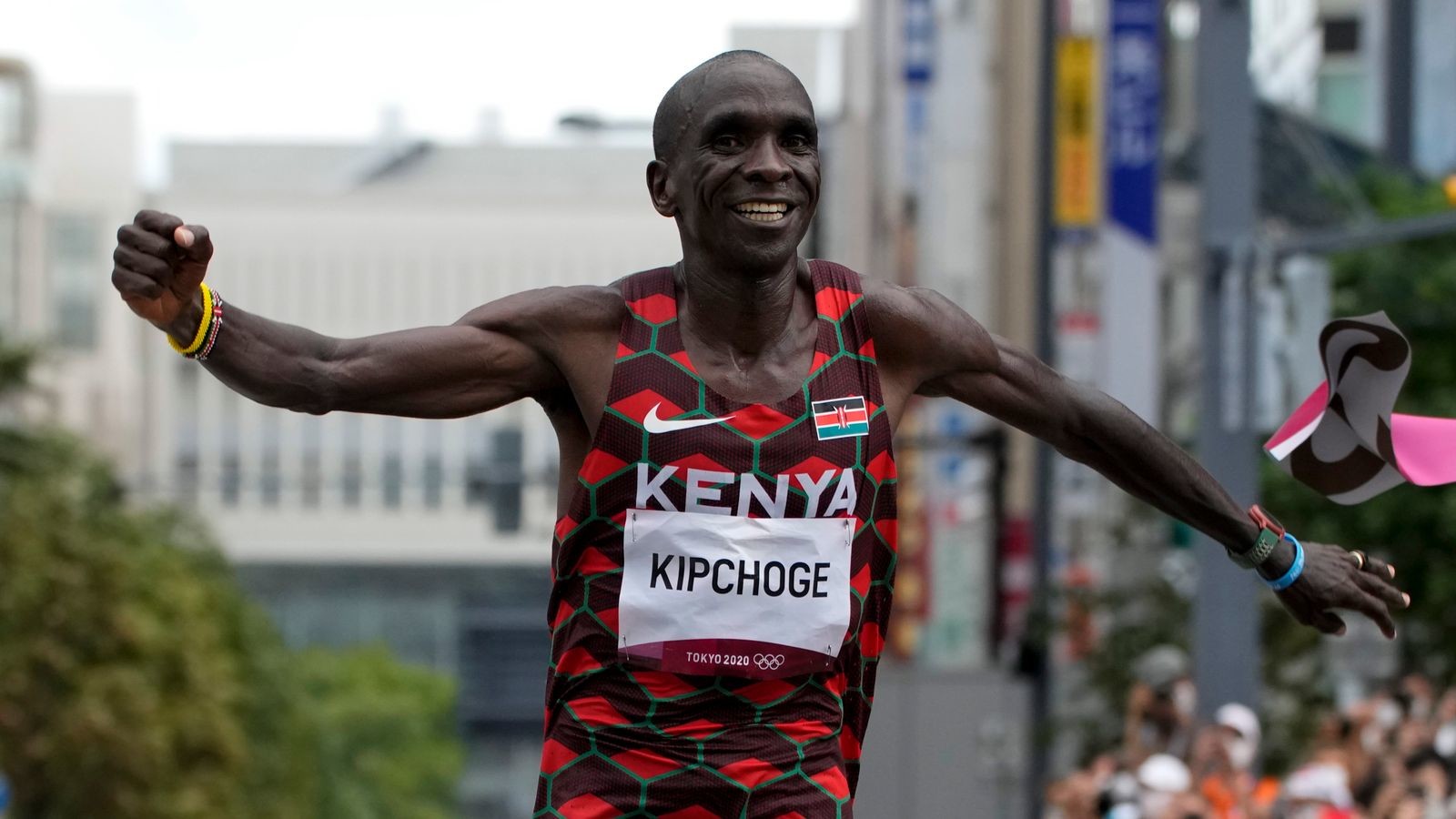
"I will be a happy man to see one of the great runners going below the two-hour mark in the marathon," he told Sky News.
"This is sport. It will show us that sport is to be enjoyed and it's you today and somebody else tomorrow. Breaking two hours in a normal marathon is a possibility."
Kipchoge holds the official world record with his time of 2:01:39 in the Berlin marathon of 2018, but he made history in Vienna the following year by becoming the first person to ever complete 26.2 miles in under two hours.
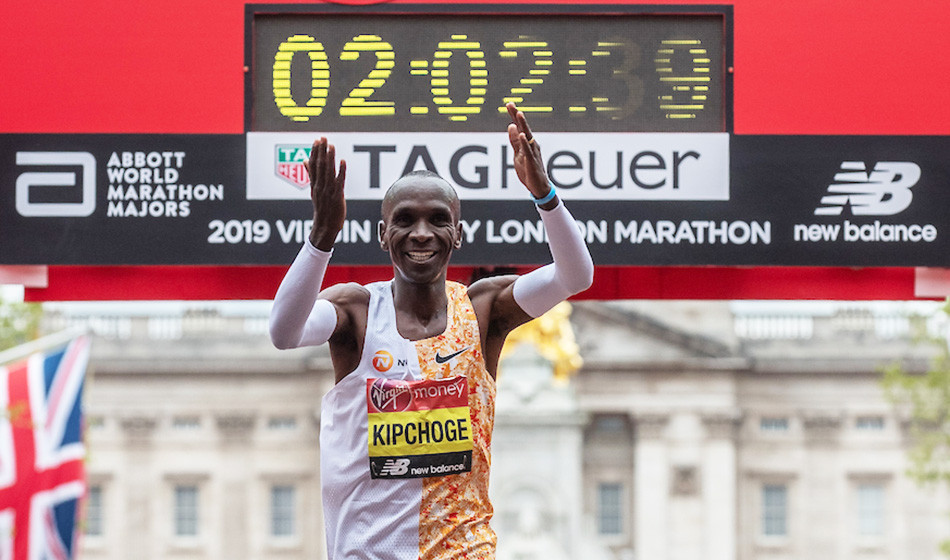
"I told all 40 of the other runners (his pacemaker team) 'let us go up to the moon and land together and make history'. It was like going to the moon and seeing what it's like there.
"There was no doubt. I didn't have any doubt. When I crossed the line my mind was blown. I was really happy to be the first human under two hours.
"That was the greatest day of my life. I had to share the happiness with my wife Grace, she has been such a good support, always supporting me. She takes care of the whole family and the children so she deserved a huge, huge hug."
His achievements have now been turned into a film, 'Kipchoge: The Last Milestone', by award-winning director Ridley Scott and can be watched on Sky Documentaries.
Kipchoge won't be in London for the marathon on October 3, but has a simple message for everyone taking part.
"Please enjoy running in London, let us make London great again. Let us bring hope again to the people in the UK, let us bring hope again to people around the world. This has been a tough time with COVID-19, but this thing will go away. Let us run as one!"
Kipchoge remained tight lipped about his future plans, saying that his focus right now is on recovering from his Olympic exploits.
"In a month or so I will sit down with my coach Patrick Sang and we will see what the future holds, what opportunities there are."
Kipchoge has won London four times and has only ever been beaten twice in his entire marathon career.
(08/17/2021) ⚡AMPby Enda Brady
Sifan Hassan to Attempt 5k World Record at Prefontaine Classic
(The 46th Prefontaine Classic, member of the Wanda Diamond League of international track & field meets, will be held August 20-21 at Hayward Field.)
Double Olympic gold medalist Sifan Hassan will bring her unmatched distance skills back to the Prefontaine Classic with an attempt at the world record in the 5000 meters on the first of the meet’s two days.
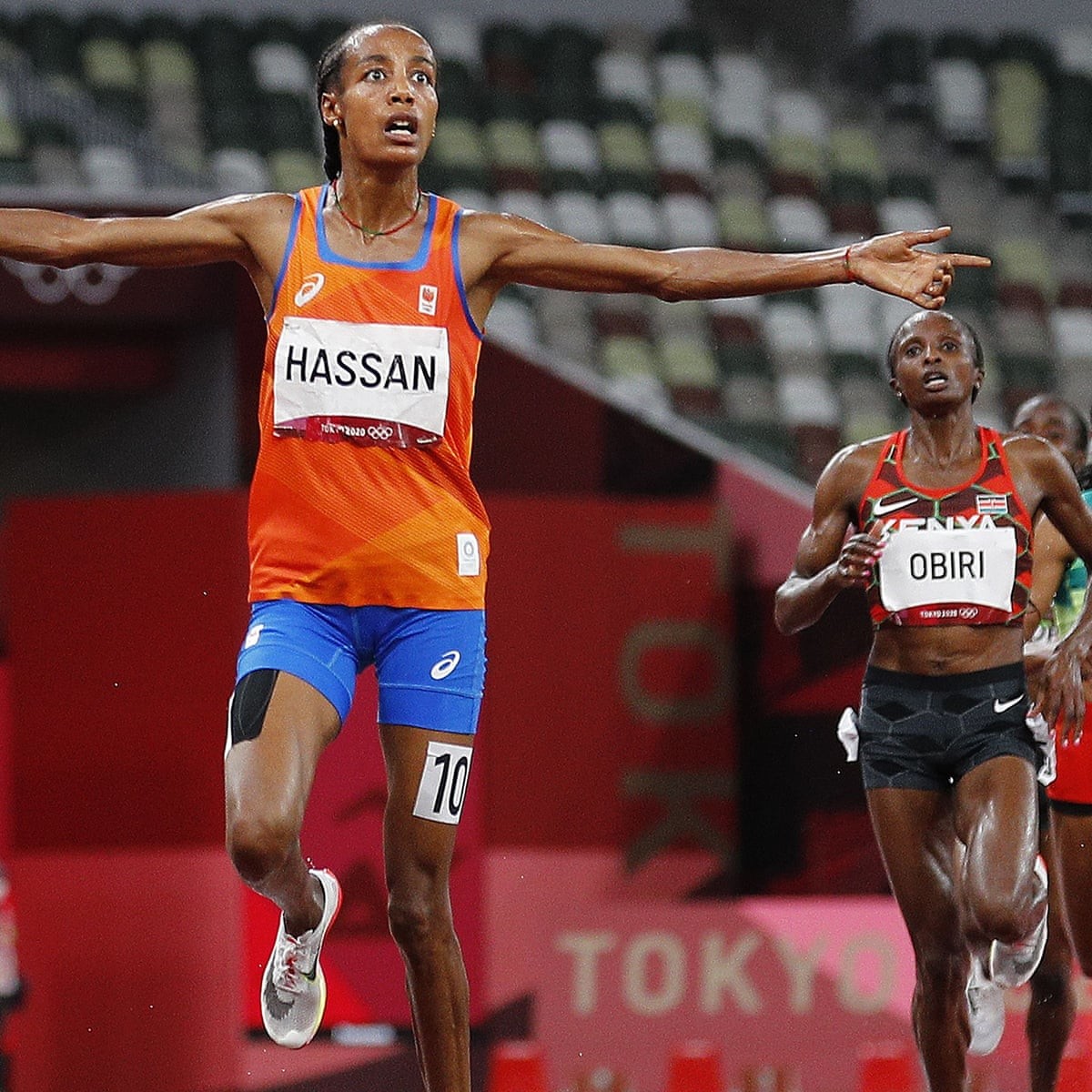
Hassan’s race will conclude a distance-special session on Friday evening as the Pre Classic returns to the re-imagined Hayward Field on the University of Oregon campus. Festivities are set to begin at 8:00 p.m. Pacific time.
This will be the first race for Hassan since her historic Tokyo Olympics, where she became the first woman or man to earn medals in the 5000, 1500 and 10,000 in the same Olympic Games. Her medal haul in Tokyo equaled the most individually by any track & field athlete with a pair of gold medals in the 5k and 10k that sandwiched a bronze in the 1500.
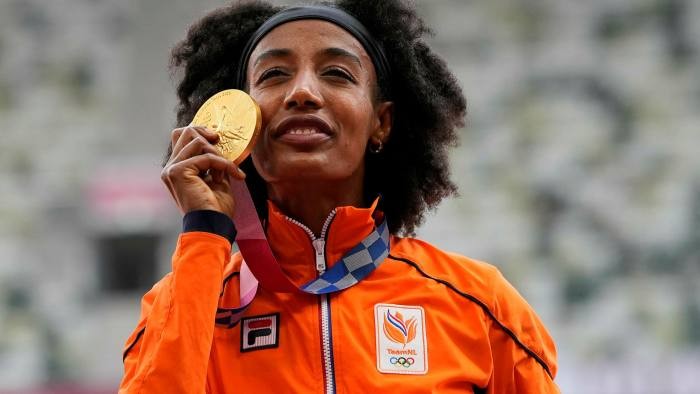
Hassan even avoided potential disaster, getting up from a fall on the final lap of her heat in the 1500 to not only catch the qualifiers but pass them all in finishing first.
The 28-year-old Hassan also made history at 2019 World Championships in Doha, becoming the first woman or man to sweep gold medals in the 1500 and 10k.
Hassan owns two world records on the track – in the uncanny combination of the mile (4:12.33) and the longest distance achieved in the one hour run (18,930 meters, just over 11¾ miles).
She added a third WR on June 6 in her homeland of the Netherlands, lowering the 10k best by more than 10 seconds at 29:06.82. At the time she matched American Mary Slaney as the only person to hold both the mile and 10k WRs simultaneously. Alas, Hassan’s 10k WR lasted but two days and she now sits at No. 2 all-time.
Hassan also owns the Wanda Diamond League record in the 3000 meters, achieved at the 2019 Pre Classic in 8:18.49 when it was held at Stanford. Just four days after her 10k WR she set the 1500 DLR at 3:53.63, but that was broken in July. Her PR in the 1500 is 3:51.95, a European record that makes her No. 7 all-time.
Curiously, the weakest of Hassan’s PRs is right in the middle of her fantastic range, as her 5k best is “only” 14:22.12, which puts her No. 12 all-time. The world record that she is aiming for 14:06.62.
This will be Hassan’s fifth Pre Classic, and she has PRed in three of her previous four appearances.
(08/16/2021) ⚡AMPPrefontaine Classic
The Pre Classic, part of the Diamond League series of international meets featuring Olympic-level athletes, is scheduled to be held at the new Hayward Field in Eugene. The Prefontaine Classicis the longest-running outdoor invitational track & field meet in America and is part of the elite Wanda Diamond League of meets held worldwide annually. The Pre Classic’s results score has...
more...Olympic champion Peres Jepchirchir has vowed never to betray her motherland for any cash incentives
Amidst the rising cases of Kenyan athletes seeking solace abroad after missing out on opportunities back home, the 2020 Olympic Games star insists her allegiance to her motherland remains firm.
“I'm loyal to my country. I can't be convinced to change my citizenship with money. We have so many Kenyans who represented other countries but never made it at the Olympics,” said Jepchirchir, who arrived in the country on Saturday morning before being accorded a rapturous welcome in her home in Eldoret.
“Some people change their citizenship to other countries so that they can get a chance to participate in the Olympics because, as you know, Kenya is highly competitive,” she said.
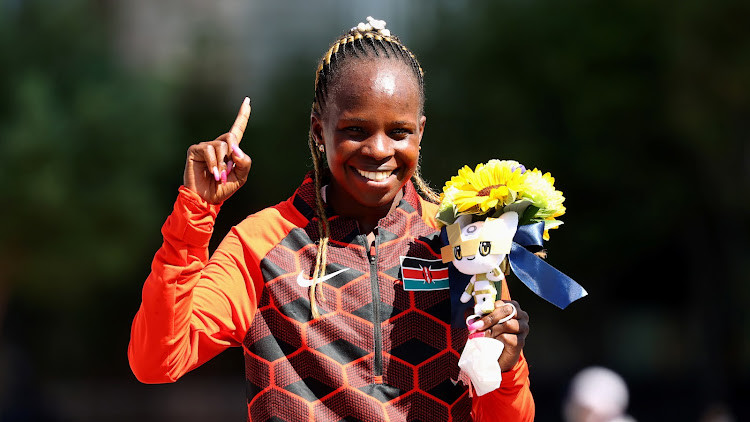
The 27-year-old withstood sweltering heat and humidity as she cruised through the streets of Sapporo – some 800km north of Tokyo – on her way to the historic conquest.
Jepchirchir led a 1-2 Kenyan sweep in the women's marathon. Her compatriot, Brigid Kosgei, emerged second while American Molly Seidel bagged the bronze medal.
“It had always been my dream to compete at the Olympics. It was unbelievable. I wasn't expecting (to perform) because this was my first time. I didn't expect to be the one to win gold,” said Jepchirchir.
“My time wasn't good enough because the weather affected my speed. I wish to improve on my personal time to 2 hours, 15 minutes because the current record is at 2 hours, 14 minutes.”
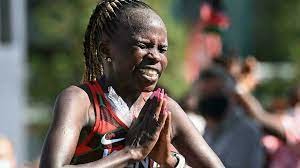
Jepchirchir clocked 2 hours, 27 minutes, 20 seconds, 10 minutes off her personal best.
“Because I had already run 2 hours, 23 minutes, my prayer was to run 2 hours, 17 minutes and then 2 hours, 15 minutes,” she said.
“I will not quit marathon because it helps me with speed. I wish to relax and see how the body will respond before I can think of something else."
“I wish to be among those representing the country at the next Olympics,” she added.
In response to murmurs reverberating across the country that the government gave the medalists a cold shoulder on arrival, Jepchirchir chose her words carefully.
“Let's not compare ourselves with other countries in terms of how we were received. We don't know about Uganda, it's another country it's another home," she said.
“Our home is Kenya and we have our own styles of doing things. The government gave us enough support during the Games. I believe they are planning to do something good to appreciate our efforts.”
She asked Kenyans to appreciate the athletes for their efforts even if they fell short of replicating the feats attained at previous events.
“We should thank God we actually even managed to clinch the ten medals, there are other countries that didn't get anything. We are proud of ourselves and we will work on our shortcomings,” she observed.
(08/16/2021) ⚡AMPby Tommy Mbalia
Tokyo 2020 Olympic Games
Fifty-six years after having organized the Olympic Games, the Japanese capital will be hosting a Summer edition for the second time, originally scheduled from July 24 to August 9, 2020, the games were postponed due to coronavirus outbreak, the postponed Tokyo Olympics will be held from July 23 to August 8 in 2021, according to the International Olympic Committee decision. ...
more...Jemal Yimer, Yebrgual Melese, Edna Kiplagat and Asefa Mengstu among Boston starters
Olympians, big city marathon winners and several former champions will contest the Boston Marathon on October 11, in what will be the first time the World Athletics Elite Platinum Road Race has been held in autumn.
Nine women who have clocked sub-2:22 lifetime bests will line up in Hopkinton, including Ethiopia’s Yebrgual Melese, whose 2:19:36 personal best makes her the fastest in the field. She’ll be joined by compatriot Mare Dibaba, the 2015 world champion and 2016 Olympic bronze medalist. Ethiopian 2:20:24 marathon runner Workenesh Edesa, winner of past Xiamen, Lanzhou, and Marrakech Marathons, will make her Boston debut.
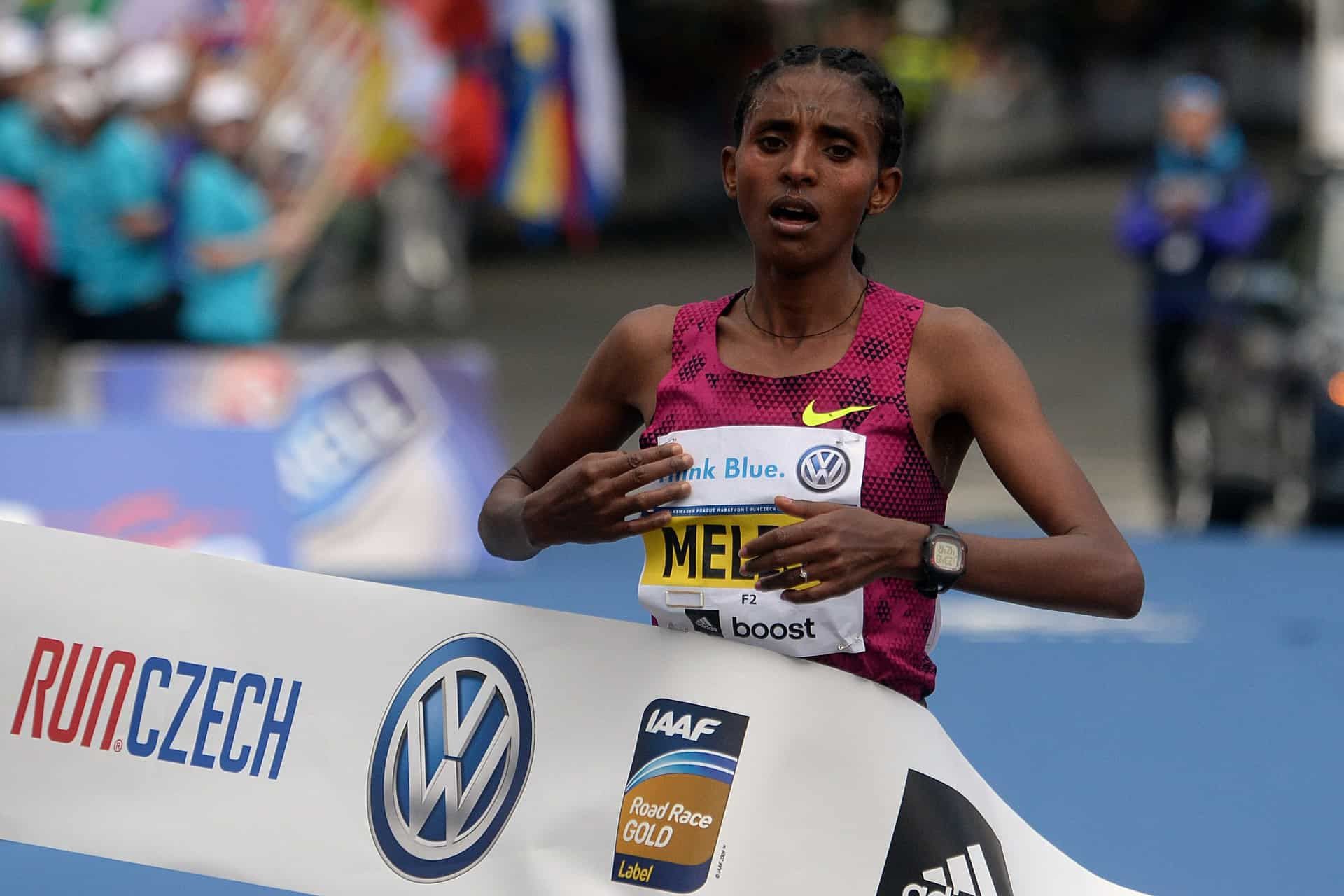
Five of the top seven finishers from the 2019 Boston Marathon return, aiming to break the tape on Boylston Street: Kenya’s two-time world champion Edna Kiplagat, USA’s Jordan Hasay, Des Linden, Kenya’s Caroline Rotich and Mary Ngugi.
A trio of Kenyans with prior top-five finishes in Boston look to contend for the win in the men’s race, as Wilson Chebet, Felix Kandie, and Paul Lonyangata will use knowledge of the undulating course to their advantage. They’ll be up against a trifecta of sub-2:06 Ethiopians in Lemi Berhanu, the 2015 Boston champion, and Dejene Debela and Asefa Mengstu, who finished second and third at the 2019 Chicago Marathon. Both Debela and Mengstu will be running their first Boston Marathon.
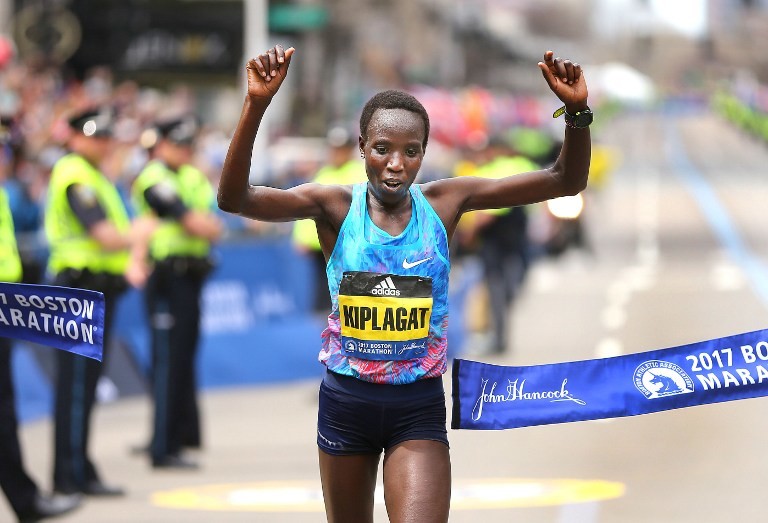
After much success over the half marathon and in cross country, Kenya’s Leonard Barsoton and Ethiopia’s Jemal Yimer will both make their long awaited marathon debuts in Boston. Barsoton earned a silver medal at the 2017 World Cross Country Championships, while Yimer owns the Ethiopian half marathon record of 58:33.
Eight of the top 12 finishers from the US Olympic Trials Marathon will also compete in Boston, led by 2021 Olympian Abdi Abdirahman.
(08/16/2021) ⚡AMPby World Athletics
Boston Marathon
Among the nation’s oldest athletic clubs, the B.A.A. was established in 1887, and, in 1896, more than half of the U.S. Olympic Team at the first modern games was composed of B.A.A. club members. The Olympic Games provided the inspiration for the first Boston Marathon, which culminated the B.A.A. Games on April 19, 1897. John J. McDermott emerged from a...
more...Jamaican Olympic superstar Elaine Thompson-Herah confirmed for Lausanne and Paris
Fresh from her triple Olympic triumph in Tokyo, Jamaican superstar Elaine Thompson-Herah will take on Olympic silver medalist Shelly-Ann Fraser-Pryce at the Wanda Diamond League meeting in Lausanne on August 26.
In a mouth-watering clash of the titans, the top six finishers from the Olympic 100m final will be in action at Lausanne’s Athletissima meeting as Thompson-Herah and Fraser-Pryce line up against fellow Jamaican Shericka Jackson, the bronze medalist in Tokyo, as well as Ivorian star Marie-Josée Ta Lou and Swiss duo Ajla Del Ponte and Mujinga Kambundji.
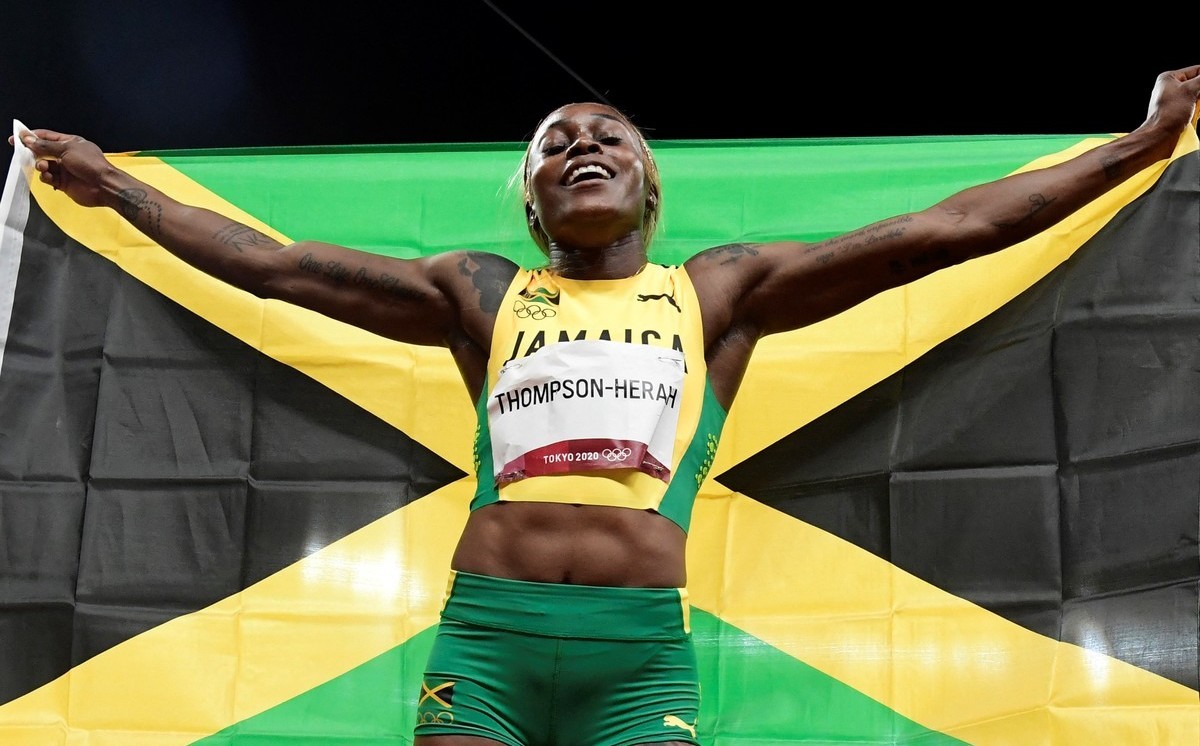
Thompson-Herah and Jackson will also clash over 100m at the Meeting de Paris on August 28 when they’ll also take on world 200m champion Dina Asher-Smith.
They are three of several Olympic medalists who’ll be in action at the Charlety Stadium later this month.
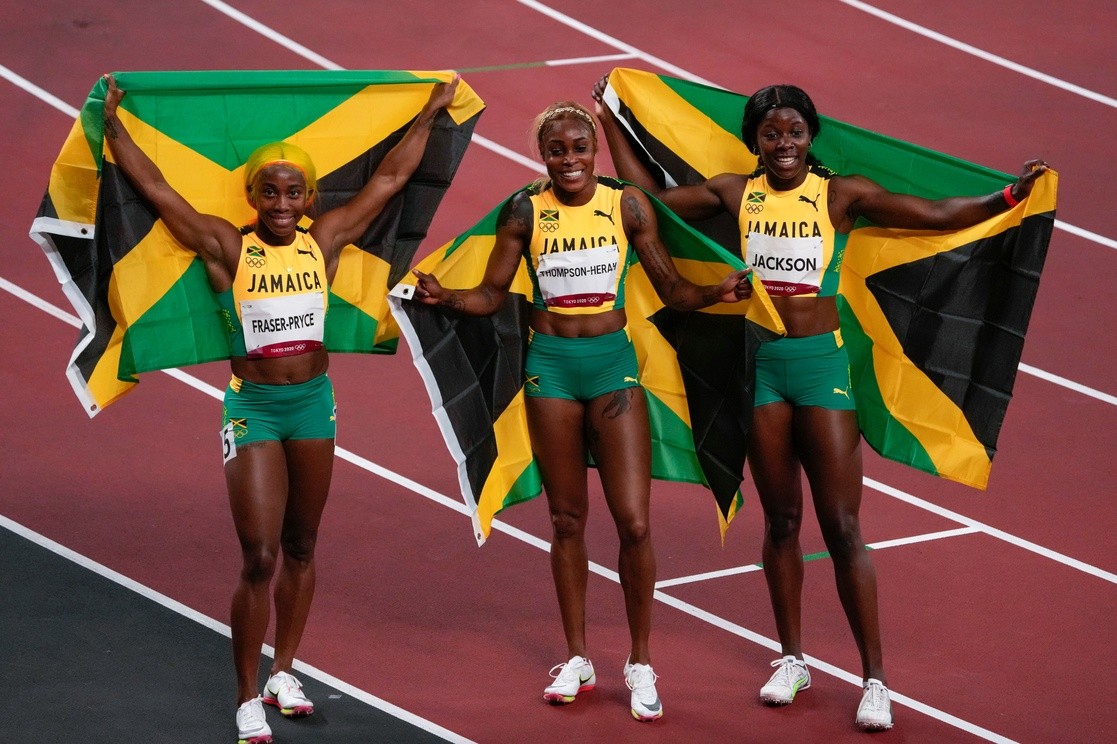
All three podium finishers in the women’s high jump will reunite in the French capital as Maria Lasitskene takes on Australia’s Nicola McDermott and Ukraine’s Yaroslava Mahuchikh.
Olympic pole vault champion Mondo Duplantis takes on USA’s Chris Nilsen, the silver medalist in Tokyo, as well as two-time world champion Sam Kendricks – who was unable to compete in Tokyo – and former world record-holder Renaud Lavillenie.
Olympic steeplechase champion Soufiane El Bakkali and world champion Conseslus Kipruto – another duo that was unable to clash in Tokyo – will be in action in Paris, as will Olympic bronze medalist Benjamin Kigen.
Puerto Rican sprint hurdler Jasmine Camacho-Quinn, Indian javelin thrower Neeraj Chopra, Jamaican sprint hurdler Hansle Parchment and US discus thrower Valerie Allman are four more Olympic champions who’ll be heading to the French capital later this month. Allman will face two-time Olympic champion Sandra Perkovic and French veteran Melina Robert-Michon, while Parchment will be up against Olympic finalists Pascal Martinot-Lagarde and Aurel Manga.
Laura Muir and Kalkidan Gezahegne, who earned Olympic silver over 1500m and 10,000m respectively, will meet in the middle over 3000m in Paris. Meanwhile, Olympic 100m bronze medalist Fred Kerley and Olympic 200m bronze medalist Kenny Bednarek will square off over the half-lap distance.
(08/16/2021) ⚡AMPby World Athletics
Ben Flanagan and Edna Kiplagat Win the 49th Annual ASICS Falmouth Road Race
Organizers of the 49th Annual ASICS Falmouth Road Race, one of America’s premier running events of the summer, officially brought road racing back to the streets of Falmouth today with Canadian, Ben Flanagan, winning the Men’s Division for a second time in 32:16 and Kenyan, Edna Kiplagat winning the Women’s Division in 36:52.
Flanagan set up his strategy in advance. “I was out with my family at the Black Dog Café and I took a run on the course,” said Flanagan. “I noticed a crosswalk just before the final turn and decided I would make my move there. I knew, if I could hold off the pack until we got to the final downhill there was no way they could catch me.”
The men’s race began with Frank Lara going to the front coming out of Woods Hole to post a 4:28 first mile. An accomplished pack of 18 men lined up behind Lara, as he held the lead through most of the race. By mile six, the men started to sort themselves out. Biya Simbassa, a University of Oklahoma graduate -- who recovered from a fall at the halfway mark -- stayed in the hunt, as did Emmanuel Bor, fresh off his fifth at the U.S. Olympic Trials 5000m.
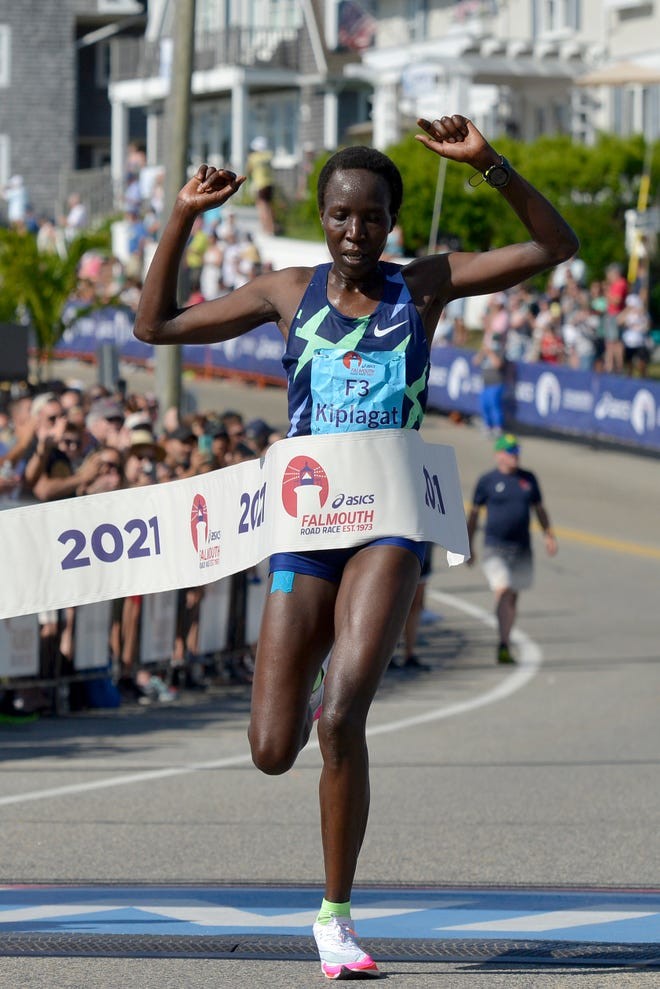
Flanagan made a determined push at the base of the final hill before driving over the top to seal his victory over Simbassa, Bor and Lara - all finishing within 6 seconds of each other.
The women’s race broke early with a pack of 30 dropping to seven by the second mile. Iveen Chepkemoi, a young 24-year-old talent from Kenya, who trains in Colorado Springs, put a gap on Edna Kiplagat, Emily Durgin, Fiona O’Keeffe and past Falmouth champion Diane Nukuri. By the halfway point, the race was between Kiplagat, a Boston, London and New York City Marathon champion, and Chepkemoi, with the second pack fading by 20 seconds. At mile four, Kiplagat pulled away as Chepkemoi got caught by the chase pack.
“This was a fast race, and I needed it at this point in my training because I’m running the Boston Marathon in October,” said Kiplagat. “Once I saw the finish, I focused on keeping away from second place.”
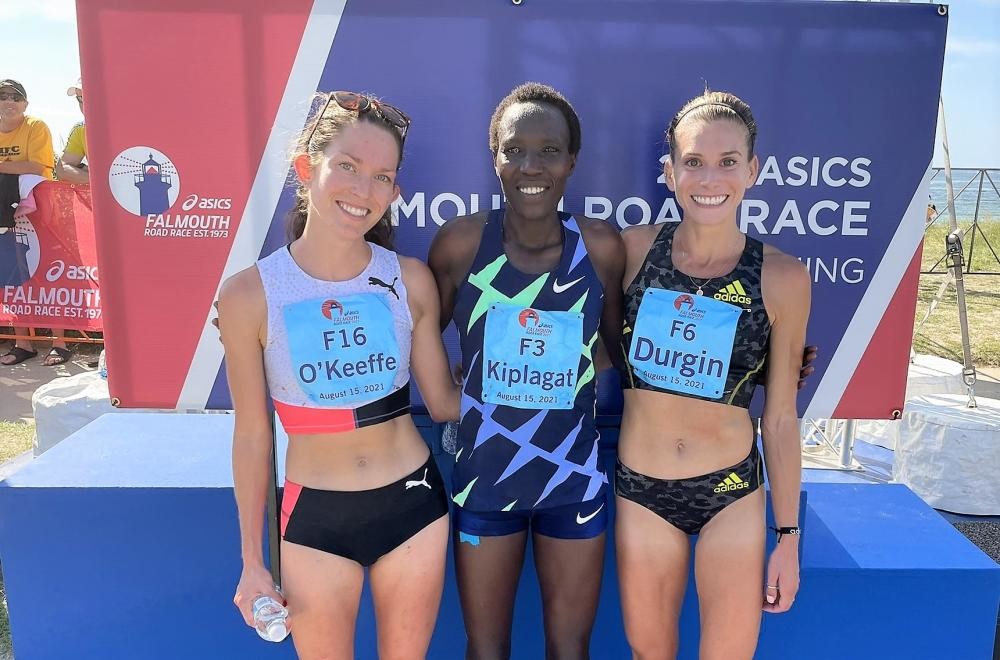
Durgin edged O’Keefe by one second to secure her third runner-up finish of the summer. “This is a beautiful course. We were all working together feeding off each other,” O’Keefe said. She was second at the U.S. 10K and 6K Championships. O’Keefe, a six-time All American at Stanford now coached by Olympian Amy Cragg, finished third.
In the Wheelchair Division, Hermin Garic, a veteran of eight Falmouth Road Races, took his first win with a 25:40. “I worked my butt off for this win,” said Hermin, who will be wheeling Utica Boilermaker the day before he heads to the 125th Boston Marathon. Emeilia Perry took the women’s wheelchair race in 37:39. “I’m really excited. This is my first Falmouth Road Race and I wasn’t expecting that last hill, ” Perry said after the race.
Additionally, the 2020 Tokyo Olympic Marathon bronze medalist, Molly Seidel, served as the official race starter and joined the ASICS Falmouth Race field of nearly 8,000 registered participants as its very last runner. For every runner that she passed along the 7-mile course, the Falmouth Road Race pledged to donate $1 to Tommy’s Place, a vacation home in Falmouth for kids fighting cancer. Tim O’Connell, founder of Tommy’s Place, announced an additional dollar-for-dollar match. While Seidel officially ran past 4,761 runners along the way, the Falmouth Road Race is pleased to announce that it will double its pledge, bringing its donation to $9,522.00 in appreciation of Seidel’s participation in this year’s event and to celebrate her victory in Tokyo. Combined with O’Connell’s match, that brings the grand total to $19,044.
About Falmouth Road Race, Inc. The Falmouth Road Race was established in 1973 and has become one of the premier running events of the summer season. Each year the race draws an international field of Olympians, elite and recreational runners out to enjoy the iconic 7-mile seaside course. The non-profit Falmouth Road Race organization is committed to promoting health and fitness through community programs and philanthropic giving.
(08/16/2021) ⚡AMPby Running USA
Falmouth Road Race
The Falmouth Road Race was established in 1973 and has become one of the premier running events of the summer season. Each year the race draws an international field of Olympians, elite runners and recreational runners out to enjoy the scenic 7-mile seaside course. The non-profit Falmouth Road Race organization is dedicated to promoting health and fitness for all in...
more...9-year-old boy sets record in the 1,500m
Tokyo Olympians weren’t the only ones running fast last week. Nine-year-old Victor Jaimez-Solorio of Apple Valley, CA, set a new U.S. under-10 1,500m record on August 5 at the AAU Junior Olympics in 4:42.97, beating the previous record of 4:57.47 by nearly 15 seconds. This was the second win of the meet for the young track star, who also won the 800m the day before.
Solario averaged 1:15 per lap to maintain his record-setting pace, which is equal to about 3:08 per kilometre… not bad for a kid who hasn’t reached middle school yet. The youngster also has a personal best time of 1:05 over 400 metres, according to MileSplit.com. If Solario sticks with it, his will be a name to watch out for in a few year’s time.

by Running Magazine
Men's Marathon was 2nd-Most Viewed Event at Tokyo Olympics
On Aug. 10, Video Research, Ltd. announced that the closing ceremony of the Tokyo Olympics broadcast on NHK on Aug. 8 earned an average viewership rating of 46.7% in the greater Tokyo metropolitan area, 41.5% in the Fukuoka area, 41.3% in the Osaka area, and 40.7% in the Nagoya area. In the 32 regions surveyed, Video Research calculated that 46,997,000 people nationwide watched the closing ceremony in realtime.
The 46.7% viewership rating far surpassed that of the 2008 Beijing Olympics closing ceremony, which recorded only 25.1%. It was the third-highest rating on record for Olympic closing ceremonies, behind the 1964 Tokyo Olympics with 63.2%, and the 1972 Munich Olympics with 46.9%.
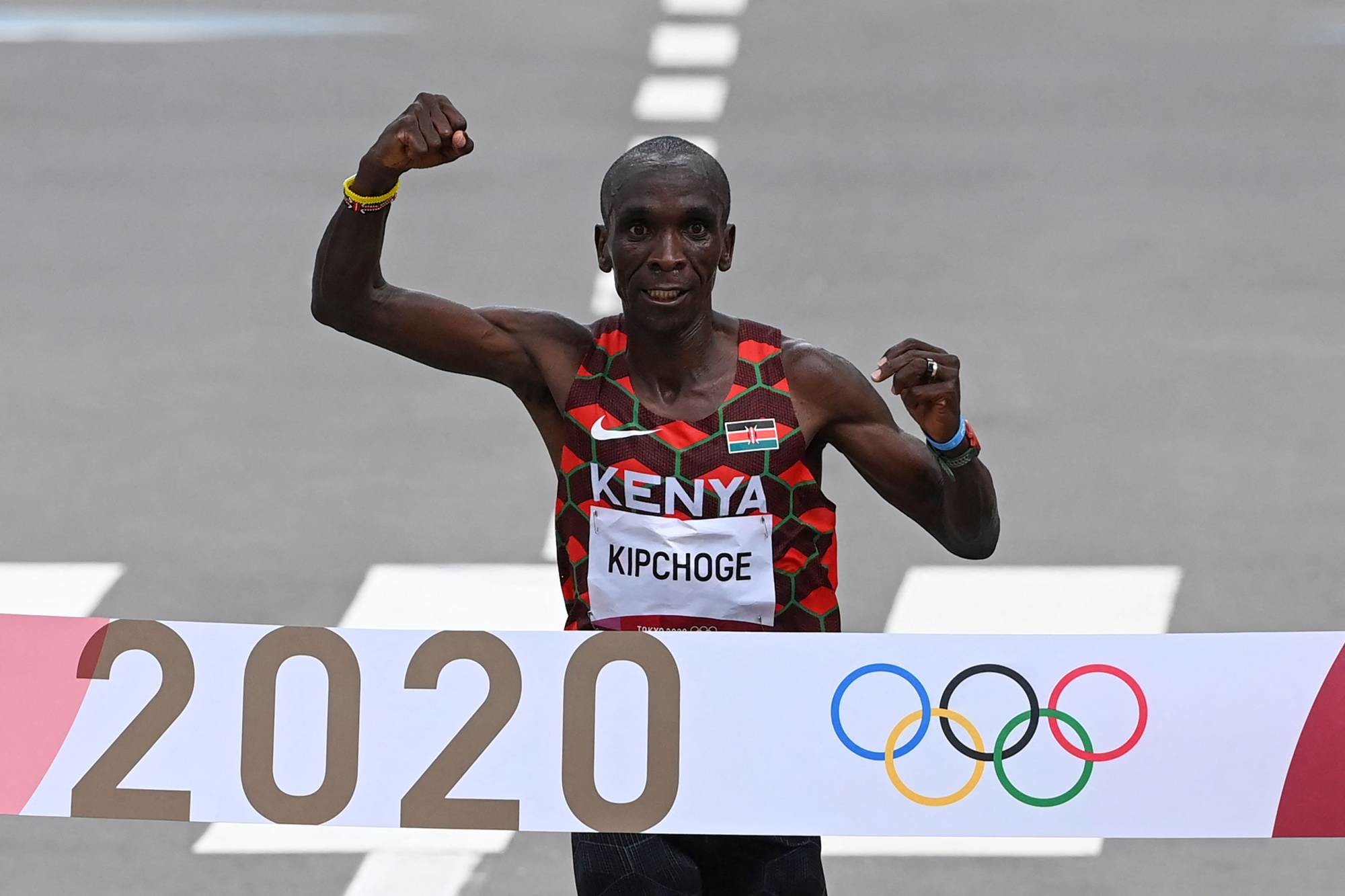
The event broadcast that earned the highest viewership was the Aug. 7 men's baseball final on NHK, where Japan defeated the U.S.A. to win the gold medal, at 37.0% 2nd was NHK's broadcast of the Aug. 8 men's marathon, where Suguru Osako placed 6th, which earned 31.4% viewership in its second half. 3rd was the Aug. 3 men's soccer semifinal match on NTV, where Japan lost to Spain in overtime, at 30.8%
(08/15/2021) ⚡AMPby Japan Running News
Water you doing?! French marathon runner Amdouni faces accusations of ‘sabotage’ as he KNOCKS OVER rivals’ water bottles
Morhad Amdouni won't be winning any awards for sportsmanship this summer after appearing to 'sabotage' his rivals during the Tokyo Olympic marathon by knocking over water bottles from a refreshment table – only to save one for himself.
Frenchman Amdouni finished in 14th position in the 26-mile race which took place in sweltering conditions in Tokyo, and the 33-year-old has prompted a fiery debate on social media after footage was captured which appears to show him deliberately knocking over several water bottles which had been provided to refresh runners.
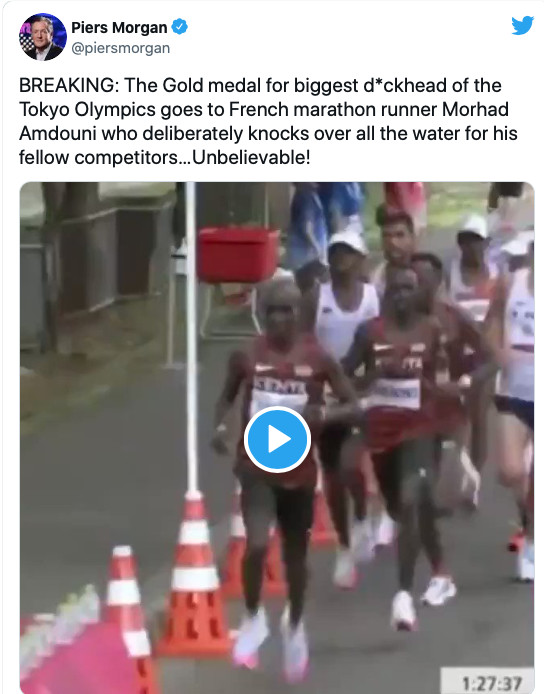
Competitors in front of Amdouni in the leading pack managed to grab a bottle with ease from a refreshment table, but when it came time for Amdouni to do the same he seemed to run his hand through the bottles, knocking each one over before he successfully picked up the final bottle in the line – leaving several runners behind him empty-handed.
The reaction has seen Amdouni deemed "selfish" by several figures on social media, with UK media firebrand Piers Morgan going so far as to declare the French athlete the "biggest d*ckhead of the Tokyo Olympics".
The Gold medal for biggest d*ckhead of the Tokyo Olympics goes to French marathon runner Morhad Amdouni, who deliberately knocks over all the water for his fellow competitors. Unbelievable!" wrote Morgan on social media in response to the footage.
Several others have also joined the online pile-on, with some writing that Amdouni should "hang his head in shame".
"I’m fairly certain he wasn’t practicing a dominoes trick – there is only one reason he did that and he should hang his head in shame. Hopefully, upon reflection, he will realize what a selfish act that was," added one critic, while another noted that he "should be disqualified [for] unsportsmanlike conduct."
A third suggested there was no way that the incident was unintentional, as Amdouni appeared to have little trouble in picking up the final bottle on the table after knocking the rest to the ground.
"No-one else had a problem grabbing one bottle," they wrote. "Have to think this was intentional."
However, as viewers also noted, there was another refreshment table just a little further up the circuit, so anyone behind Amdouni would likely have had another opportunity to rehydrate during the gruelling race.
Regardless of whether it was deliberate or not, Amdouni didn't gain any sizeable advantage due to his butter fingers, as he soon fell away from the leading pack and finished some six minutes behind the winner, Kenya's Eliud Kipchoge.
(08/15/2021) ⚡AMPNIKE TOP BRAND MEDAL TABLE, BUT PUMA ON THE RISE
The swoosh has been everywhere on the track and in the field in Tokyo. Nike was the spike of choice for 11 out of the 12 middle distance medallists, on the chest of the top-three in the men’s 200m final, while also sponsoring the stand-out sprint star in Jamaica’s Elaine Thompson-Herah, who took down Flo-Jo’s 100m Olympic record with their latest shoe technology.
It will come as no surprise that Nike was again the most dominant brand in Olympic athletics. The global sports giant was on the vest of 53 medallists and was on the feet of 73—and remains in the top spot that it had in Rio in our brands medal table.

Nike’s totals, however, have declined. Its shoe share is down 16 medals (89 to 73)—while Puma has made a surge (4 to 16, or a 300% increase). Nike it seems decided not to extend or renew contracts for the delayed Olympics with Puma sweeping up some of that talent. Puma’s longer-term deals also came to fruition, most notably with Canada’s Andre De Grasse, who inked a multiyear deal back in 2015 reportedly worth as much as $30 million.
This may be a shift in strategy from Nike that has had an impact beyond track and field, a sport in which it has deep roots. In football, stars like Sergio Ramos and Thiago Alcantara took to blacking out their boots earlier this year. The suggestion then was that Nike was focusing on a smaller number of elite athletes that could be at the core of their campaigns.
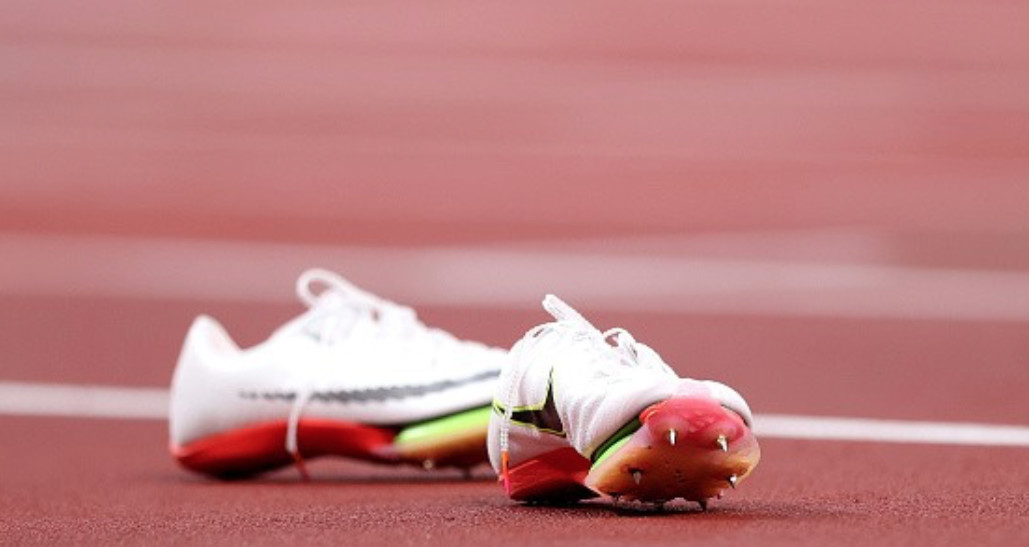
Just because an athlete is wearing a brand in track and field doesn’t mean that they are actually sponsored at all, or in any meaningful way. Some could be “kit drops”, others might have bought a product themselves. New Zealand’s Tom Walsh wore blacked out Nikes for his shot put final, but has had “SPACE FOR RENT” emblazoned on his vest in the Diamond League this season. Others may be ensuring that they don’t miss out on carbon-plated “super spikes”. Britain’s Josh Kerr—Brooks sponsored—wore “whited-out” Nikes for his bronze-medal-winning performance.
There was also room for two new brands; Allyson Felix’s Saysh and fellow American Joe Kovacs wore Velaasa, a shoe brand founded by Lynden Reder that ran a successful Kickstarter campaign back in 2018. New Balance stepped up a notch with their sponsorship of Sydney McLaughlin, Gabby Thomas and Femke Bol.
Nike topped the vests chart through its sponsorship deals with federations, but this was down (71 to 53) and again Puma had the most dramatic boost (15 to 22). This included a shoe and vest double with Norwegian Karsten Warholm’s 400m hurdles world record. Asics, a Japanese company and an official Olympic gold partner, also saw a boost (8 to 13).
Puma may have had one more medal, but decided to cancel its $2.7m sponsorship of the Nigerian team. (Apparently, this delighted Nigerian officials). For its only medal in the women’s long jump, Ese Brume wore the lesser-known sporting brand AFA on her chest. Of these smaller brands, AF’s position is entirely down to Poland’s performance, while Belgian sponsor Vermarc can once more thank Nafissatou Thiam for making the medal table.
Charts show individual track and field events, no relays or road races. One athlete wore different brands across the heptathlon, so her final shoe brand in the 800m was counted here. For the vest count, it is the competing vest and not the podium tracksuit where the brands may differ. Javelin Olympic champion, India’s Neeraj Chopra had no discernible logo on his vest. It is categorised here as “other”.
(08/15/2021) ⚡AMPCameron Burrell’s cause of death was suicide: This is what his family is saying in wake of loss
The cause of death of the former University of Houston sprinter, NCAA national champion and son of gold medal sprinter Leroy Burrell, was released in a report from the Harris County Institute of Forensic Sciences.
Friday afternoon, the following statement was released by the University of Houston from UH track coach Leroy Burrell and his family:

“On Monday evening, our family’s hearts were broken with the passing of our son, Cameron, who took his own life.
While much of the world knows Cameron from his accomplishments in competition, he was so much more as a son, a father, a brother and as a man. We love him, and we will miss him forever.
We may never know why Cameron made such a decision. We encourage anyone who may be struggling in their lives to reach out for help. You are not alone, and you are surrounded by more people who love and care for you than you may think in a dark moment.
If you or someone you know is struggling, please call the National Suicide Prevention Lifeline at 1-800-273-TALK
As our family navigates through this emotional time we will have no further comment and request privacy.”
Statement from Leroy Burrell and family
KPRC 2 does not report on suicides in most instances; however, given the wide coverage of Burrell’s death earlier this week and public appeals made by his father as well as his aunt on social media, we are sharing their messages.
(08/15/2021) ⚡AMPOlympic Champion Eliud Kipchoge will miss 2021 London Marathon
Olympic champion Eliud Kipchoge's name was conspicuously missing from the list of elite runners who will be competing at this year's London Marathon on October 3.
Organisers Thursday released a stellar list that has women's world record holder Brigid Kosgei and men's champion Shura Kitata of Ethiopia.
Kipchoge, who retained his Olympic marathon crown at the recently concluded Tokyo Games, finished eighth at the 2020 London Marathon, timing 2:06:49, more than a minute behind winner Shura Kitata.
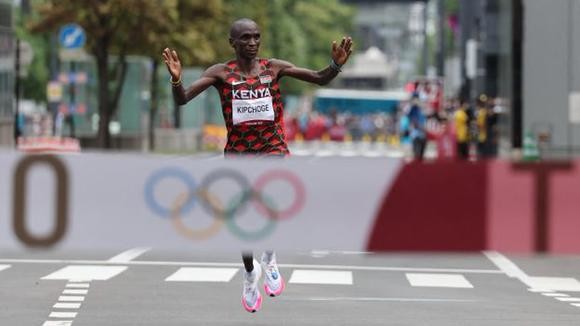
He was expected to return to London to try and reclaim the title he won in 2019. Efforts to get a comment from the world record holder provide futile as his phone went unanswered.
Speaking to journalists on Wednesday after arriving from Tokyo, the 36-year-old remained non-committal on whether he would hang his boots after the triumph in Japan.
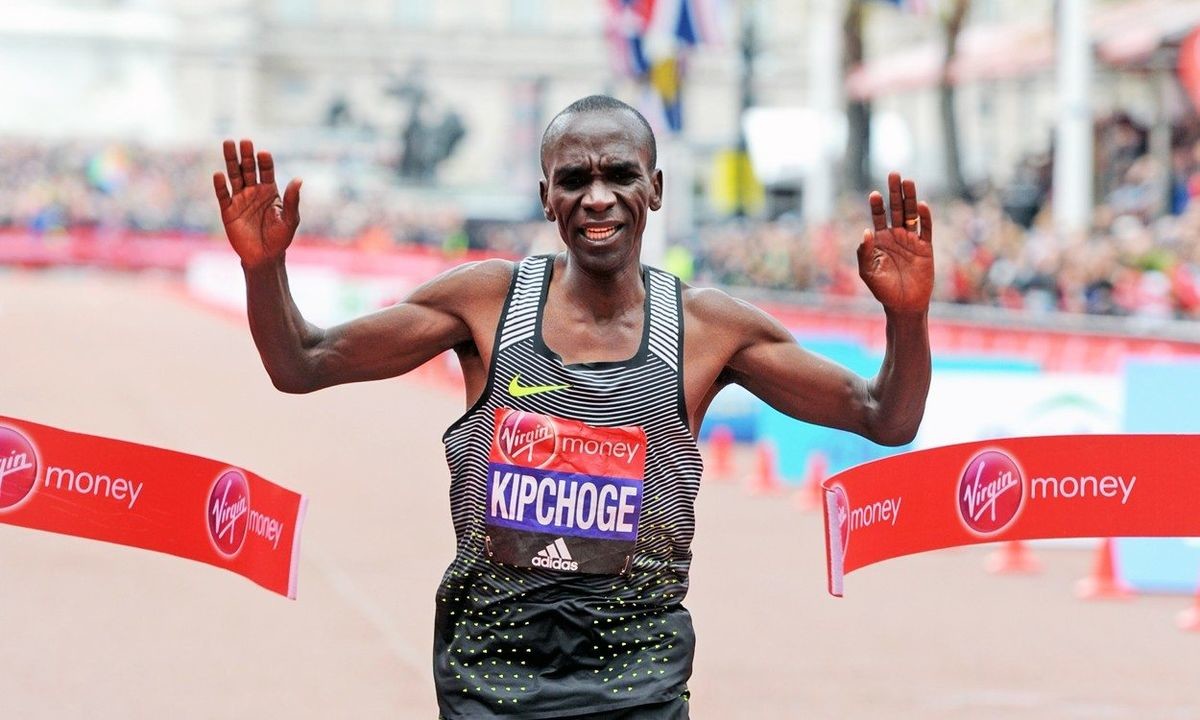
"I think it is good not to ask about retirement... When your wife delivered the first child, did you plan for the next one immediately?" Posed Kipchoge to a journalist, who responded in negation.
Kosgei, the Olympic silver medalist, will be attempting to win her third successive London Marathon after victories in 2019 and 2020.
She will be competing against New York City Marathon champion Joyciline Jepkosgei and six other women who have run under two hours and 20 minutes.
"It is a great feeling to be coming back as London is one of my favourite marathons. Last year's win was very special, particularly given what the whole world was going through. It was fantastic just to have the London Marathon organised and even more so to be the winner. I hope to arrive again in very good shape
Jepkosgei set a new personal best of 2:18:40 last December at the Valencia Marathon, where she finished second to Olympic champion Peres Chepchirchir.
Also in the elite women's field are Ethiopians Roza Dereje, whose PB of 2:18:30 makes her the tenth-fastest female marathoner of all time, and Birhane Dibaba (PB 2:18:35), who won the Tokyo Marathon in 2018 and 2015, and finished second in the same race on three other occasions (2020, 2017 and 2014).
The other women to have run inside 2:20 are Kenya's Valary Jemeli (2:19:10), Ethiopia's Zeineba Yimer (2:19:28) and Tigist Girma (2:19:50).
Also returning is Australia's Sinead Diver, who has had two top 10 London Marathon finishes in the past two years, and was 10th at the Tokyo Olympics.
In the men's race, Shura Kitata- who pulled out of the Olympic Games marathon last weekend after suffering in the hot and humid conditions in Sapporo- will line up with the other men as he seeks to defend his title.
Kitata bagged victory ahead of Kenya's Vincent Kipchumba and both will be meeting again in the contested race in October with Sisay Lemma also in the race.
Also on the starting line will be Kenya's Evans Chebet, the current Valencia Marathon champion and fastest man in the world last year (2:03:00), and the two-time Tokyo Marathon champion Birhanu Legese who is the third-fastest marathoner of all time (2:02:48).
Ethiopians Mosinet Geremew (2:02:55) and Mule Wasihun (2:03:16), who both finished on the podium at the 2019 race, also return.
Titus Ekiru, who clocked the fastest time during the Milano Marathon of 2:02:57, will make his debut.
The 2021 London Marathon returns to its traditional and iconic course from Blackheath to The Mall after last year's elite-only race on a multiple closed-loop circuit around St James's Park.
Up to 50,000 runners are expected in the mass race and another 50,000 around the world will take on the virtual event, completing the 26.2 miles on the route of their choice any time between 00:00 and 23:59:59 BST October 3.
(08/14/2021) ⚡AMPby Bernard Rotich
TCS London Marathon
The London Marathon was first run on March 29, 1981 and has been held in the spring of every year since 2010. It is sponsored by Virgin Money and was founded by the former Olympic champion and journalist Chris Brasher and Welsh athlete John Disley. It is organized by Hugh Brasher (son of Chris) as Race Director and Nick Bitel...
more...Eugene will play host rematches betwen olympic medalists at the Prefontaine Classic
Dozens of medal winners from the recent Tokyo Olympic Games will be back in action at the Wanda Diamond League meeting in Eugene when Hayward Field hosts the Prefontaine Classic on August 21.
Based on the announcements made so far by the meeting organizers, five events will feature a full set of Olympic medalists from Tokyo.
Double Olympic champion Sifan Hassan headlines the women’s 5000m field and she’ll take on two-time world champion Hellen Obiri and world indoor 1500m record-holder Gudaf Tsegay, the silver and bronze medalists in Tokyo over 5000m.
All three medalists from the men’s 5000m will also be in action as Uganda’s Joshua Cheptegei, Canada’s Moh Ahmed and USA’s Paul Chelimo clash over two miles.
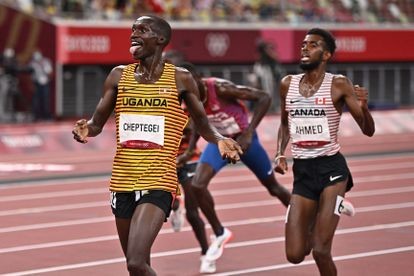
Teenage stars Athing Mu and Keely Hodgkinson, the top two finishers in the 800m in Tokyo, will be back in action over two laps, along with world and Olympic bronze medallist Raevyn Rogers, world champion Halimah Nakaayi, Britain’s Jemma Reekie, Jamaica’s Natoya Goule and USA’s Ajee Wilson and Kate Grace.
World record-holder and two-time Olympic champion Ryan Crouser will look to maintain his winning streak in the shot put when he takes on world champion Joe Kovacs and 2017 world champion Tom Walsh. Brazil’s Darlan Romani and US duo Darrell Hill and Payton Otterdahl are also in the line-up.
Jamaican sprint stars Elaine Thompson-Herah, Shelly-Ann Fraser-Pryce and Shericka Jackson – who filled the 100m podium in Tokyo – will face USA’s Sha’Carri Richardson and Marie-Josee Ta Lou of the Ivory Coast.
The men’s 100m, meanwhile, features Olympic silver and bronze medalists Andre De Grasse and Fred kerley, along with world indoor bronze medallist Ronnie Baker, 400m specialist Michael Norman and African record-holder Akani Simbine.
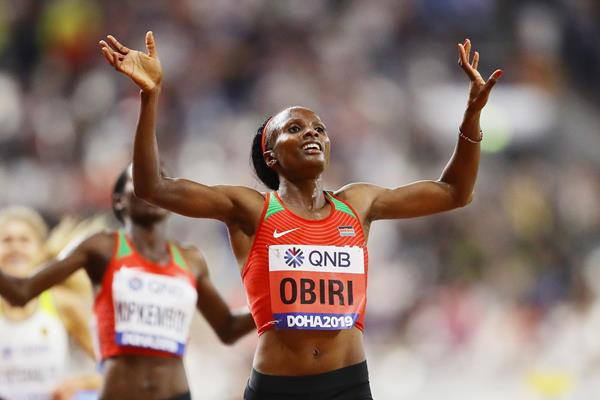
Two-time Olympic champion Faith Kipyegon will once again line up against Olympic silver medallist Laura Muir and Canadian record-holder Gabriela DeBues-Stafford, while world champion Timothy Cheruiyot will clash with Olympic champion Jakob Ingebrigtsen in the men’s Bowerman mile.
In the women’s steeplechase, world champion Beatrice Chepkoech takes on world leader Norah Jeruto Tanui, Olympic silver medalist Courtney Frerichs and 2017 world champion Emma Coburn.
Other global stars confirmed so far include world 400m hurdles champion Dalilah Muhammad, Olympic triple jump champion Pedro Pablo Pichardo and world indoor triple jump record-holder Hugues Fabrice Zango.
(08/14/2021) ⚡AMPby World Athletics
Prefontaine Classic
The Pre Classic, part of the Diamond League series of international meets featuring Olympic-level athletes, is scheduled to be held at the new Hayward Field in Eugene. The Prefontaine Classicis the longest-running outdoor invitational track & field meet in America and is part of the elite Wanda Diamond League of meets held worldwide annually. The Pre Classic’s results score has...
more...Beat the heat of the afternoon when air quality is at its worst-Lousy air quality days, get that jog or walk done earlier in the day.
You've probably heard it time and time again during this run of exceptionally bad air quality in Denver and along the Front Range – get that exercise and/or outdoor activity done during the early morning hours to escape bad air quality.
But, you might not know why air quality tends to be best during the early morning – and worst during the afternoon.

Let's start with the basics:
When Denver has poor air quality, it's usually because of ground ozone – though it's often mixed with or directly from wildfire smoke.
Ground ozone forms from a combination of car exhaust, other forms of pollution and warm temperatures.
Because car traffic peaks in the morning and evening and temperatures usually maximize in the afternoon, that's when conditions are typically at their highest for creating ground ozone.
That ground ozone, however, also dissipates fairly quickly after dark. Because sunlight is a critical ingredient to ozone's formation, ground ozone dissipates quickly after dark. Ground ozone levels at night are typically very low, even if they're really high during the day.
By the way, you might also notice us saying "ground ozone" as opposed to just "ozone." That's because ozone itself can be a very good thing – after all, it's what comprises the ozone layer about 20 miles above the surface. The ozone layer shields us from the majority of the sun's ultraviolet radiation.
Ground ozone, on the other hand, creates smog and pollution at the surface.
So long story short – when you know that lousy air quality might be in the forecast, get that jog, walk or outdoor activity done during the early morning hours or at night after the sun goes down.
These simple routine changes will spare you the worst air quality-related impacts!
(08/14/2021) ⚡AMPMan drifts ashore while trying to run from Florida to Bermuda inside 'bubble'
An ultramarathon runner who is trying to trek on foot from Florida to Bermuda in a strange floating device drifted ashore Saturday along the coast of the Sunshine State, a report said.
Reza Baluchi — and his so-called bubble, which allows him to navigate on the top of the water — ventured ashore in Flagler County, Fox 35 reported.

Baluchi is attempting the daring sea voyage to raise money for charity and to encourage people to follow their dreams.
“I will show people anything you want to do, do it,” he told the news outlet. “Don’t listen to anyone. Chase your dreams.”
Baluchi said his goal is to raise money for homeless people, the Coast Guard and police and fire departments.
The endurance runner has tried similar aquatic travels in the past.

In 2014, he was rescued by the Coast Guard while trying to reach Bermuda in a homemade floating “Hydro Pod.” He had been suffering from fatigue at the time.
“I’ll never give up my dream,” he told Fox 35. “They stop me four or five times but I never give up.”
(08/14/2021) ⚡AMPScott Jurek Halts Appalachian Trail FKT Attempt-Injury forces ultra legend Scott Jurek off the trail
After just one week on the trail, Scott Jurek was forced to terminate his Appalachian Trail Fastest Known Time attempt.
About four days into his run, he developed a quad issue similar to the one that plagued him in 2015. Unlike his injury six years ago, he was unable to push through or walk it off.

After months of silence on social media, the trail runner from Boulder, Colorado, unveiled his summer plans for a record-setting run on the Appalachian Trail this week. As per AT tradition, he adopted a trail name — “Webwalker” — which was given to him by thru-hikers during his 2015 speed attempt.
As of late Tuesday, Jurek, 47, was already seven days and several hundred miles into a southbound trek on the trail, not far from the Maine-New Hampshire border. His goal was to complete the 2,193-mile trail from Mount Katahdin, Maine to Springer Mountain, Georgia, in 40 days or fewer.
That would have not only lowered his only personal record on the AT by six days, but it would also have surpassed Utah ultrarunner Karl Meltzer’s current supported Fastest Known Time of 45 days, 22 hours and 38 minutes set in 2016. Jurek set the northbound supported FKT (46 hours, 6 hours, 7 minutes) six years ago, but Belgian ultrarunner Karel Sabbe lowered it by five days (41 days, 7 hours, 39 minutes) with an amazing effort in 2018.
“I haven’t forgotten the suffering, but sometimes you have to go back to the hard places and do the hard things,” Jurek said via social media this week. “I still have so much to learn, and I still have more to give.”
(08/14/2021) ⚡AMPby Outside Online
The Four Races That Still Need to Happen in 2021
The Tokyo Olympics may be over, but the track & field season most definitely is not. We’ve still got five Diamond Leagues to go, including the final in Zurich on September 8-9. And while Tokyo produced a number of amazing races, there were a few that we didn’t get to see. Here are the four races that still need to happen in 2021. Diamond League meet directors, pay attention (and have your checkbook handy…these races won’t be cheap to organize).
Women’s 100 meters: Elaine Thompson-Herah vs. Shelly-Ann Fraser-Pryce vs. Sha’Carri Richardson
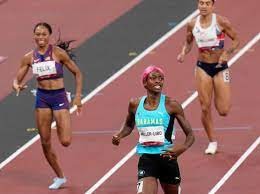
Of the six fastest women in history, three of them have run their personal bests this year: Thompson-Herah (10.61 in Tokyo), Fraser-Pryce (10.63 in Kingston), and Richardson (10.72 in Miramar). But we didn’t get to see the three of them in the same race at the Olympics because of Richardson’s positive test for marijuana at the US Olympic Trials.
There may be a bit of a rivalry brewing as well. Remember, after Fraser-Pryce ran 10.63 back in June, Richardson essentially took credit for pushing Fraser-Pryce to a pb (even though Richardson was not even in the race).
And when the Jamaicans were asked about Richardson following the Olympic final, they did not want to talk about her (though to be fair…they had just won Olympic gold and silver). But any mention of even the word marijuana quickly resulted in realizing they didn’t want to talk about Sha’Carri at all.
Chances that it happens: It’s already happening! The Pre Classic has announced its women’s 100m field and all three are entered.
Men’s 400: Karsten Warholm vs. Rai Benjamin vs. Steven Gardiner
Karsten Warholm’s mesmerizing 45.94 world record in the 400 hurdles generated a number of questions. One of the natural ones: how fast could he run without the hurdles? Warholm’s personal best in the flat 400 is 44.87, but that dates back to 2017, when his hurdles pb was 48.22. He’s over two seconds faster now in the hurdles, so it’s not unreasonable to think he’s in 43-second shape right now. Benjamin’s pb is 44.31 from 2019.
So let’s throw Warholm and Benjamin in against the Bahamas’ Steven Gardiner, who just ran 43.85 to win the flat 400 in Tokyo, and see how they really stack up.
Chances that it happens: 25%. Warholm has already committed to run the flat 400 in Lausanne on August 26. That’s a great start, but getting Benjamin and Gardiner as well could prove tricky.
Women’s 400: The “Dream Team” vs. Shaunae Miller-Uibo
It was a running joke for most of the 2021 season: America’s best 400-meter runners don’t even run the 400. I mean, just look at the “Dream Team” the US trotted out for its dominant victory in the 4×400 relay: Sydney McLaughlin, Allyson Felix, Dalilah Muhammad, Athing Mu. Only one of those women ran the open 400 in Tokyo.
As incredible as Felix was at the Olympics, taking bronze in the 400 in 49.46, she only had the third-fastest split on that relay (49.38), with Muhammad going 48.94 and Mu a ridiculous 48.32. What could be better than seeing all four Dream Teamers race each other head to head?
Well, how about throwing the two-time Olympic 400 champ into the mix in Shaunae Miller-Uibo? Assuming that field doesn’t collapse from the weight of its collective gold medals (all five of the women have won individual Olympic gold; their combined total is 15 career Olympic golds including relays), the race would be more stacked than the Olympic final we just witnessed.
Chances that it happens: 10%. This one seems like a pipe dream. With the Americans as the major draw, the Pre Classic would be the natural venue for this, but there are two problems. First, there is no women’s 400 at Pre this year (though it’s not too late to add one!). And second, the five athletes above are represented by four different shoe brands. It’s not as if Nike could just magically compel them all to run Pre.
Men’s 5,000: Jakob Ingebrigtsen vs. Joshua Cheptegei vs. Selemon Barega
We already saw Ingebrigtsen vs. Cheptegei in Florence in June, and it was no contest, with Ingebrigtsen pulling away to a world-leading 12:48 as Cheptegei faded late. But Cheptegei revealed in Tokyo that he has been battling a heel injury this year, and while he’s not completely over it, it’s definitely more manageable now (as evidenced by his gold and silver in Tokyo) than it was two months ago in Florence.
Then there’s Barega, who used a sick close (2:24 last 1k, 53 last lap) to win 10k gold but did not run the 5k in Tokyo. Let’s settle the title of best distance runner in the world and pit the Olympic 1500, 5k, and 10k champs together in a 5k on the circuit.
Chances that it happens: 30%. I could see Cheptegei and Barega racing each other in a 5,000 at the Diamond League final (or even the 2-mile at Pre). Getting Ingebrigtsen to join them could be more difficult, however. He’s running the Bowerman Mile at Pre and may opt for the 1500 at the DL final.
(08/14/2021) ⚡AMPby Let’s Run
Molly Seidel just became the new queen of Strava
In case you missed it, on Sunday, U.S. runner Molly Seidel won the bronze medal in the women’s marathon at the Tokyo Olympics. She ran the race of her life, hanging with the Kenyan leaders, Peres Jepchirchir and Brigid Kosgei, until around 37.5 km, and fended off her competition over the last stretch to secure the bronze in a time of 2:27.51. The bronze medal won’t be the only achievement she will be coming home with, as she has just been crowned ‘Strava legend’ for having the most kudos for a women’s activity ever.
n case you are unfamiliar with kudos on Strava, they are virtual thumbs up, and comparable to “likes” on Facebook or retweets on Twitter. Currently her “full send” activity sits at 32,500 kudos and is still rising. Seidel sits on the throne beside cyclist and multiple Tour de France champion Chris Froome, who received 40,000-plus kudos for a ride in Italy.

Getting to Tokyo was an achievement of its own for Seidel, as she missed the U.S. Olympic Trials in 2016 to get eating disorder treatment. Seidel qualified for the Olympics Games when she placed second at the U.S. Olympic Marathon Trials in 2020 behind fellow American Aliphine Tuliamuk.
Canadian marathoner’s Malindi Elmore and Natasha Wodak who both respectively finished within the top 15 in Tokyo were apparently apart of Seidel’s morning walking club around the athlete’s village. Seidel illustrated the importance of these two tremendous women on her Instagram and Strava.
In case you are unfamiliar with kudos on Strava, they are virtual thumbs up, and comparable to “likes” on Facebook or retweets on Twitter. Currently her “full send” activity sits at 32,500 kudos and is still rising. Seidel sits on the throne beside cyclist and multiple Tour de France champion Chris Froome, who received 40,000-plus kudos for a ride in Italy.
Getting to Tokyo was an achievement of its own for Seidel, as she missed the U.S. Olympic Trials in 2016 to get eating disorder treatment. Seidel qualified for the Olympics Games when she placed second at the U.S. Olympic Marathon Trials in 2020 behind fellow American Aliphine Tuliamuk.
Canadian marathoner’s Malindi Elmore and Natasha Wodak who both respectively finished within the top 15 in Tokyo were apparently apart of Seidel’s morning walking club around the athlete’s village. Seidel illustrated the importance of these two tremendous women on her Instagram and Strava accounts.
(08/14/2021) ⚡AMPby Running Magazine
Oklahoma City Memorial Marathon officials encouraging runners to get COVID-19 vaccine
In October, the Oklahoma City Memorial Marathon is returning in-person for the first time in two-and-a-half years.
Organizers are taking a step in the fight against the pandemic that caused the delay – launching a public service announcement campaign, encouraging runners to get vaccinated against COVID-19, as well as taking social distancing precautions.
“This is not a political issue, this is a public health issue and we’re just encouraging runners to get it,” said Kari Watkins, Executive Director at the Oklahoma City National Memorial and Museum. “We’re not requiring it, we’re just encouraging.”
As the COVID-19 pandemic has evolved, so have the talks between Watkins and OU’s Chief COVID-19 Officer Dr. Dale Bratzler.
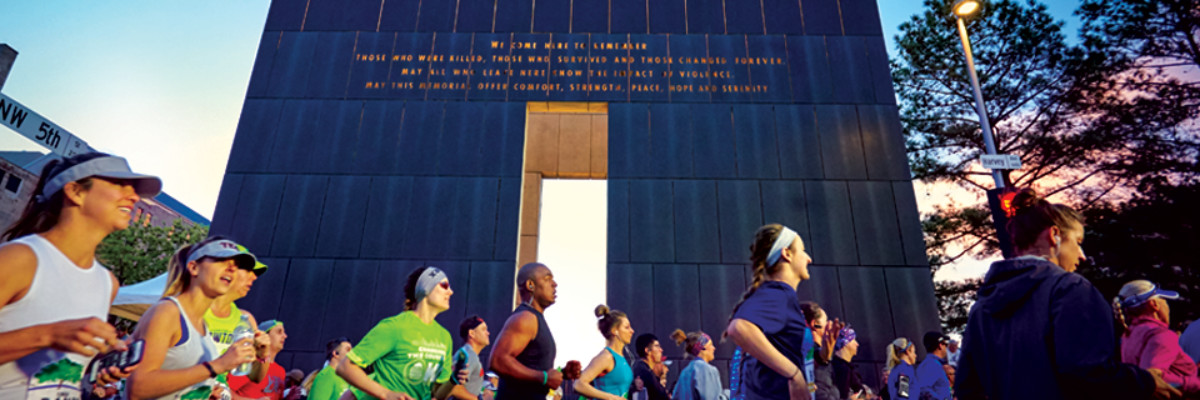
“If we were having it today, I’d be a lot more concerned,” Bratzler told News 4. “A lot of the epidemiologic models show we will see substantial peak, particularly with the opening of schools but we could start to fall off fairly quickly after that.”
Bratzler says if runners are not yet vaccinated, he hopes they consider it – because running fast doesn’t guarantee COVID-19 won’t catch up to you.
“The very first person I ever took care of with COVID-19 was a distance runner,” said Bratzler. “The very first person who presented with shortness of breath, severe cough and long-haul symptoms and took him literally months to get back to pre-COVID aerobic capacity.”
Watkins says as of right now, registration looks to be at about 50% of their normal turnout.
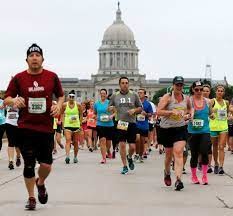
They’re working on plans for safety – including spreading out runners at the start line and starting the race in waves.
“We’ll start making those calls 30 days out, maybe around Labor Day, saying here’s what we expect from runners,” she said.
As they work on precautions on their end, officials hope runners will take their own as well.
“For us, the marathon is an important celebration of life and coming together,” said Watkins. “When you look at the opportunities of do you require a shot or do you not require a shot, the best thing we could do is encourage vaccinations and give people a reason to go get vaccinated.”
Bratzler says as of right now, he’d encourage runners to wear a mask at the start line and take it off as they spread out.
He also says they will likely highly promote, if not mandate, masks at the indoor registration event ahead of the race.
(08/13/2021) ⚡AMPby Lauren Daniels
Oklahoma City Memorial Marathon
The Oklahoma City Memorial Marathon is about more than running, it is about celebrating life. This is the spirit in which the Oklahoma City Memorial Marathon was conceptualized by two Oklahoma businessmen who, while on a morning run, created the outline for this inspiring event. A group of volunteer chairmen and some Memorial staff, lead a volunteer corps to carry...
more...The Belfast Marathon will be limited to 4,800 runners this year and just 200 Athletics Ireland runners will be allowed to run
A select number of Irish runners will get to compete at a 2021 National Marathon Championships in October, only it will mean travelling to the North as the event will be staged as part of Belfast City Marathon already set for Sunday, October 3rd.
Athletics Ireland announced on Thursday that only 100 male and 100 female entries would be made available, and interest in being sought “from athletes who have acquired suitable times over the last three years”. The closing date is Thursday week, August 19th.

Unlike the 2021 Dublin Marathon, cancelled for the second year running due to Covid-19, organizers of the Belfast event have got the go ahead. The total entry number is capped at 4,800.
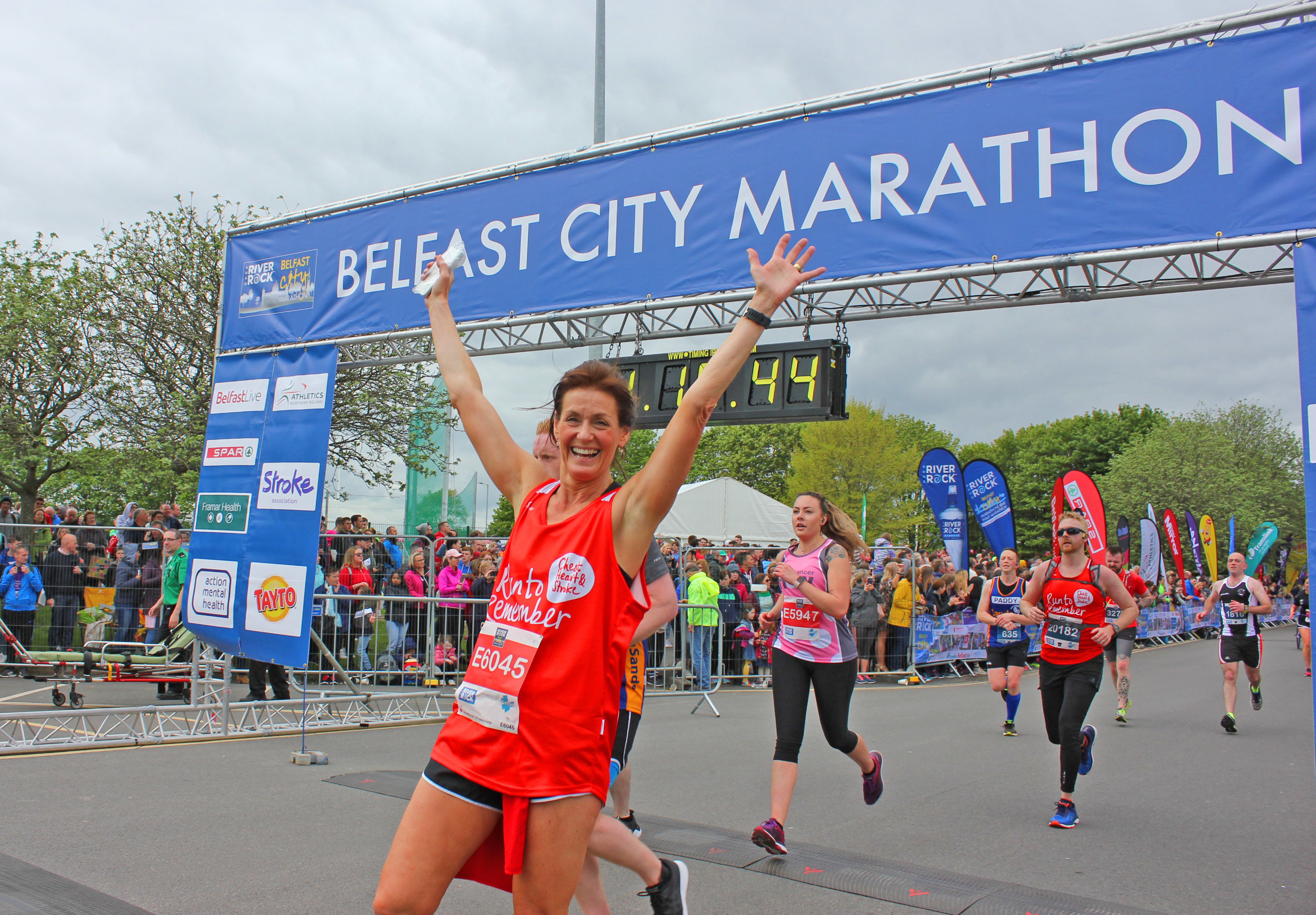
Runners can also be included in the Irish National Marathon if they secure a regular race entry, which will cost them £63. Closing date for that is Friday, August 27th.
Last year’s cancellation of the Dublin Marathon meant there was no National Marathon for 2020, the event being staged as part of the Dublin Marathon for the last number of years.
Other National Road events did proceed this year, Tuam Athletic club organizing the National 20km walk championships in June, one week after the numbers were allowed post Covid restrictions, and 150 senior and junior athletes competing, including Tokyo bound Olympians Brendan Boyce and David Kenny.
The Belfast Marathon route takes in the four areas of Belfast; North, South, East and West, starting at Stormont Estate at 9am and finishing in Ormeau Park.
Given the date, reigning Irish men’s marathon champion Stephen Scullion from 2019 won’t be running as he is set to run the Boston Marathon, postponed from its normal date in April to October 11th. Reigning women’s champion Aoife Cooke from Cork may be in a position to defend her title, however.
In early July, for the second year running, organizers of the Dublin Marathon were forced to cancel the event outright given the still “many unknowns” around outdoor mass participation events for the rest of the year.
While always unlikely to be the full 25,000 sell-out entry of runners originally signed up in advance of the 2020 edition, postponed in May of last year due to Covid-19, there had been some hope and expectation a more limited entry will get the go ahead.
(08/13/2021) ⚡AMPby Ian O'Riordan
Belfast City Marathon
The event has grown with the inclusion of new sponsors which now include Deep River Rock, Belfast City Council, U105, ASICS, Daily Mirror, Translink, Athletics Northern Ireland, Linwoods, Belfast Live, Centra, White's Oats, Podium 4 Sport, U105 and Tayto. The route will remain the same - starting at the City Hall and finishing at Ormeau Park. The race starts at...
more...Kenenisa Bekele is set to run the Berlin Marathon
On September 26, all eyes will be on the BMW BERLIN-MARATHON. After a bitter period of deprivation, a large field of runners will be allowed to celebrate on the streets of the German capital. Due to the current pandemic situation, this year there is a reduction in participants and a detailed hygiene concept, which makes it possible for an event of this magnitude to be realized at all.
Not only are the recreational athletes appreciative of the endless efforts by the organiser SCC EVENTS, which are making it possible to finally compete together again at the BMW BERLIN-MARATHON. A look at the list of favourites shows quite clearly how much the world’s elite is also waiting for top notch races. None other than running legend Kenenisa Bekele will aim for victory on September 26.
At the 2019 BMW BERLIN-MARATHON, he clearly demonstrated with his time of 2:01:41 hours that he is always a force to be reckoned with. Whether he can shine again this year with one of the fastest marathon times ever remains to be seen. Anything is possible for the Ethiopian jack-of-all-trades. The #berlinlegend Bekele appears to do particularly well in the Berlin air. This is underlined not only by his victories at the BMW BERLIN-MARATHON in 2016 and 2019, but also by his captivating performances at the 2009 World Athletics Championships in the capital city on the Spree River.
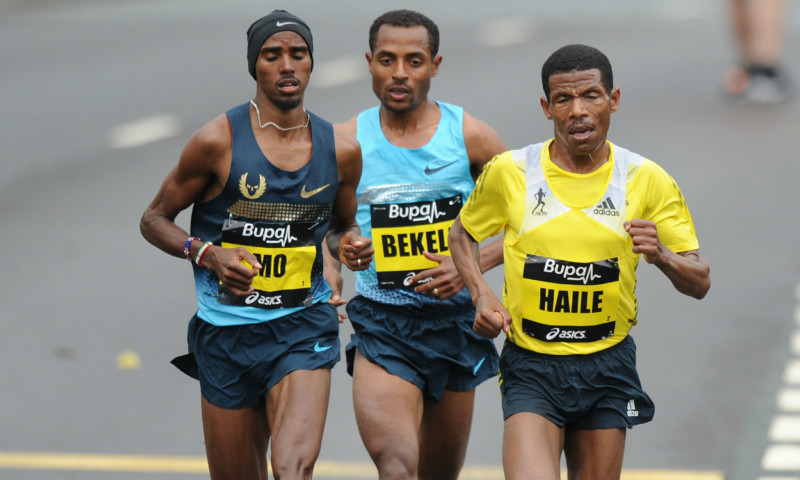
BMW Berlin Marathon
The story of the BERLIN-MARATHON is a story of the development of road running. When the first BERLIN-MARATHON was started on 13th October 1974 on a minor road next to the stadium of the organisers‘ club SC Charlottenburg Berlin 286 athletes had entered. The first winners were runners from Berlin: Günter Hallas (2:44:53), who still runs the BERLIN-MARATHON today, and...
more...Tokyo Olympics 100m champion Lamont Marcell Jacobs won't run again until 2022
Olympic 100m champion Lamont Marcell Jacobs has said he will not compete again until next year.
In response to a question on social media about when he would next race, the 26-year-old responded with "2022".
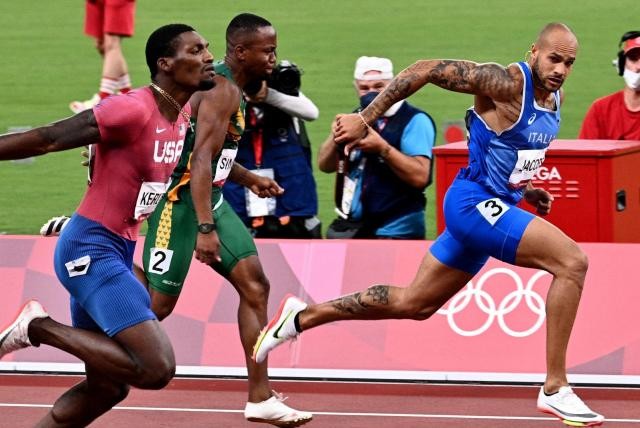
Jacobs followed up his shock 100m victory in Tokyo with another gold as part of Italy's 4x100m relay team.
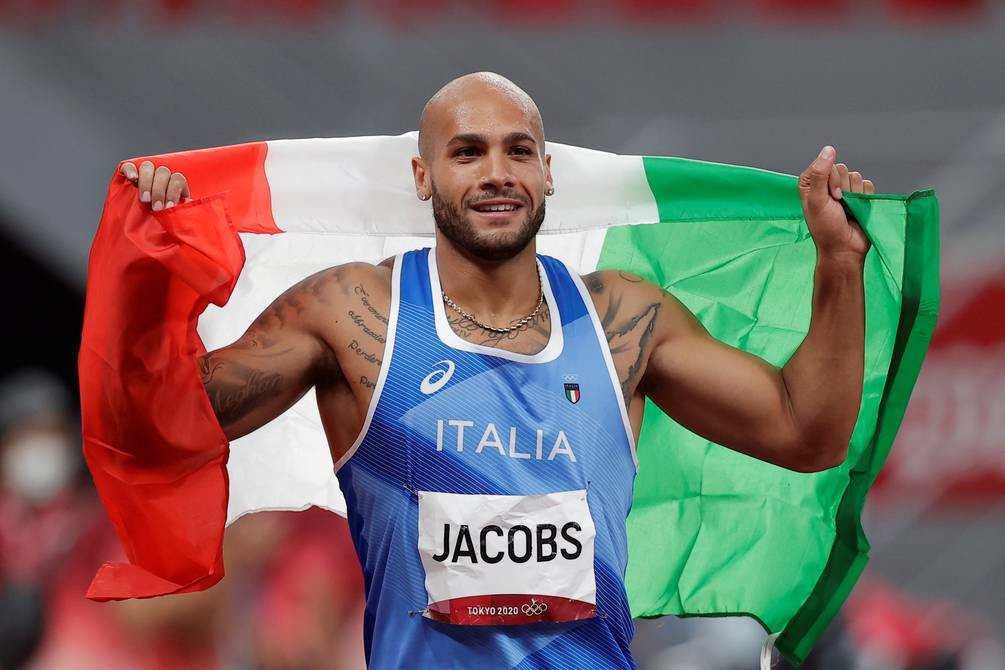
His manager Marcello Magnani said injury was not a factor in the decision to take a break, but the time off is a preventative measure.
"It is simply that Marcell has given so much this year, all he had, so to insist [on competing] would only mean risking an injury," Magnani added.
European indoor 60m champion Jacobs, who only switched away from long jump in 2018, produced one of the biggest surprises in Tokyo when he won 100m gold in in 9.80 seconds.
It was only in May that he broke the 10-second barrier for the first time.
He was next scheduled to run on August 21 at the Eugene Diamond League meet in the United States.
After that, Jacobs was to appear on September 3 in Brussels and then anticipated to compete on September 9 in Zurich for the season-ending Diamond League Finals.
(08/13/2021) ⚡AMPby BBC News
Tokyo 2020 Olympic Games
Fifty-six years after having organized the Olympic Games, the Japanese capital will be hosting a Summer edition for the second time, originally scheduled from July 24 to August 9, 2020, the games were postponed due to coronavirus outbreak, the postponed Tokyo Olympics will be held from July 23 to August 8 in 2021, according to the International Olympic Committee decision. ...
more...B.A.A. Announces Participants In John Hancock Professional Athlete Team For Boston Marathon
The Boston Athletic Association announced on Wednesday that more than 140 athletes will participate as part of the John Hancock Professional Athlete Team in the 125th Boston Marathon on Oct. 11.
Included in that field are eight of the top 12 finishers in the Olympic trials marathon, including Abdi Abdirahman, Scott Fauble, Matt McDonald, and Jonas Hampton. Elsewhere in the men’s open field, Kenya’s Leonard Barsoton and Ethiopia’s Jemal Yimer will both make their long awaited marathon debuts in Boston. Dejene Debela and Asefa Mengstu will be making their Boston debuts.
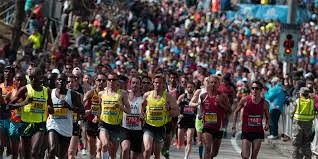
For the women, five of the top seven finishers from the 2019 Boston Marathon will return: Edna Kiplagat (Kenya), Jordan Hasay (USA), Des Linden (USA), Caroline Rotich (Kenya), and Mary Ngugi (Kenya). Two-time Olympian and Providence resident Molly Huddle will also be running.
The women’s wheelchair race will include Team USA wheelchair Paralympians Susannah Scaroni and Jenna Fesemyer, along with course record holder Manuela Schär and five-time champion Tatyana McFadden. For the men’s wheelchair division, Aaron Pike will compete in the field that includes four champions – Daniel Romanchuk, Marcel Hug, Ernst van Dyk, and Josh Cassidy – with a combined 16 Boston Marathon titles.
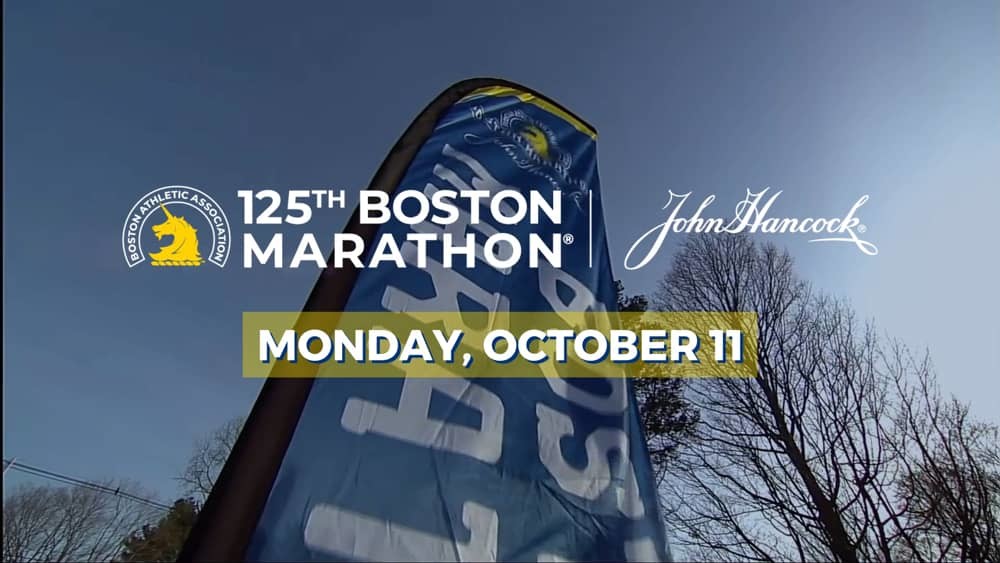
As part of the inaugural Para Athletics Divisions at the Boston Marathon, many athletes will compete for prize money and awards within the vision impaired and lower-limb impaired divisions. Among those competing are 2016 Paralympians Chaz Davis (T12), Liz Willis (T64), and marathon silver medalist and current world record holder Misato Michishita (T12) of Japan. Davis, a Massachusetts native, holds the T12 American record of 2:31:48 for the marathon, while Willis is a converted sprinter-turned-distance runner for Team USA. Also competing is Marko Cheseto Lemtukei, the world best holder for the T62 marathon having run 2:37:23 in 2019. The Boston Marathon is the first major marathon to offer prize money and awards for athletes with vision, lower-limb, and upper-limb impairments.
“In October, many of the world’s best athletes will look to etch their names in the history books by winning the 125th Boston Marathon,” said Tom Grilk, B.A.A. President and Chief Executive Officer. “We very much look forward to October’s competition, bringing together winners from more than one hundred global marathons. The B.A.A. is eager to continue the tradition of athletic excellence as we return to the roads leading to Boston.”
“John Hancock is proud to support this year’s professional field for the monumental, 125th running of the Boston Marathon,” said Kate Ardini, Chief Marketing Officer at John Hancock. “In our 36th year as principal sponsor, John Hancock is committed to supporting the world’s top athletes as they aim for greatness in Boston. We look forward to cheering on every athlete as they make their way to the finish.”
(08/12/2021) ⚡AMPby
Boston Marathon
Among the nation’s oldest athletic clubs, the B.A.A. was established in 1887, and, in 1896, more than half of the U.S. Olympic Team at the first modern games was composed of B.A.A. club members. The Olympic Games provided the inspiration for the first Boston Marathon, which culminated the B.A.A. Games on April 19, 1897. John J. McDermott emerged from a...
more...Five simple exercises to help improve your running
Just as strength athletes have a training routine tailored to them becoming stronger, and endurance athletes have a routine with a stamina focus, there are multiple exercises one can utilise in order to promote speed development. For example, you should focus on exercises that strengthen the muscles used when sprinting, as well as incorporating drills that train rapid leg movement. Practising running is not the only way to improve your performance. So what can you do? Here are five exercises that help to increase your optimal speed.
1. Mountain climber
An excellent move, as it trains the legs to move explosively, at a high cadence, while also simultaneously engaging the core muscles. Start in a push-up position with one leg straight and the other bent, with your knee under your torso. Maintaining a steady upper body, focus on explosively alternating legs for 20 seconds, with 40 seconds recovery. Repeat five or six times.
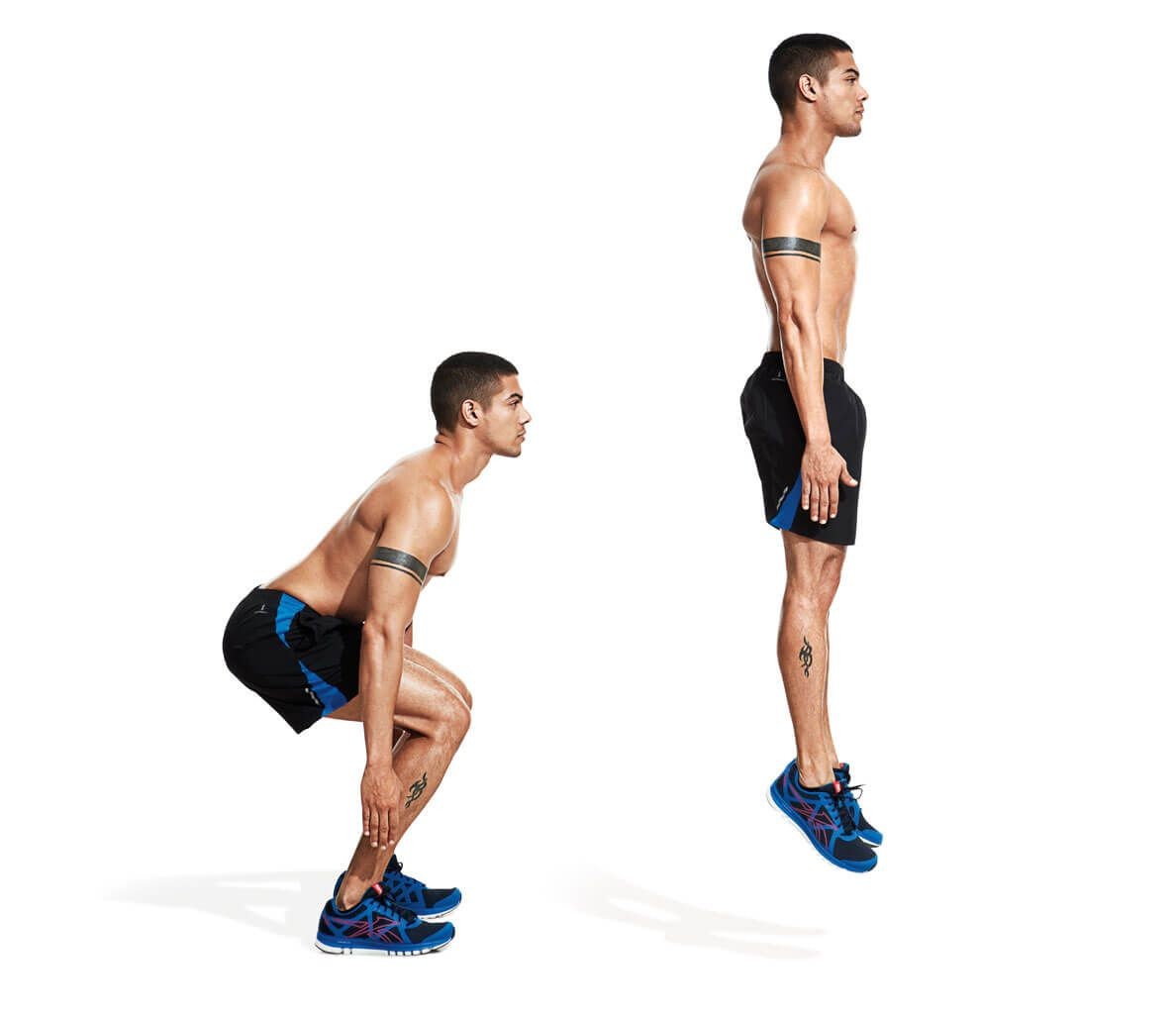
2. Vertical jump squat
Squats are probably the most effective strength training exercise for runners, engaging a great deal of the muscles used in running. This move trains similar muscle groups to a squat, but the power output is maximised. Squat down, hips back, maintaining your knees in a position behind your toes. Once you reach your lowest point, immediately jump with as much power as possible, focusing on engaging your glutes and core muscles to straighten your body as you rise. Do eight to 10 reps, rest for 60 seconds. Repeat four times.
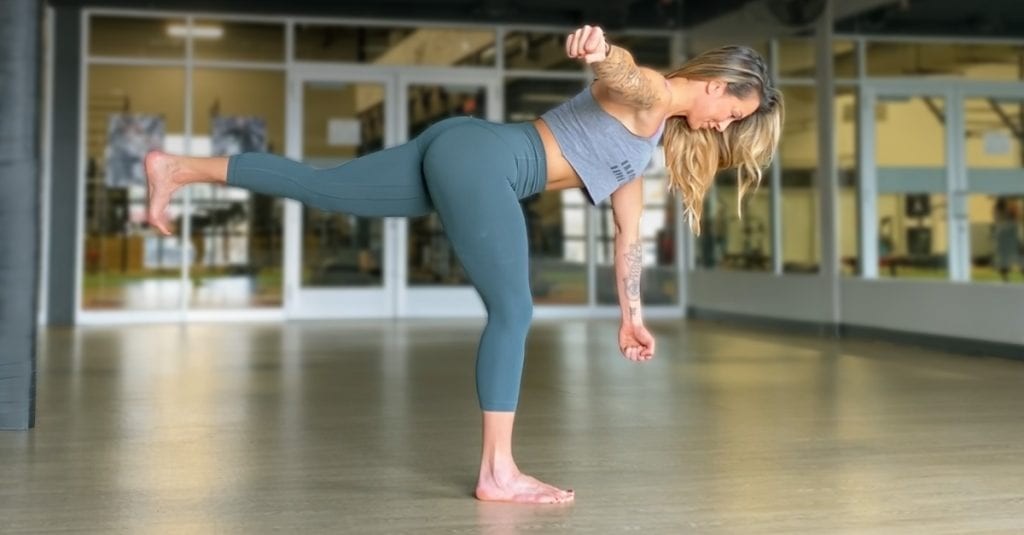
3. Single leg bound
A very effective plyometric (the term for explosive jump training) exercise, single leg bounds are basically consecutive jumps using only one leg at a time. This exercise not only forces the leg to generate a great deal of power, as the opposing leg is passive, but allows one to train force production in each leg independently.
4. Single leg balance
The foot and ankle muscles are directly involved in running at all distances so it should not be a surprise that strengthening these often neglected muscles can help in your quest to produce more power in your legs, thereby increasing your speed. Stand on one leg for 60 seconds without allowing your passive leg to touch the ground (eyes closed if you find it easier). Start on flat ground, advancing to the same exercise on an unstable surface such as a BOSU Ball. Repeat three times on each leg.
5. Single leg Romanian dead lift
This exercise is highly effective at developing speed, as it dynamically strengthens the posterior chain (the muscles on the back of the body). It is extremely common for runners to suffer from weak gluteus muscles, but this movement works these muscles, as well as the hamstrings, in a functional, explosive and highly transferable manner.
Stand tall on one leg with core engaged. Maintaining neutral spinal alignment, hinge at the hips as you lower your torso to parallel with the floor, only slightly bending at the knee. Now explosively extend the hips forward as you straighten your body to the start position, maximising contraction in your glutes and core muscles as you rise. Complete eight reps each leg. Repeat four times.
(08/12/2021) ⚡AMPby Andrew Power
Kenyan Brigid Kosgei and Ethiopian Shura Kitata to defend London marathon titles
Kenyan world record holder Brigid Kosgei and Ethiopian Shura Kitata will defend their titles at the London Marathon in October, organisers said on Thursday.
Kosgei won silver in the women's marathon event at the Tokyo Games last weekend. The 27-year-old is aiming for her third consecutive London Marathon victory.
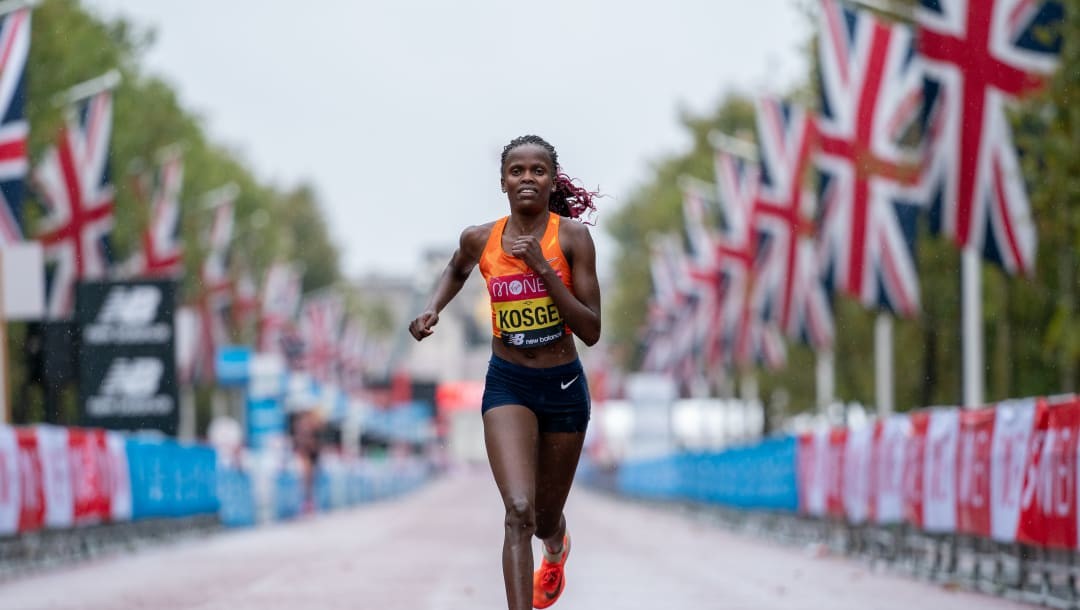
"Last year's win was very special, particularly given what the whole world was going through ... I hope to arrive again in very good shape and win for the third time," Kosgei was cited as saying in a statement from the organisers.
Kosgei set the women's marathon world record of 2:14.04 in Chicago in 2019.
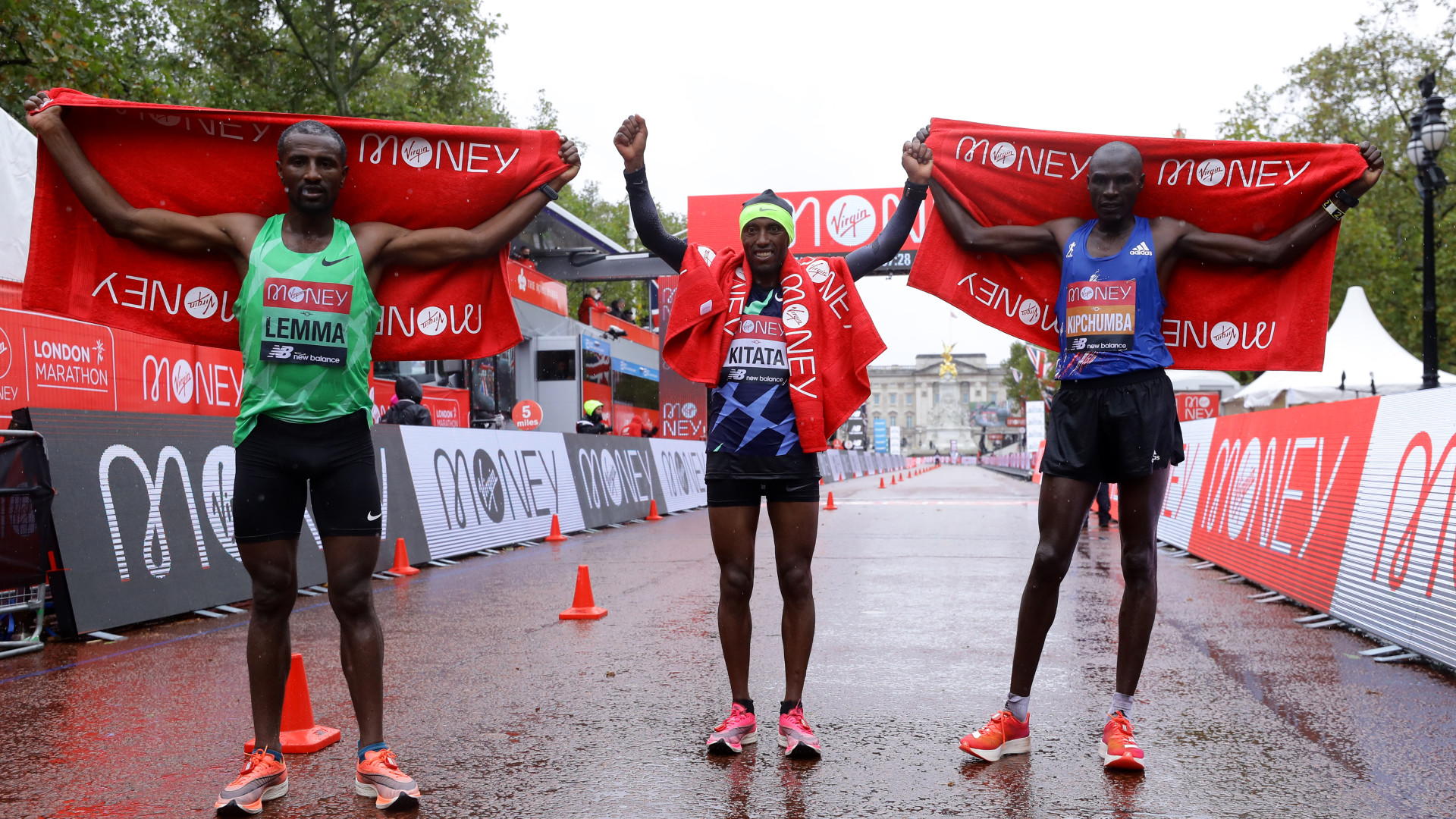
Kitata, who pulled out of the Olympic Games marathon after suffering in the hot and humid conditions in Sapporo, said he was healthy and ready to return.
"I have set my mind on how I can run fast and better than last year and I'm looking forward to seeing if I can repeat the victory and make history in the race," the statement quoted 25-year-old Kitata as saying.
The London Marathon will be held on Oct. 3.
(08/12/2021) ⚡AMPby Reuters
TCS London Marathon
The London Marathon was first run on March 29, 1981 and has been held in the spring of every year since 2010. It is sponsored by Virgin Money and was founded by the former Olympic champion and journalist Chris Brasher and Welsh athlete John Disley. It is organized by Hugh Brasher (son of Chris) as Race Director and Nick Bitel...
more...Vienna Marathon organizers do not expect any drastic rule changes that would limit outdoor events in the coming weeks
As things stand in Austria the Vienna City Marathon will go ahead on September 12. It is one month to go tomorrow and organizers do not expect any drastic rule changes that would limit outdoor events in the coming weeks.
Since July 1st the Austrian government has allowed all events to go ahead, no matter how many people are involved. The Vienna City Marathon could be one of the first major international marathons to take place since the start of the pandemic in March 2020. Organizers, who are working closely with the city to provide the required hygiene concept, have today released a number of elite runners for the men’s event. Among those who will feature in Austria’s number one road running event are Uganda’s Solomon Mutai and Betesfa Getahun of Ethiopia, who has a personal best of 2:05:28.
It was in Vienna where Kenya’s Olympic Champion Eliud Kipchoge famously broke the two hour marathon barrier in October 2019 in a race co-organized by the same team that is in charge for the Vienna City Marathon. Almost exactly two years after this phenomenal performance by Eliud Kipchoge Vienna plans to stage a marathon again.
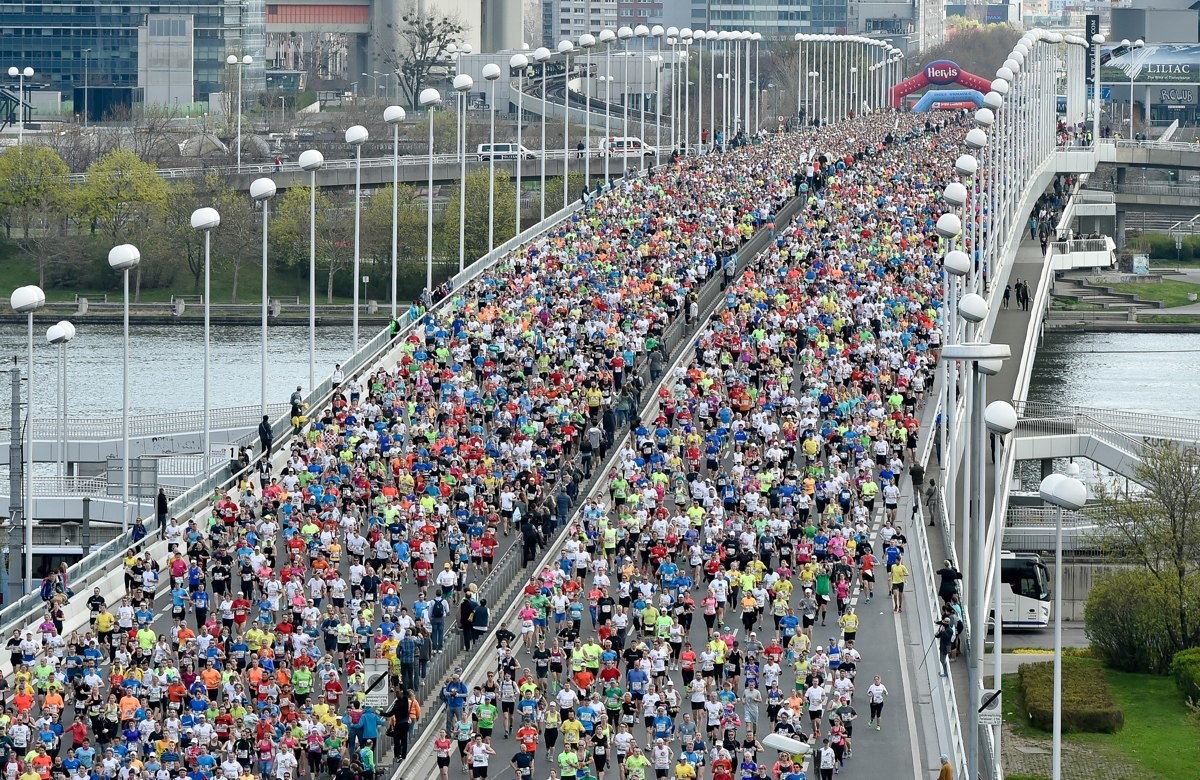
Adding races at shorter distances a total of 24,900 athletes have so far registered for the Vienna City Marathon, which will be spread over two days with some of the shorter events taking place on the Saturday. Online entry for this World Athletics Marathon Label Road Race is still possible until next Sunday.
“With their incredible performances and elegantly smooth running styles elite runners belong to the Vienna City Marathon. We are really happy that even in these extraordinary circumstances this year we will be able to present world-class sport on the streets of Vienna,” said Race Director Wolfgang Konrad.

Betesfa Getahun heads the current start list with a personal best of 2:05:28. The 22 year-old Ethiopian ran this time when finishing fourth in his marathon debut in Amsterdam in 2019. Since Vienna will only be his second marathon he will be eager to improve his PB. Among his rivals will be Kenyans Bethwell Rutto and Edwin Kosgei who clocked personal bests of 2:07:41 and 2:07:51 respectively in this year’s Siena Marathon. Solomon Mutai, who took a bronze medal in the 2015 World Championships’ marathon, will have the advantage of knowing the course when he returns to the Austrian capital. The Ugandan placed third in the Vienna City Marathon with a personal best of 2:08:25 in 2019.
A strong Japanese team will feature: Kento Kikutani improved his personal best to 2:07:26 this February in Otsu where he finished ninth. Yuta Koyama (2:08:46), Koki Yoshioka (2:10:13) and Daiji Kawai (2:10:50) are the other three Japanese who are currently in training for the race in Vienna.
Regarding mass participation organizers look ahead with confidence. “We are really happy with the interest runners are showing for our event. This is a great boost for all our activities. Two and a half years after the most recent Vienna City Marathon we are ready to go again.
When we organized smaller running events recently we already got a great response from the running community,” said Kathrin Widu, the Managing Director of the Vienna City Marathon. A recent anonymous survey among runners entered for the race showed that over 92.7% of them will compete in the Vienna City Marathon fully vaccinated.
(08/12/2021) ⚡AMPby AIMS
Vienna City Marathon
More than 41,000 runners from over 110 nations take part in the Vienna City Marathon, cheered on by hundreds of thousands of spectators. From the start at UN City to the magnificent finish on the Heldenplatz, the excitement will never miss a beat. In recent years the Vienna City Marathon has succeeded in creating a unique position as a marathon...
more...What's next for Kenyan Eliud Kipchoge after Olympics?
Retirement is the last thing in the mind of Olympic marathon men's champion Eliud Kipchoge.
This came out clearly on Wednesday when the world record marathon holder arrived at the Jomo Kenyatta International Airport (JKIA) in Nairobi from Tokyo, Japan, where he had successfully defended his Olympic maratthon crown.
In the race held last Sunday on the streets of Sapporo, Kipchoge claimed gold after timing two hours, eight minutes and 38 seconds to become only the third man to win consecutive marathon titles.
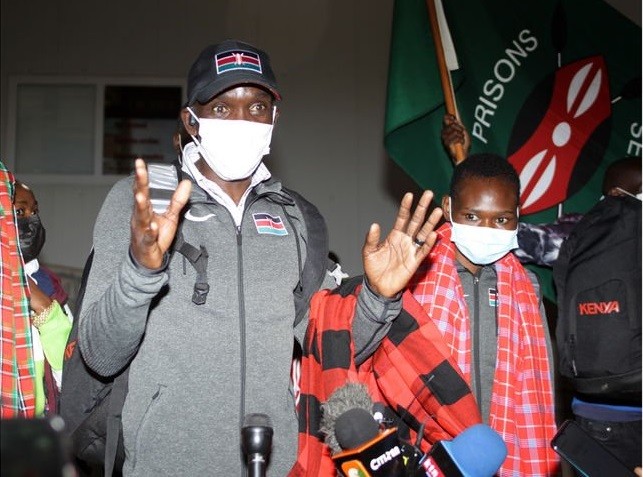
Dutchman Abdi Nageeye bagged silver in 2:09.58, while Belgian Bashir Abdi settled for bronze in 2:10.00.
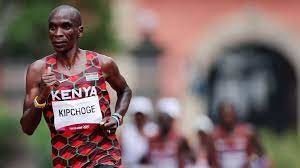
Responding to questions from journalists moments after landing at JKIA, alongside 1500m silver medalists Timothy Cheruyot and marathoner Ruth Chepngetich, the 36-year-old remained non-committal on whether he would hang his boots after the triumph in Japan.
He gave the analogy of how parents who are blessed with a baby never plan for the next one immediately, saying he will announce his next plans in one-month's time.
“I think it is good not to ask about retirement…When your wife delivered the first child, did you plan for the next one immediately?" Posed Kipchoge to a journalist, who responded in negation.
Government officials who welcomed the athletes at the airport said the event was low key due to Covid-19 containment protocols which prohibit large gatherings. They said a ceremony will be held at a later day to celebrate all the athletes who made Kenya proud in Tokyo.
Kipchoge, who has earned the title G.O.A.T. (Greatest Of All Time) from his supporters due his unmatched success in athletics, said he is not bothered by the time he posted in Tokyo, noting that winning in the Olympics is to inspire people that everything is possible.
“We trained very well, participated in a good way and got the best results…To run in the Olympics is about humanity. It is about winning and showing the world that we as human beings can do it. It is not about how fast or slow you are,” said the father of three.
The victory at the Tokyo 2020 Olympics was Kipchoge’s 13th success in the 15 marathons he has raced in since 2013. He broke the world record in 2018 when he timed 2:01.39 in the Berlin Marathon.
About his future plans, Kipchoge reiterated that he will be nurturing talents.
“I have a huge plan to inspire the youth and everybody in this world. I want to make running a Kenyan lifestyle. I want to make the young people to respect the sport, treat it like a real profession," he said.
(08/11/2021) ⚡AMPby Victor Otieno
Tokyo 2020 Olympic Games
Fifty-six years after having organized the Olympic Games, the Japanese capital will be hosting a Summer edition for the second time, originally scheduled from July 24 to August 9, 2020, the games were postponed due to coronavirus outbreak, the postponed Tokyo Olympics will be held from July 23 to August 8 in 2021, according to the International Olympic Committee decision. ...
more...2021 Tallinn Marathon will be going ahead in September
This September's Tallinn Marathon is still to go ahead, in-line with current coronavirus public event restrictions. Last year's event was cancelled.
While current restrictions limit outdoor event numbers to 12,000, provided checks are conducted, the full marathon entry list will be capped at 1,500 people, with the respective figures for the half-marathon and 10km race being 2,500 and 5,000.
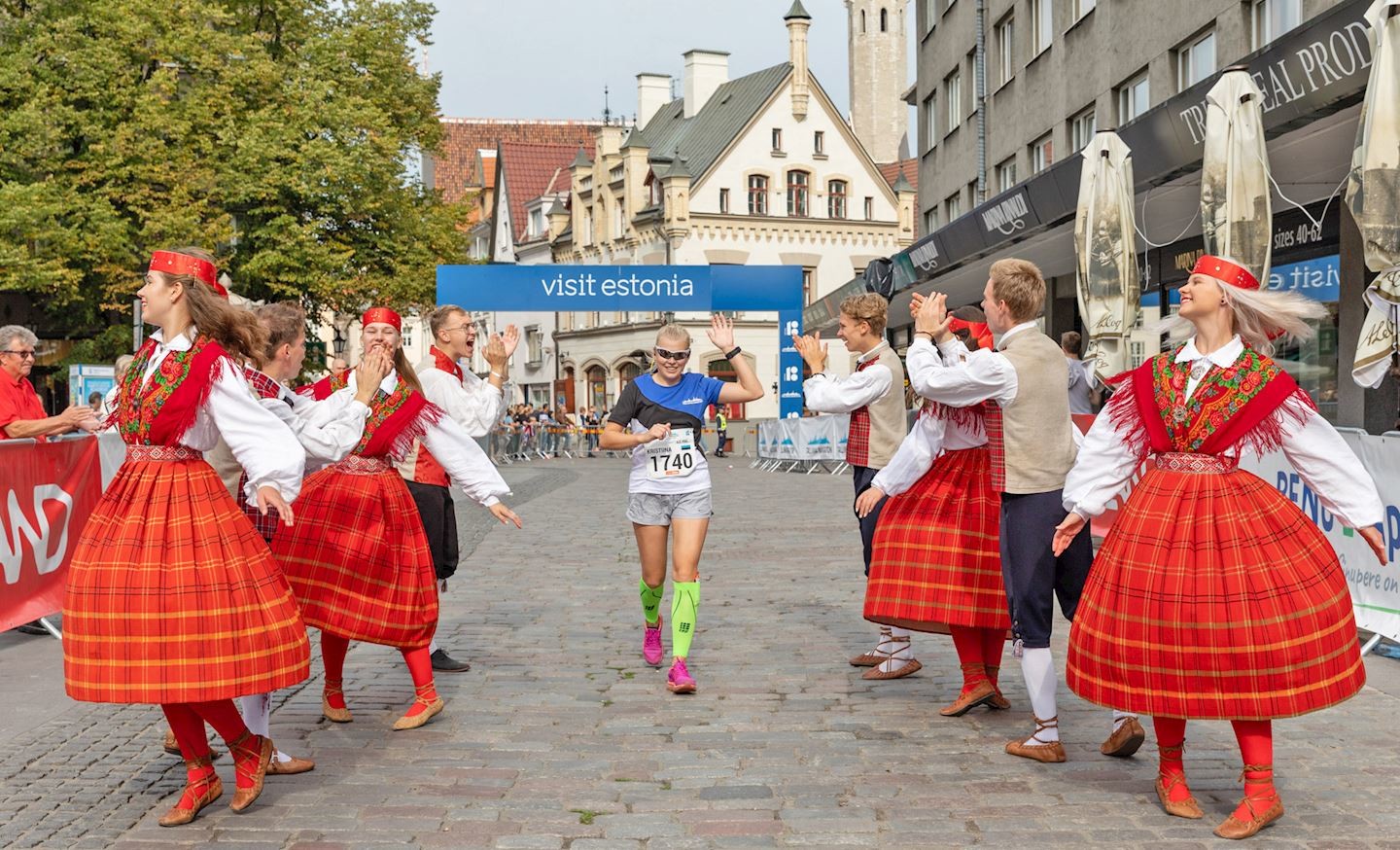
Organizers of outdoor events with more than 100 participants are currently required to conduct coronavirus vaccination checks, either via proof of vaccination or proof of a recent, negative test result.
The event takes place September 11-12, with the full marathon on the second day.
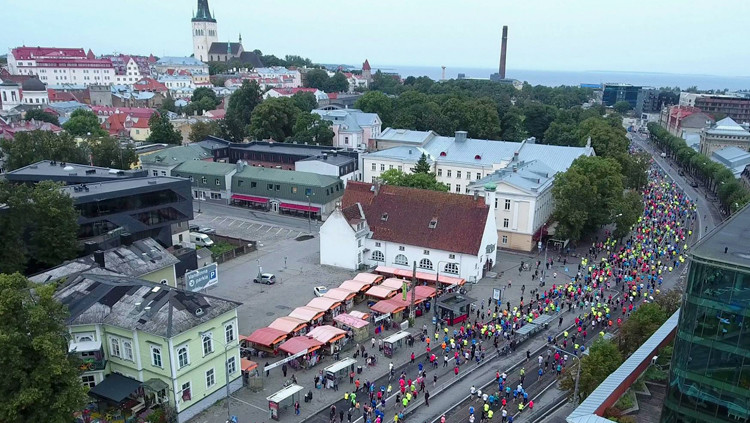
Chief organizer Mati Lilliallik said that the plan is to hold a safe event for all, including local residents, and that no excessive risks will be taken, while routes will avoid the most densely-populated residential areas.
Registration is still open, Lilliallik said, though there is a clear and present risk that additional restrictions may be imposed by authorities between now and race day, or even that the event would need to be canceled.
Organizers say they are following national government, Tallinn City Government and Health Board (Terviseamet) regulations and recommendations at all times.
The half-marathon starts at 9 a.m. on September 11, the 10km race at 5 p.m., while the full 42.2-kilometer marathon starts at 9 a.m. on Sunday, September 12.
Cancellation or restrictions which cause too many issues for entrants will be followed by full refund or transferal of entry to the 2022 event, BNS reports, or alternatively entry into the virtual marathon – held for the first time last year – which runs throughout the entirety of September, i.e. participants get 30 days to complete the 42.2km on foot, either running or walking.
Last weekend brought around 2,600 triathletes to Tallinn, to take part in the annual Iron Man event.
(08/11/2021) ⚡AMPby
Tallin Marathon
The Tallinn Marathon has won a sure place in the competition calendar of runners and has become an attractive destination for running tourists looking for new experiences. About 20 000 running enthusiasts from 56 different countries participated in the 2017 event. As a tradition, the marathon will take place in every second Sunday of September, this year 9th of September,...
more...US sprint star Cameron Burrell has dies at age 26 in an unexplained incident
Cameron Burrell, the fastest college athlete in the US and the son of Olympic gold medal-winning parents, died on Monday at the age of 26.
Burrell had become a national champion after winning the National Collegiate Athletic Association’s (NCAA) individual national championship in 100 metres in 2018 at the University of Houston, equaling his father Leroy Burrell’s accomplishment 28 years earlier.
Leroy Burrell, who is a track and field coach at the University of Houston and a gold-medal sprinter, said the family is going through “profound sorrow” over the death of his son.
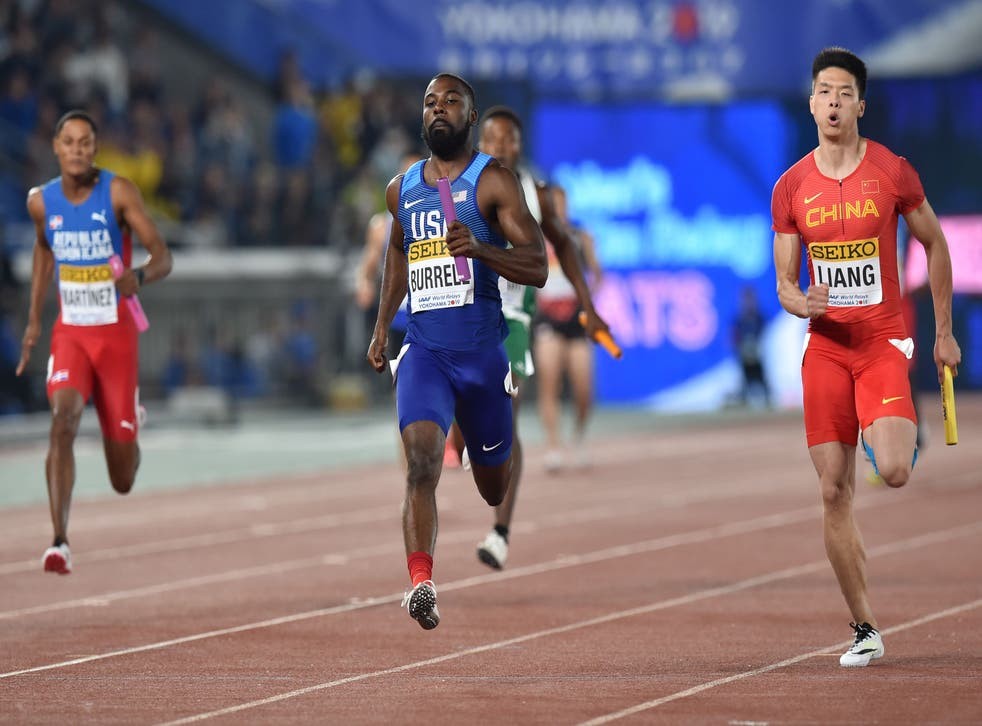
“My family is extremely saddened with the loss of our son, Cameron, last night,” Leroy said in a release on Tuesday. “We are going through profound sorrow and ask that all of our friends, extended University of Houston family and the track and field community in the US and abroad allow us to gather with our closest family and friends. We are profoundly grief stricken, and thank everyone for the outpouring of prayers and support.”
The cause of Burrell’s death has not been revealed, but medical records accessed by TMZ indicate he died in a parking garage. Further details surrounding the death remain unknown.
The University of Houston announced his death on Tuesday while describing him as one of the university’s best track and field athletes.

“Words cannot express how we feel for Leroy, Michelle and their family. Cameron grew up around the Houston Athletics Department, worked hard and developed himself into one of our greatest Track and Field stars,” university athletics director Chris Pezman said in a release.
“To lose him so suddenly is tragic. We ask all University of Houston and track and field fans to keep Coach Burrell and his family in their thoughts and prayers.”
The sudden demise of a budding professional athlete has shocked those around him. He was believed by many to be following in the footsteps of his father and his godfather Carl Lewis, a legendary track star and nine-time Olympic gold medalist.
Burrell was a member of the Houston Cougars track and field team from 2013-18. In the same season he equaled his father’s accomplishment, the Atlanta native ran the anchor leg for the Cougars in a 4x100m relay team event, successfully defending its NCAA championship.
(08/11/2021) ⚡AMPby Shweta Sharma
Former world marathon champion Geoffrey Kirui will lead stellar field for October's Boston Marathon
Geoffrey Kirui will be the man to beat at this year's Boston Marathon slated for October 11.
Kirui, who won the event four years ago, will be seeking to capture a second title on the famous street in Boston.
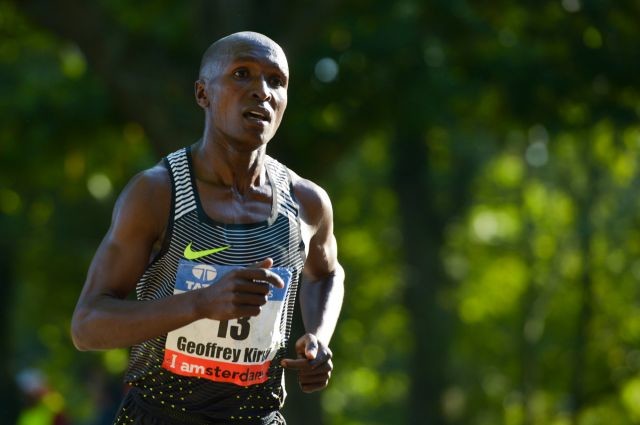
“Last year was a tough one for everyone. Boston is, for me, the exact right motivation and light at the end of the tunnel, as it will be for all returning champions and participants. This is the marathon where I feel at home, and I have big dreams for October,” Kirui said.
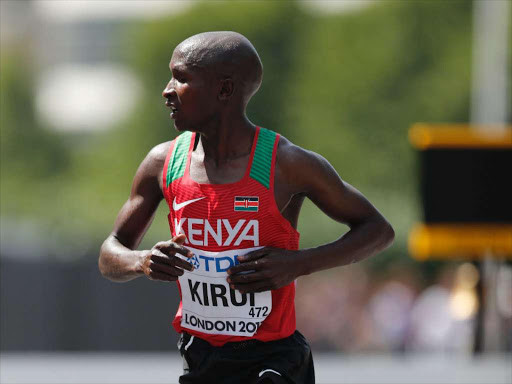
Others to look for out are Lemi Berhanu from Ethiopia, best known for skipping across the Boylston Street finish en-route to winning in 2016.
Yuki Kawauchi, winner of more than 30 international marathons and the Japanese record holder in the 50K, looks to become the first man from Japan since Toshihiko Seiko in 1987 to earn two Boston Marathon titles.
(08/11/2021) ⚡AMPby William Njuguna
Boston Marathon
Among the nation’s oldest athletic clubs, the B.A.A. was established in 1887, and, in 1896, more than half of the U.S. Olympic Team at the first modern games was composed of B.A.A. club members. The Olympic Games provided the inspiration for the first Boston Marathon, which culminated the B.A.A. Games on April 19, 1897. John J. McDermott emerged from a...
more...P3R and DICK’S Sporting Goods have signed a new multi-year partnership as title partner of the Pittsburgh Marathon weekend of events
DICK’S Sporting Goods Signs Multi-Year Partnership with P3R as Title Partner of the Pittsburgh Marathon Weekend of Events scheduled for April 29 - May 1, 2022.
“DICK’S Sporting Goods is a foundational partner of ours and makes this incredible weekend of events possible with their continued support,” said Troy Schooley, P3R CEO. “Our partnership is unique because DICK’S Sporting Goods understands the importance of our mission to encourage any and all to move with us, and through this partnership we get to see thousands of runners hit their next goal.”
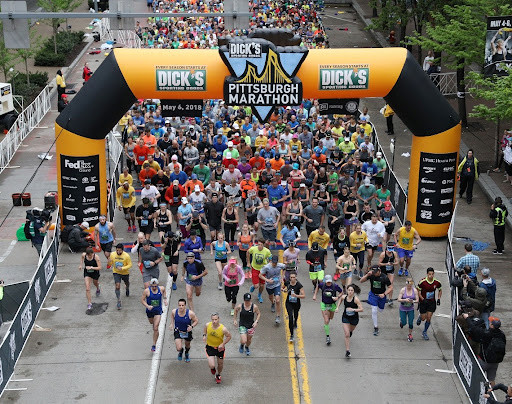
Through this partnership, DICK’S Sporting Goods will continue to be the title partner of the DICK’S Sporting Goods Pittsburgh Marathon Weekend of Events. DICK’S also will continue to support and grow participation in Kids of STEEL, a free training program that motivates families and kids across more than 180 schools in Western Pennsylvania to get moving and make healthier choices.
“We are excited to continue to support the running community of Pittsburgh and this great event,” said Mark Rooks, DICK’S Sporting Goods Vice President of Community Marketing. “Our partnership with P3R allows us to support runners of all ages in our local community. Partnering together on the marathon and other programs, like Kids of STEEL, not only allows us to support our local community, but supports our mission of helping youth athletes participate in sports.”
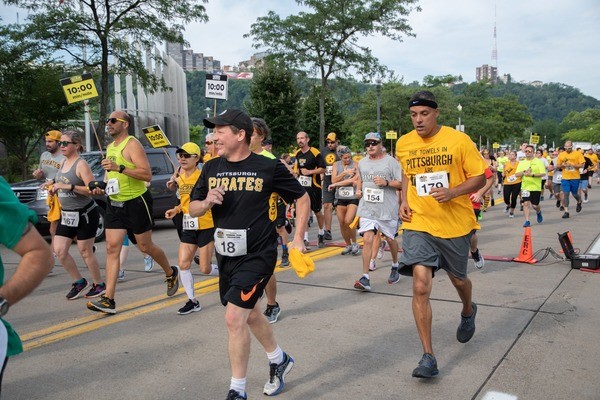
Last year, the weekend of events introduced a second half marathon course exclusively for the Run for a Reason Charity Program that organizers were unable to execute due to COVID-19. In 2022, those runners who earned their way into this exclusive start line by fundraising $1,500 for an official charity of their choice will have the first opportunity to run this brand new course.
500 participants will experience the first ever start line in Shadyside, as well as a full red carpet experience, unique medal and special race day bib. Learn more about registering as a charity runner here.
It has been two years since the event was in person, and P3R, DICK’S Sporting Goods, as well as the entire Steel City, are excited to welcome runners back to the start line for 2022.
Runners will be able to register for the 2022 weekend of events starting August 11 at the current early bird rate of $95. Learn more at thepittsburghmarathon.com.
About DICK’S Sporting Goods
Founded in 1948, DICK'S Sporting Goods is a leading omni-channel sporting goods retailer offering an extensive assortment of high-quality sports equipment, apparel, footwear and accessories. As of July 31, 2021, the company operated 731 DICK'S Sporting Goods locations across the United States, serving and inspiring athletes and outdoor enthusiasts to achieve their personal best through a combination of its dedicated teammates, in-store services and unique specialty shop-in-shops dedicated to Team Sports, Athletic Apparel, Golf, Outdoor, Fitness and Footwear.
Headquartered in Pittsburgh, DICK’S also owns and operates Golf Galaxy and Field & Stream specialty stores, as well as GameChanger, a youth sports mobile app for scheduling, communications, live scorekeeping and video streaming. DICK'S offers its products through a dynamic eCommerce platform that is integrated with its store network and provides athletes with the convenience and expertise of a 24-hour storefront. For more information, visit the Investor Relations page at dicks.com.
(08/10/2021) ⚡AMPby Running USA
Dick's Sporting Good Pittsburgh Marathon
This race is your game - however you decide to play it. As a competitor. A fund raiser. An enthusiast. A veteran. A team player. It's whatever you want it to be. It's whatever you make it. It's YOUR game..... Run it. Play it. Own it. Love it. Runners will race on the North Shore of Pittsburgh, cross each of...
more...What side of the road should you run on?
Lacing up your running shoes and heading out for an early-morning run is not only an effective way to keep in shape, but it also helps clear your mind for the busy workday ahead.
Despite this activity's fitness benefits, you're putting yourself at risk if you aren't aware of your surroundings -- especially while running in a high-traffic area. Choosing the correct side of the road for your run increases your chance of staying safe.
Always Face Traffic
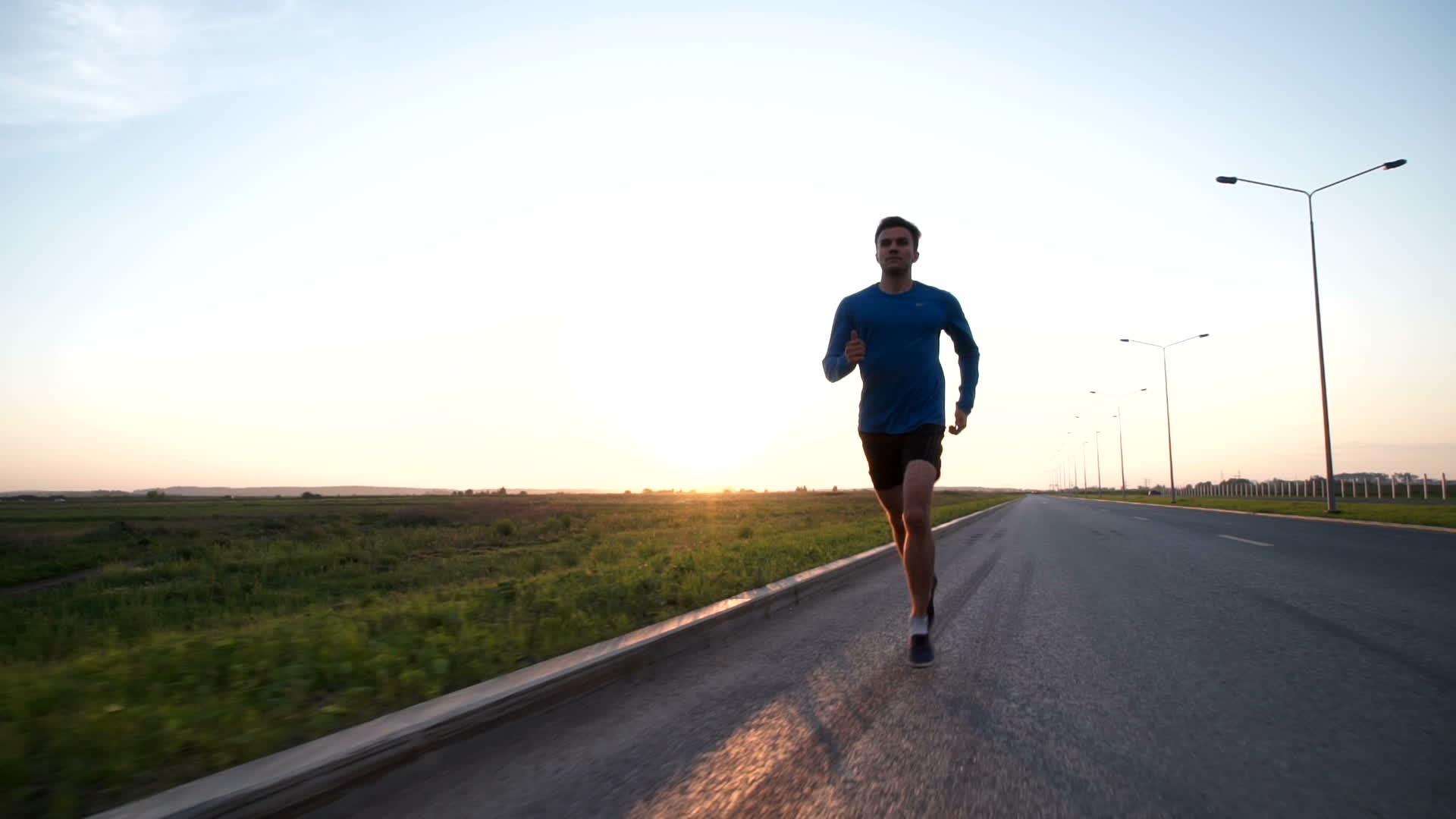
When running along the side of the road, the Road Runners Club of America recommends always running against traffic. Labeling the side you use as the right or left side depends on your direction, but the key is to always move in a direction so that oncoming traffic is headed straight toward you. Running in this manner gives you the ability to monitor approaching vehicles and quickly move away from the road if a vehicle is traveling quickly or too closely to the side of the road.
Running Considerations
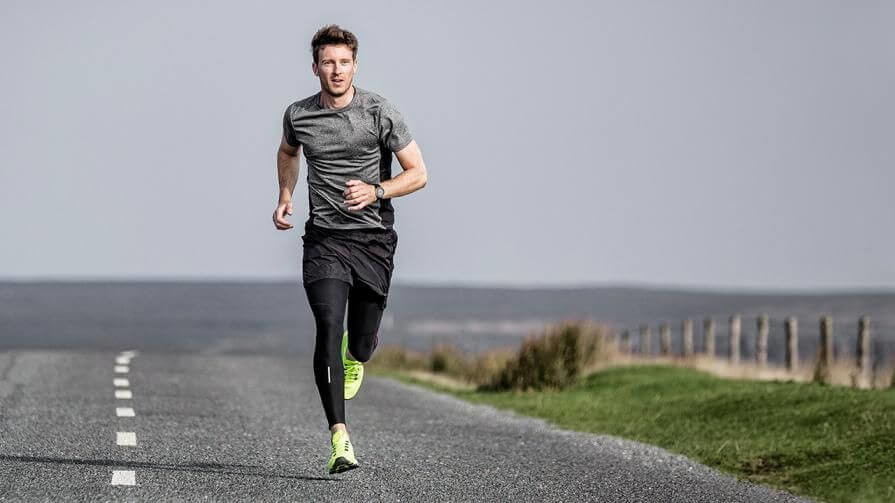
Don't just assume that you'll be safe because you've chosen to run on the correct side of the road. Keep as far away from the lane as possible, be especially alert at intersections and low-visibility corners, and always stop at busy intersections and crosswalks. If you run with a partner or a group, run no more than two people wide. When you encounter an area with a trail or path adjacent to the road, use this area for increased safety.
Visibility
Ensuring you're visible when you run along the side of the road is always important, but it becomes even more crucial when you run in low-light conditions. Dress in clothing with reflective panels or stripes; if you don't have such attire, affix a reflective strip or blinking light to your body or carry a flashlight. Avoid the temptation to listen to music as doing so can affect your ability to hear approaching vehicles. If possible, find a trail or track on which to run at night or early in the morning instead of the road.
Running Health Benefits
Provided you run on the correct side of the road and take the necessary safety precautions, running can be a useful exercise to add to your fitness routine. The activity has numerous benefits, from building strong bones to burning calories to even uplifting your mood. Aerobic exercises such as running, when you perform them regularly, can contribute to a greater quality of life and even increase your life expectancy.
(08/10/2021) ⚡AMPby William McCoy
Great Britain's Keely Hodgkinson will be targeting Paris 2024 gold
Great Britain's Keely Hodgkinson has set her sights on upgrading her 800m silver in 2021 to gold at the next Olympics in Paris in three years' time.
The 19-year-old broke Kelly Holmes' British record en route to claiming second place in the 800m in Tokyo.
"I want to turn this into a gold one day, that's the long-term goal in Paris," she told BBC Breakfast.
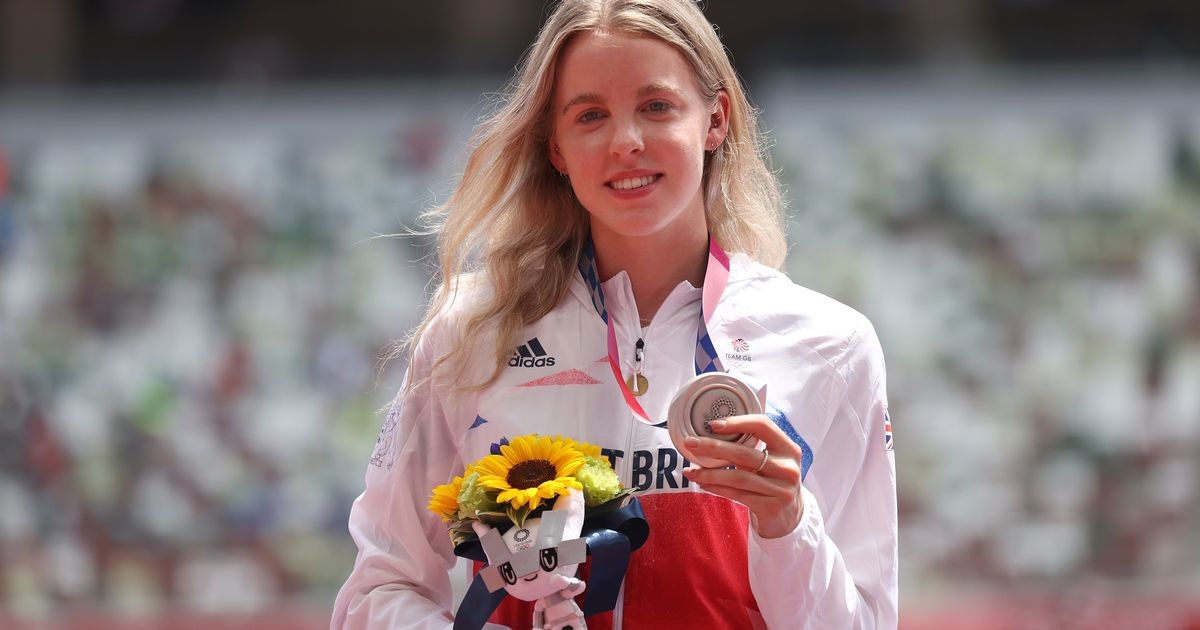
"I'm just going to carry on doing what I am doing because that is what has got me here."
Hodgkinson began 2021 aiming to add a European junior gold to the youth title she won in 2018, however a first sub-two minute time in January followed by European indoor gold and an impressive victory in Ostrava made her re-evaluate her plans.

In June, she surged past Laura Muir and Jemma Reekie to defend the national title she won against a weaker field 12 months earlier and book her place on the plane to Tokyo.
"I didn't really think about the enormity of it," said Hodgkinson of her Olympic final.
"I was most relaxed in the final because you have made it there, it is more the heats and the semi-finals where you get nervous.
"I just wanted to enjoy it because that is the biggest stage I have been on."
Hodgkinson was beaten to gold by another 19-year-old - Athing Mu of the USA - and their rivalry seems likely to be witnessed for years to come.
"Athing is a lovely girl and a great athlete," added Hodgkinson on BBC Radio 5 Live.
"To have two 19-year-olds on the podium was quite something I think, it bodes for a very bright future.
"We all get on really well, they are lovely girls and we have the utmost respect for each other. I think we are just going to push each other on throughout the years."
(08/10/2021) ⚡AMPby Athletics Weekly
Paris 2024 Olympic Games
For this historic event, the City of Light is thinking big! Visitors will be able to watch events at top sporting venues in Paris and the Paris region, as well as at emblematic monuments in the capital visited by several millions of tourists each year. The promise of exceptional moments to experience in an exceptional setting! A great way to...
more...Full steam ahead for Sanlam Cape Town Marathon
The organizers of the Sanlam Cape Town Marathon have confirmed that the planning for the event is full steam ahead and that the plans have seen a major overhaul to ensure the safety of all participants.
“Following extensive consultations and detailed review with the City of Cape Town, Athletics South Africa and National Government, we developed and presented an extensive COVID-19 Risk Mitigation Plan for the event, and received their full support to go ahead with our planning of a safe and enjoyable race on October 17,” confirms Renee Jordaan, Sanlam Cape Town Marathon Race Director.
The risk mitigation plan includes several adjustments to this year’s event format.
Marathon entries will be limited to 12,000 runners only.

The Start will move from Beach Road to Fritz Sonnenberg Road, with participants joining their start batches on the Cape Town Stadium Forecourt.
A staggered start will see runners setting off in seeded batched groups, allowing for ample social distancing, between 06h15 and 06h50.
Seeding will be based on past race results, not limited to the Sanlam Cape Town Marathon.

Runners’ finishing time will be calculated from mat-to-mat and not gun-to-mat.
The final cut-off is still six-and-a-half hours, and will be based on the last group of runners starting the race.
In order to reduce the risk of COVID-19 transmission, all runners and crew will undergo COVID-19 Antigen testing in the 72 hours prior to the race. Testing will be compulsory regardless of vaccination status, and free of charge. Runners will be tested at Cape Town Stadium before entering the Expo space to collect their race numbers. Antigen test results will be available within 15 minutes.
“Due to COVID restrictions, we are sadly required to cancel the 5km and 10km Peace Runs, but the good news is that these events will take place in virtual format, and runners can run the Peace Runs along their favorite running routes, no matter where they are. The all-new 46km Cape Town Trail Marathon and 22km Trail Run will still go ahead on October 16,” says Sanlam Cape Town Marathon General Manager, Barry van Blerk.
The 5km & 10km Virtual Peace Runs will be free of charge. Runners can simply enter via www.capetownmarathon.com to receive App Download instructions. All 5km and 10km Peace Run entrants will receive a refund, and an email with detailed instructions will be sent to all affected runners.
Says Sanlam Cape Town Marathon Chairman, Francois Pienaar: “After a trying 18 months, we are grateful for the support from our major stakeholders that allows us to work towards staging Africa’s only World Athletics Gold Label marathon and the ASA Marathon Champs. The Sanlam Cape Town Marathon attracts thousands of athletes from across SA, Africa and the globe, and has a significant economic impact on the city. Africa is our home. This is our Race. And we can’t wait to welcome all our runners to Cape Town in October.”
Runners still hoping to be part of the Sanlam Cape Town Marathon must hurry, as the revised entry limits mean that the marathon field is already 50% full, and it is expected that the remaining entries will be snapped up fast. The 22km Trail Run is sold out, with limited entries still available for the Trail Marathon. Visit www.capetownmarathon.com for more information and to enter.
(08/10/2021) ⚡AMPby AIMS
Cape Town Marathon
The Sanlam Cape Town Marathon is a City Marathon held in Cape Town, South Africa, which is sponsored by Sanlam, the City of Cape Town and Vital Health Foods. The marathon is held on a fast and flat course, starting and finishing in Green Point, near the Cape Town Stadium. Prior to existing in its current format, the Cape Town...
more...Belarus sprinter Krystina Timanovskaya did not go home from Tokyo but to Poland
Krystina Timanovskaya was being forced to return home early after publically criticizing her coaches. Fearing for her safety, she cried out for help.
While the last athletes left in the Olympic village have now returned to their home countries, Belarusian sprinter Krystina Timanovskaya has instead gone to Poland, after she was nearly forced home early for criticizing her coaches. Fearing for her safety, she called out for help from the IOC and from Japanese police, and on Wednesday she flew to Warsaw instead of returning home.

The situation began to unfold on Sunday, Aug. 1, one day before Timanovskaya was due to compete in the women’s 200m. After a couple of Belarusian athletes were deemed ineligible to compete, her coaches entered her in the 4 x 400m relay, an event the 24-year-old had no experience in. She complained about the situation in a video on social media, which led to criticism by the Belarus media, which claimed she lacked team spirit.

A report by the BBC says it wasn’t long after that that Belarusian officials arrived at the sprinter’s room, telling her to pack her bags. Reportedly, the order to send her home had come from “high up” in Belarus. In a news conference in Warsaw, Timanovskaya said her grandmother warned her not to return home “because on TV, they say a lot of bad words about you, that you have some mental problems.” Her parents also warned her not to return, telling her the citizens were being encouraged to write hateful messages about her on social media.
Fearing she may face punishment back home, she managed to use Google Translate to get help from Japanese officials at the airport and has now fled to Poland, where she has been granted a visa. Her husband has also fled to Ukraine and is expected to join her in Poland shortly. According to the BBC, Timanovskaya’s main concern now is the safety and well-being of her family, who are still in Belarus.
In an interview with Reuters, the sprinter said her coaches did not expect that she’d be able to approach police at the airport. “They think that we are scared to make a move, that we are afraid to speak, afraid to tell the truth to the whole world. But I am not afraid,” she said. “I am not of those people who are scared.”
She would, however, like to go home. “I would want to return to Belarus. I love my country. I did not betray it and I hope I will be able to return,” she said.
There were a few other Belarusian Olympians who had already been prosecuted or jailed, or who fled for publicly voicing their opposition to the country’s leader, Alexander Lukashenko, but Timanovskaya was not among them. According to the BBC, the IOC has started an investigation into the case, and already two Belarusian coaches have lost their Olympic accreditations for attempting to force Timanovskaya to leave the Games. The investigation is still ongoing.
(08/09/2021) ⚡AMPby Brittany Hambleton
Tokyo 2020 Olympic Games
Fifty-six years after having organized the Olympic Games, the Japanese capital will be hosting a Summer edition for the second time, originally scheduled from July 24 to August 9, 2020, the games were postponed due to coronavirus outbreak, the postponed Tokyo Olympics will be held from July 23 to August 8 in 2021, according to the International Olympic Committee decision. ...
more...

